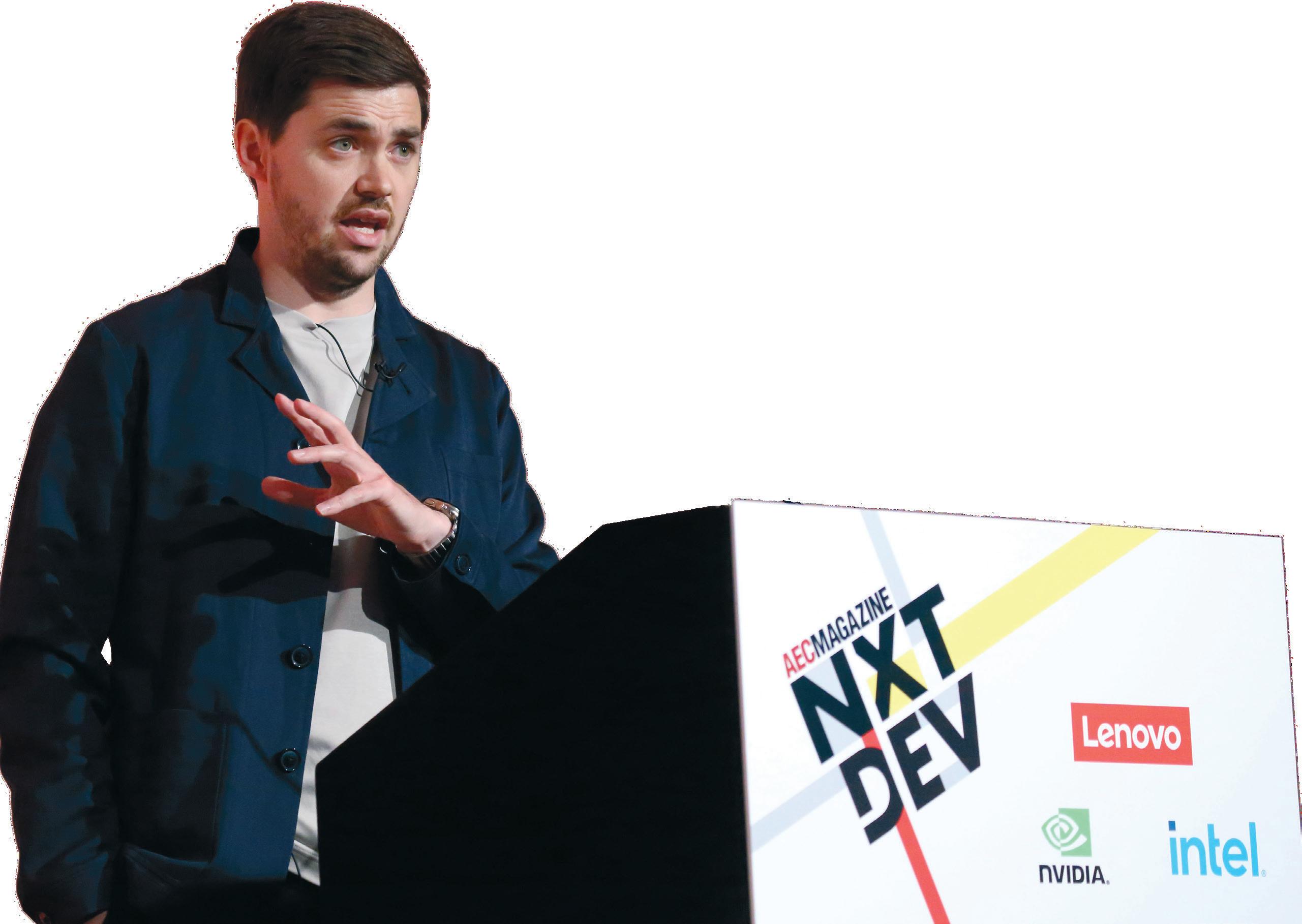
Building Information Modelling (BIM) technology for Architecture, Engineering and Construction AARON PERRY // AHMM FUTURE DESIGN SOFTWARE SPECIFICATION THE
SPECIFICATION
TOOL KIT INITIAL DRAFT REPORT FUTURE DESIGN SOFTWARE SPECIFICATION THE AEC SPECIFICATION FOR A MODERN DIGITAL DESIGN TOOL KIT INITIAL DRAFT REPORT JUNE 2023 BY UK LARGE FIRMS [OPEN FOR PUBLIC INPUT FROM 3RD JULY 2023] The AEC industry’s software wish list Loud & clear July /August 2023 >> Vol.127
AEC
FOR A MODERN DIGITAL DESIGN


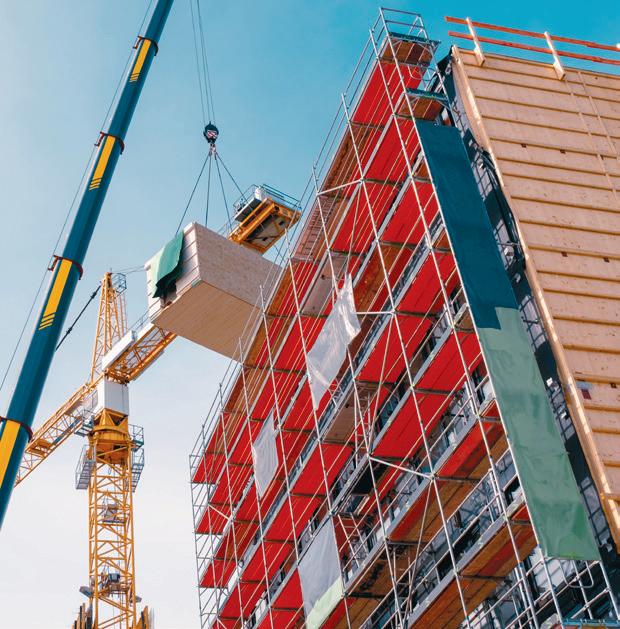



THE FUTURE OF AEC technology Register @ www.nxtbld.com TIM FU TIM FU SILVER SPONSORS GOLD SPONSORS Bricsy s VIEW FREE



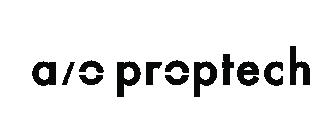


THE FUTURE OF AEC software development Register @ www.nxtdev.build SILVER SPONSORS GOLD SPONSORS ON-DEMAND
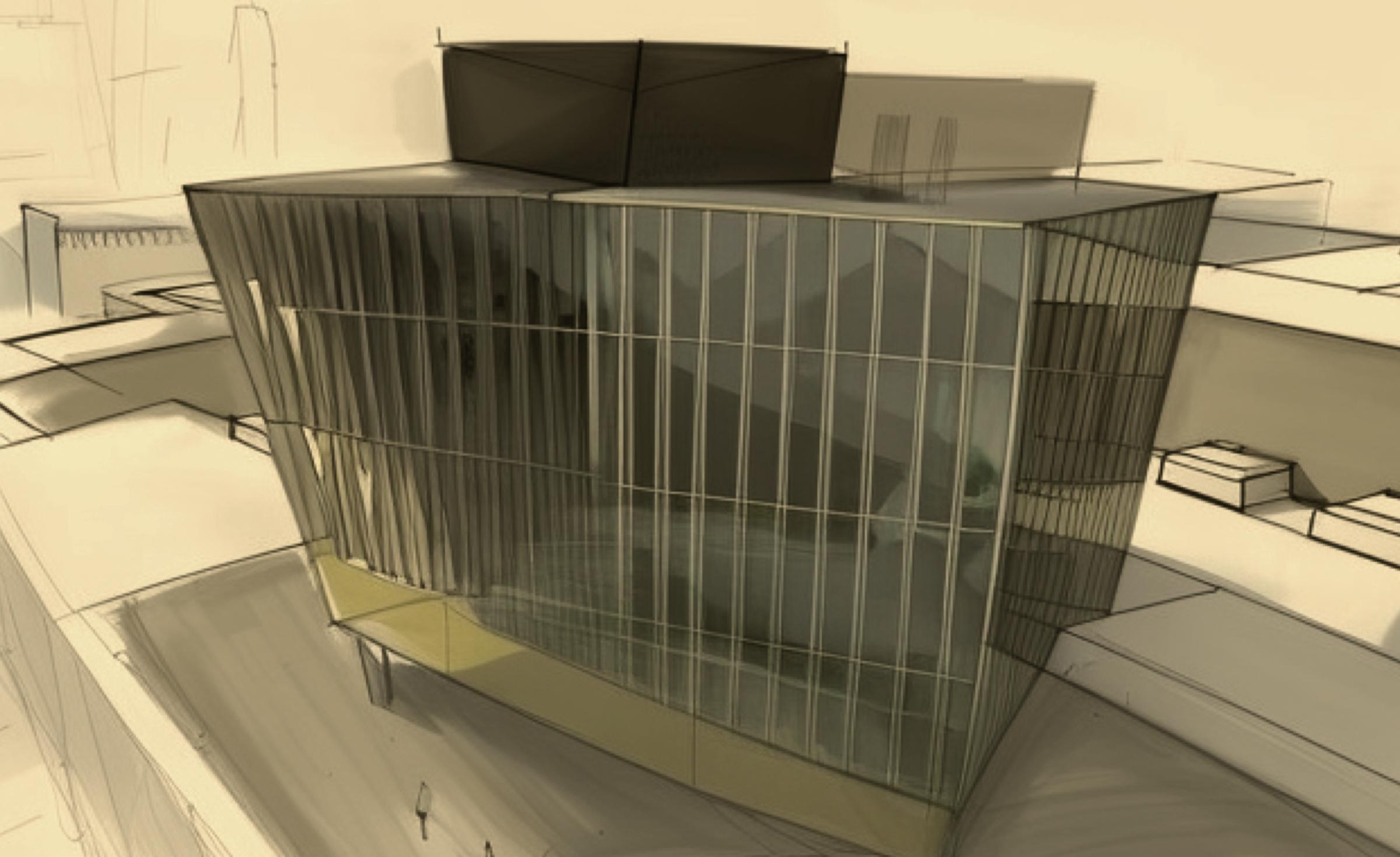
CONSULTING
CONSULTING EDITOR STEPHEN HOLMES stephen@x3dmedia.com
advertising GROUP MEDIA DIRECTOR

TONY BAKSH tony@x3dmedia.com
ADVERTISING MANAGER STEVE KING steve@x3dmedia.com
U.S. SALES & MARKETING DIRECTOR DENISE GREAVES denise@x3dmedia.com subscriptions MANAGER ALAN CLEVELAND alan@x3dmedia.com
CHARLOTTE TAIBI charlotte@x3dmedia.com
FINANCIAL CONTROLLER
SAMANTHA TODESCATO-RUTLAND sam@chalfen.com
Industry news 6
Reality Cloud Studio to ‘democratise reality capture’, Hexagon to connect office and site, Chaos Vantage 2.0 boosts realtime ray tracing, plus lots more
The future AEC software specification 12
At NXT DEV, Aaron Perry of AHMM, backed by many global firms, presented a wish list of what leading edge BIM practices want from next generation tools
NXT BLD / NXT DEV on-demand 18
NXT BLD was followed this year by NXT DEV, a conference dedicated to the future of AEC software. All 40 presentations from both events can now be viewed on-demand
Will AI design your next building? 32
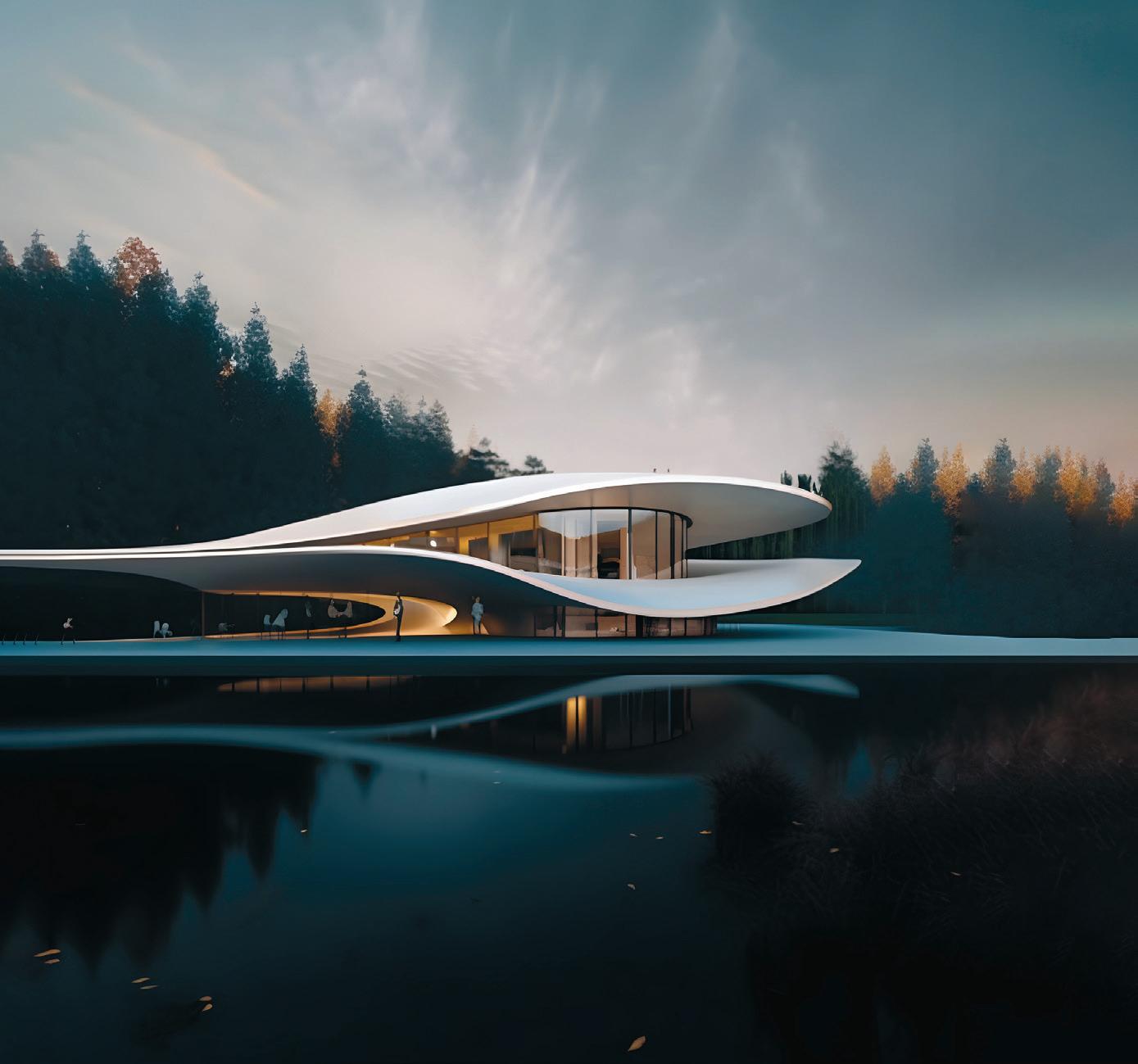
Will AI take architects’ jobs too, or will it make them more fulfilling instead? asks Akos Pfemeter, VP, technology partnerships at Graphisoft
Revizto reflections 34
We caught up with Revizto’s CEO to discuss the company’s origins, development path and latest release
Tandem: dashboards 38
Autodesk has added new dashboarding capabilities to Tandem for obtaining all sorts of metrics from digital twins
Nvidia RTX 4000 SFF Ada Generation 40
Nvidia’s new compact workstation GPU delivers in all types of AEC workflows, but there’s a premium to pay
AMD Radeon Pro W7900 & W7800 44
AMD’s new workstation GPUs can’t outpace the Nvidia RTX 6000 Ada, but they can compete on price/performance
AMD Ryzen X3D
AMD’s new Ryzen CPUs with 3D V-Cache deliver a performance boost in 3D games, but what do they offer AEC professionals?
5 www.AECmag.com July / August 2023
48
Building Information
FREE SUBSCRIPTIONS Register your details to ensure you get a regular copy register.aecmag.com editorial MANAGING EDITOR
Modelling (BIM) technology for Architecture, Engineering and Construction
GREG CORKE greg@x3dmedia.com
EDITOR
MARTYN DAY martyn@x3dmedia.com
accounts
AEC Magazine is available FREE to qualifying individuals. To ensure you receive your regular copy please register online at www.aecmag.com about AEC Magazine is published bi-monthly by X3DMedia Ltd 19 Leyden Street London, E1 7LE UK T. +44 (0)20 3355 7310 F. +44 (0)20 3355 7319 © 2023 X3DMedia Ltd All rights reserved. Reproduction in whole or part without prior permission from the publisher is prohibited. All trademarks acknowledged. Opinions expressed in articles are those of the author and not of X3DMedia. X3DMedia cannot accept responsibility for errors in articles or advertisements within the magazine. 18 IMAGE COURTESY OF TIM FU
Reality Cloud Studio to ‘democratise reality capture’
Gamma AR integrates with BIMcollab
Gamma AR, a tool that brings BIM models to the job site through augmented reality, is now integrated with BIMcollab, the issue management and model validation software.
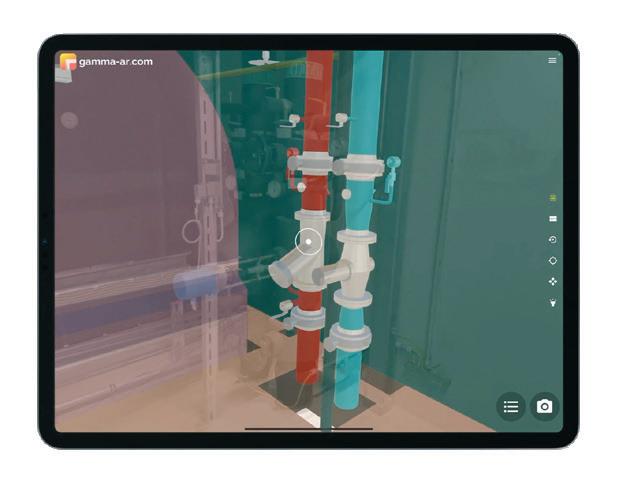
The integration allows BIMcollab users to integrate issues created in Gamma AR with their existing workflows.
According to Gamma AR, the integration helps firms address several ‘pain points’ – mistakes and subsequent rework, as well as duplicative documentation and follow-up tasks.
Hexagon has launched Reality Cloud Studio, powered by HxDR (Hexagon Digital Reality), a SaaS application designed to expand access to reality capture data.
Users upload reality capture data to the cloud for automated processing, storing and visualisation to create what Hexagon describes as ‘photorealistic digital twins’, and to share data quickly and securely.

Reality Cloud Studio can be accessed from any computer or mobile device with a web browser. Users on site can upload data directly from compatible reality
sensors to create ‘registered and meshed digital twins’ for use on-site.
Reality Cloud Studio features automated registration and meshing of point clouds. Users can collaborate in real-time with measurements, annotations, attachments, comments and ‘virtual tours’. For more advanced workflows, data can be streamed directly from the cloud application into the Cyclone 3DR desktop software for detailed analysis and reporting — with more Leica Geosystems reality capture software connections coming soon.
■ www.hxdr.com/reality-cloud-studio
Hexagon to connect office and site
In a second major announcement from Hexagon this month the company has introduced HxGN AEC Project Viewer, a cloud-based software designed to make it easy to visualise, federate and control project data.
The software connects model, schedule, and document management processes with a view to improving visibility, collaboration, and communication in construction projects. It supports the transition from 3D models to 5D construction management by adding time and cost insights.
“To visualise progress and identify changes, AEC Project Viewer can serve as a single pane of glass for office and field teams,” said Kevin Holmes, VP of building solutions at Hexagon
Geosystems. “Design or schedule updates are effectively visualised to ensure that they are easily understood and actionable for project stakeholders and team members. Our cloud solution will enable construction companies of all sizes to take an important step towards BIM-based construction processes,”
Project teams can upload native models (RVT and IFC) and schedule files (MSP XML, XLS), compare models and identify what has changed and why, schedule revisions, and connect with several leading Common Data Environments (CDEs). It also acts as a document repository, supporting more than twenty document formats (DWG, PDF, etc.) for collaboration, review and markup.
■ www.hexagon.com/products/hxgn-aec-project-viewer
Gamma AR uses phones or tablets to overlay BIM models on the construction site, to help show what to build, cut, drill, and where, or for ‘efficient and accurate’ quality control.
■ www.bimcollab.com
■ www.gamma-ar.com
Energy management partnership
limate tech company
CIES and global construction consultancy Soben have formed a strategic partnership to help prioritise decarbonisation in the built environment and make it more financially feasible.
The agreement will enable Soben’s ‘accurate and up-to-date’ cost data to be incorporated into IES’ ‘digital twin’ technology.
■ www.iesve.com ■ www.sobencc.com
6 www.AECmag.com July / August 2023 News
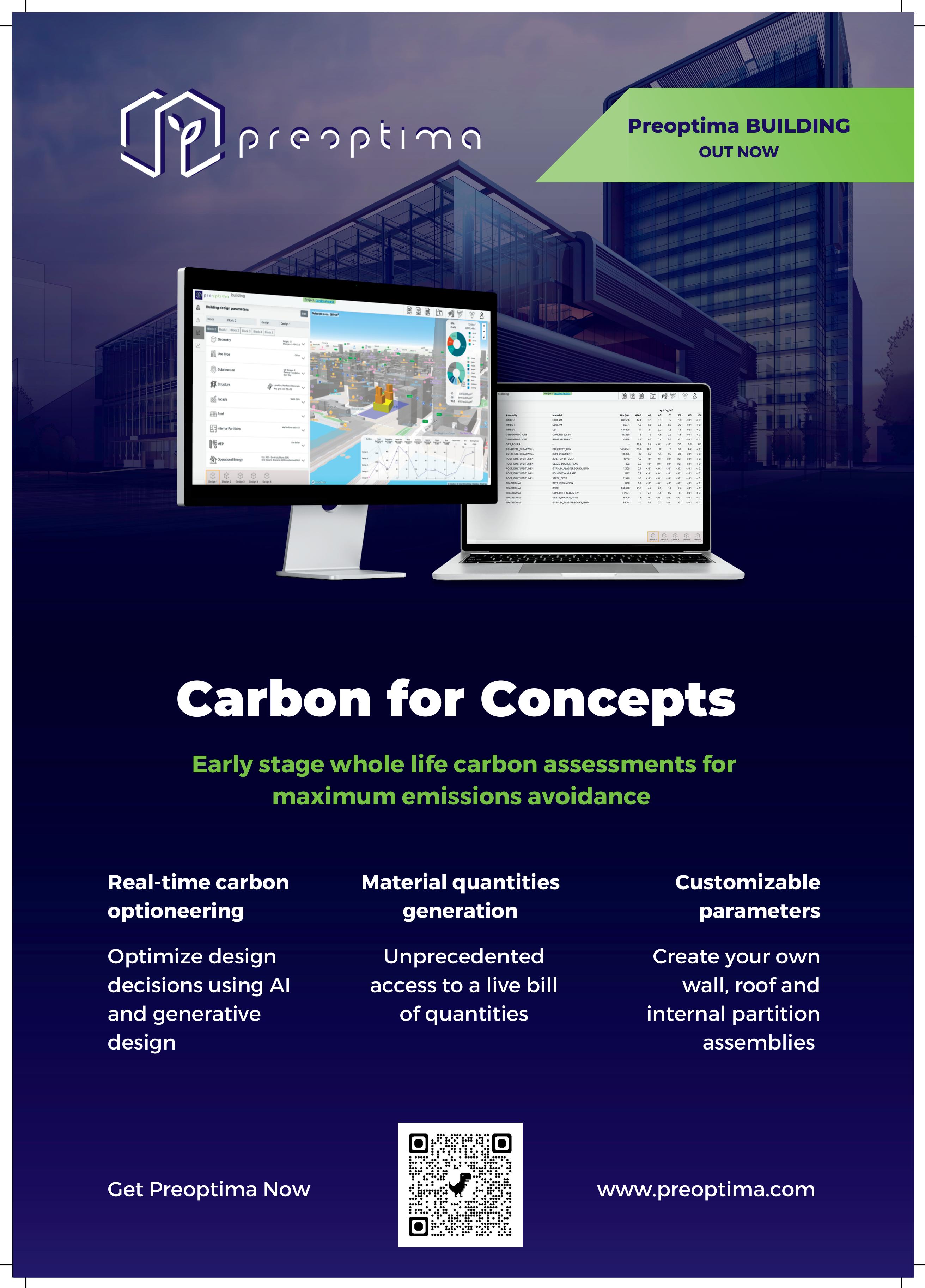
Chaos Vantage 2.0 launches for real-time ray tracing
OpenSpace embraces BIM

penSpace, a specialist in 360° reality capture and AI-powered analytics, has introduced OpenSpace BIM+, a suite of 3D tools designed to accelerate BIM and site coordination.
OpenSpace BIM+ is an add-on product to OpenSpace Capture, for ‘fully documenting’ construction sites.
For BIM analysis, the software allows site teams to work in the BIM model and compare that to what they are building.
haos has released Chaos Vantage 2.0, in what it describes as a massive upgrade to its realistic real-time visualisation tool.
With nearly 20 major new features, Vantage is said to provide ‘easy access’ to photorealistic animations, previs and scene explorations at ‘lightning speeds’.
“In 3D, you tend to wait for quality, and people accept this, even when it disrupts their whole flow,” said Simeon Balabanov, senior product manager at Chaos. “With Vantage 2, we are giving
them quality, speed and flexibility in one place, so they can respond to any creative idea or client request.”
Vantage was designed to help users ‘instantly explore’ massive 3D scenes in a fully ray-traced, real-time environment. During import, Chaos highlights that, there is no geometry to optimise, UVs to unwrap or lighting to bake. Users simply drag and drop a V-Ray scene (.vrscene), or Live-Link to Vantage from 3ds Max, SketchUp, Rhino, Revit, or Cinema 4D. ■ www.chaos.com/vantage
Preoptima rethinks carbon assessment
Preoptima has launched PreoptimaBuilding, an earlystage whole life carbon (WLC) assessment tool, that offers carbon optioneering in conceptual and technical designs using AI and generative design. Users can import geometry or use the generative design tool to quickly analyse thousands of low-carbon design iterations.
According to the climate tech startup, unlike other life cycle assessment (LCA) software which requires material quantities information to perform an assessment, Preoptima’s early-stage material quantities generation lowers the barrier to entry for all building stakeholders to mitigate the carbon in their projects.
■ www.preoptima.com
Consortium offers digital twin guidance
The Digital Twin Consortium has published two user guides that explore reality capture and the decarbonisation of buildings.
The ‘Why and the What of Digital Twin Building Performance and Sustainability: An Owner’s Perspective’ is designed to assist with new or existing digital twin-
based building decarbonisation.
‘Applying Reality Capture to Tenant Improvement Projects’ is designed to provide valuable insights on how to use reality capture technology to enhance efficiency and modernise tenant improvement projects.
■ www.digitaltwinconsortium.org
Point cloud data can be stored, viewed, analysed, and shared in OpenSpace from mobile and terrestrial laser scanners and OpenSpace’s 3D Scan feature, bringing reality capture data to one central location.
For BIM coordination, the software includes features designed to help teams quickly solve problems by aligning design intent with on-site conditions to speed up responses, approvals, and project schedules. ■ www.openspace.ai
Spacio design tool enters beta
Spacio, a browser-based tool designed to help architects /engineers to sketch, design and optimise buildings, is now out in beta.
The software ‘automates and assists’ the design process using a ‘vast training set’ of floor plans. Buildings in Spacio are based on a uniform data representation, described in DataTrees. All elements are connected and aware of neighbouring elements, meaning they react and respond to changes.
According to Spacio, this structure allows any building to be represented and documented in a standardised manner, thus becoming comparable, measurable and reusable.
■ www.spacio.ai
8 www.AECmag.com July / August 2023
News
C
O
CONTEXT + MASSING OPTIONS
Skema for DESIGN AUTOMATION
Fast-forward your project with Skema – the world’s first BIM Knowledge Reuse Engine.

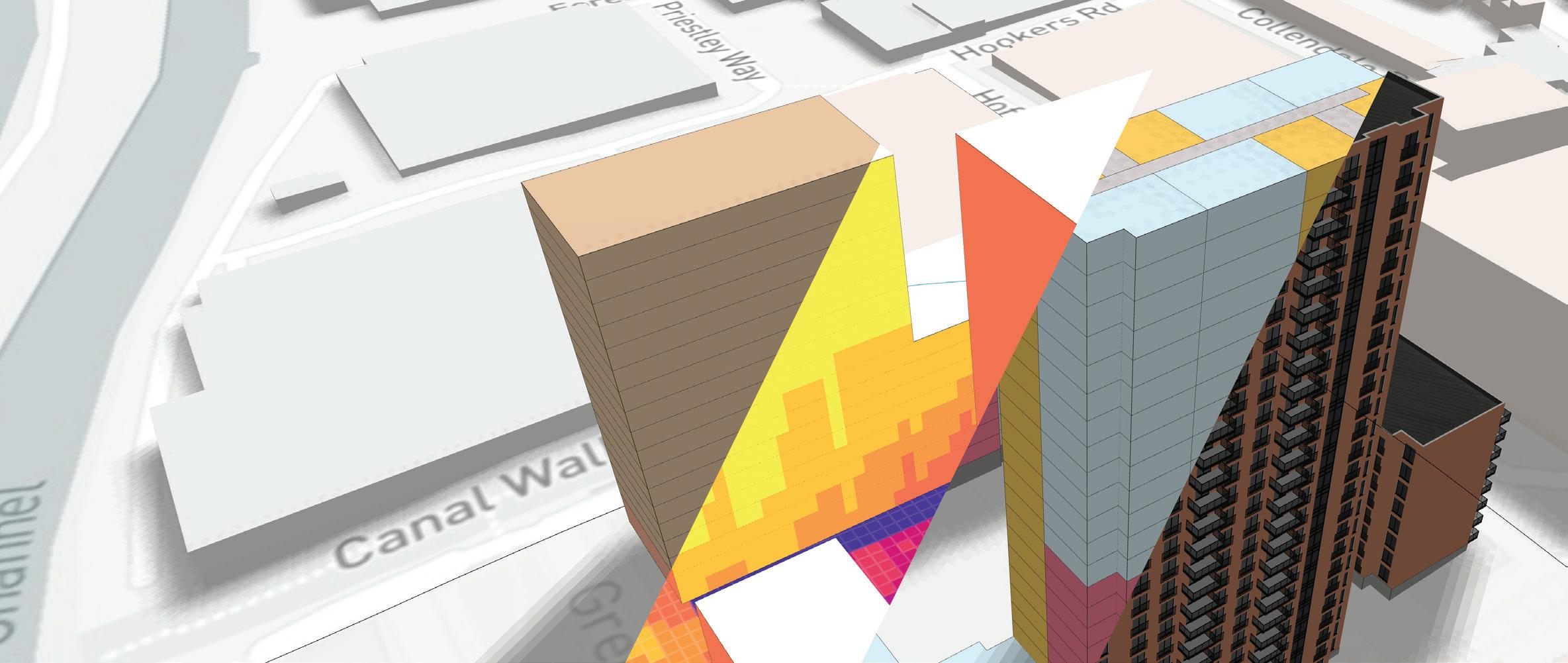
Win new work with much less effort. Improve building project sustainability. Produce LOD 350 BIM data fully editable in Revit.
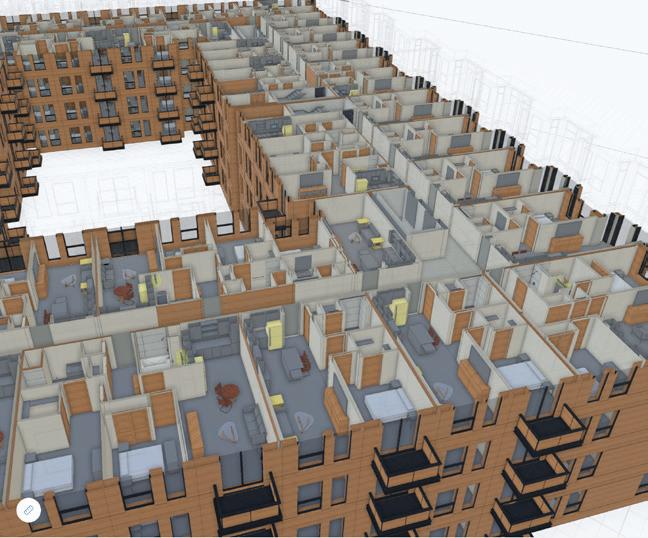
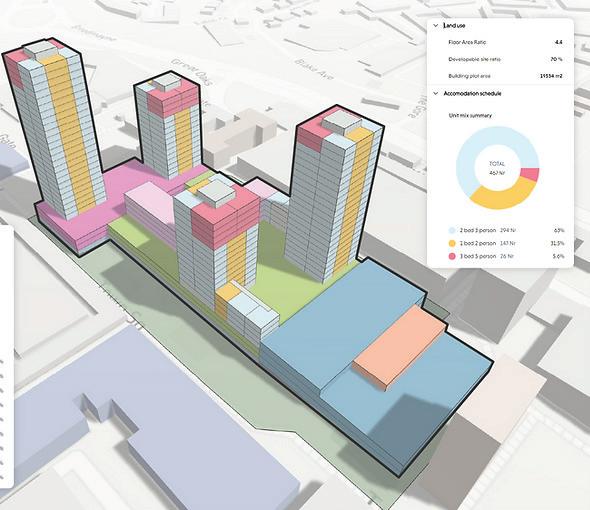
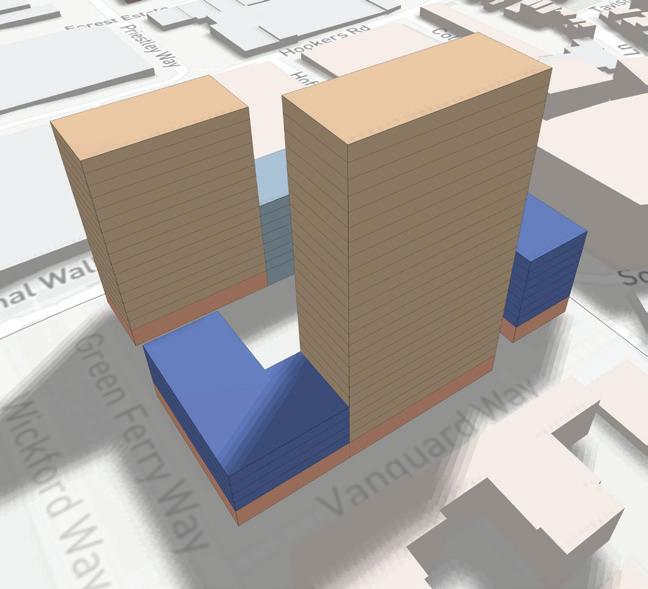
SUSTAINABILITY ANALYSIS
Skema automates 50%+ of the layout so you can focus on the signature spaces and deliver better project outcomes.
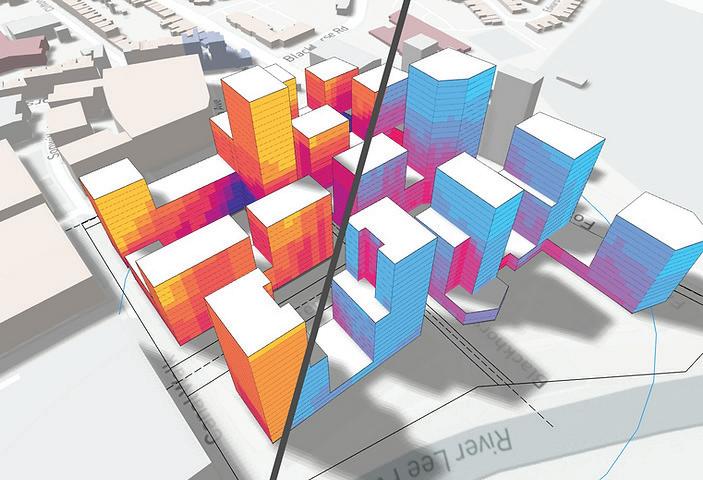
° Founded by one of the creators of Revit, Blue Ocean partners with firms to future-enable the business of architecture.
° Experts in AEC technology, architecture, and green building practices.
BLOCKING, STACKING + METRICS
GET STARTED FOR FREE

BIM LOD 350 MODEL GENERATION
blueoceanaec.com
to you by BIM
Brought
2.0
Lenovo introduces pro laptops with AMD APUs ROUND UP
nima conference
Data and how to unlock its true value in the construction industry, will be the key theme for nima’s inaugural virtual conference on 2 November 2023. The event will include a day of online learning with live keynote talks and panel discussions
■ www.wearenima.im
NBS Survey
NBS, the platform for connected construction information, has launched its annual Digital Construction Survey. In addition to BIM, this year’s survey aims to understand how cloud computing, digital twin software, VR, and AR are being utilised, and attitudes towards MMC and off-site construction
■ www.tinyurl.com/NBS-survey
iPad app rebrands
Spaces, the purpose-built iPad app for architectural concept design, has been rebranded Codesign to better communicate the role the app plays as a co-partner to architects for concept design. Codesign version 3 is set for release in early August with an updated UX experience
■ www.getcodesign.co
PPM acquisition
Built environment software specialist Eleco has acquired BestOutcome, a UK Project Portfolio Management (PPM) SaaS provider. BestOutcome’s PM3 software helps organisations run everything from large-scale business change programmes to simple, stand-alone projects ■ www.bestoutcome.com
Climate data portal
The UK Met Office has launched a new Climate Data Portal to help organisations better understand and respond to climate change through improved access to climate data. The portal is built using geospatial technology from Esri UK ■ www.tinyurl.com/climate-portal
VinZero acquired
Vonnoyeur, the French B2B services group for the construction and agriculture industry, has acquired VinZero (of which Cadline is a part), through its subsidiary Arkance. Arkance specialises in digitalisation and digital transformation for the construction and industrial sectors ■ www.vinzero.com
Lenovo has unveiled three new ThinkPad mobile workstations powered by AMD Ryzen Pro 7040 Series processors with integrated AMD Radeon 700M Series GPUs.
The big play for the 14-inch ThinkPad P14s Gen 4 and 16-inch ThinkPad P16s Gen 2 are affordability and power efficiency. The top-end AMD Ryzen 7 7840U, for example, features a 28W Thermal Design Power (TDP). The integrated AMD Radeon 780M GPU
comes with an AMD Pro graphics driver, making it suitable for mainstream 3D CAD and BIM workflows.
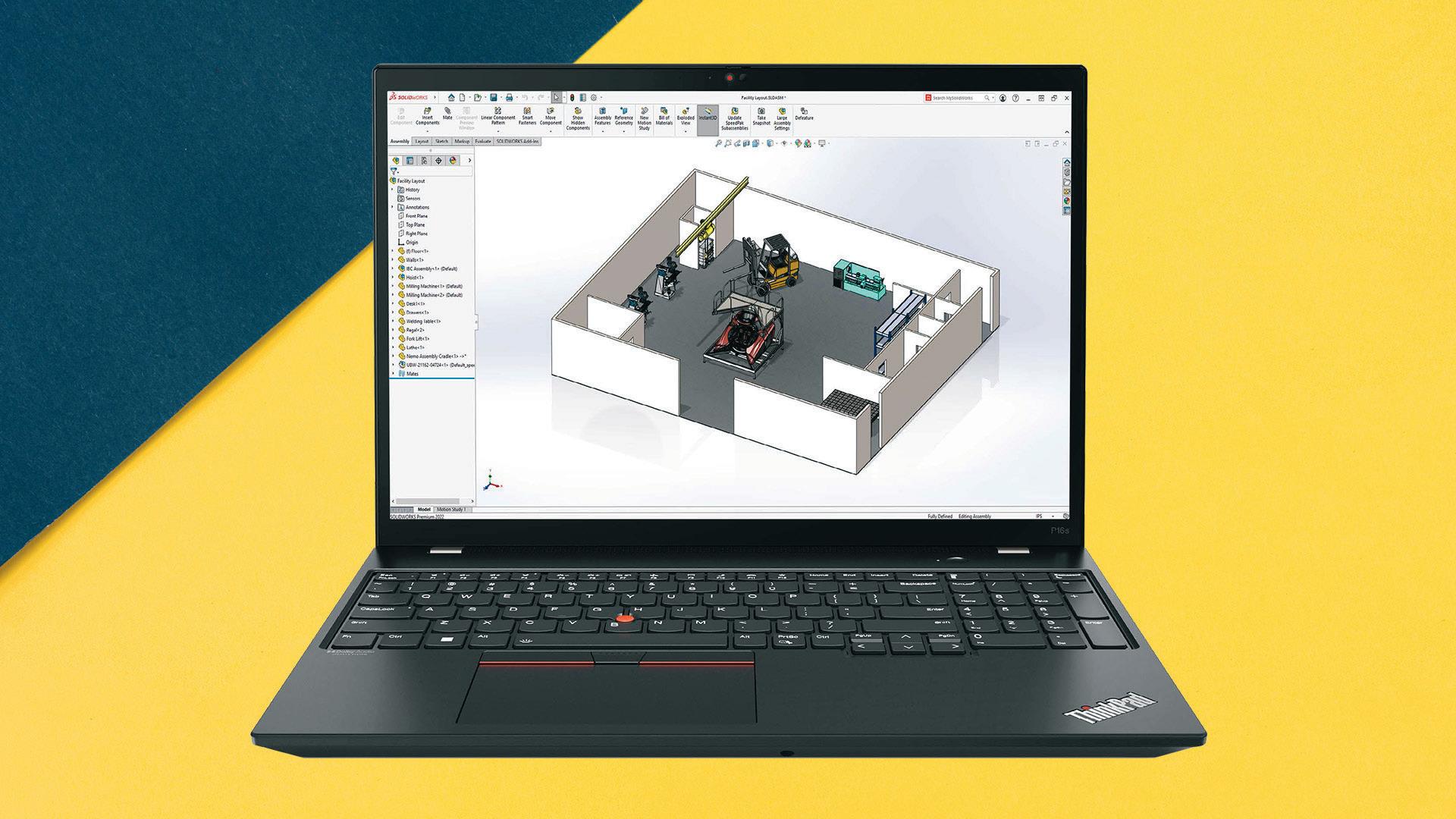
The 16-inch ThinkPad P16v is more powerful, offering a choice of AMD Ryzen 9 Pro 7040 HS Series Mobile processors with a TDP of 35-54W. It includes the same integrated GPU but can also be configured with the more powerful Nvidia RTX 2000 Ada Generation laptop GPU (8 GB), for CAD and entry-level viz.
■ www.lenovo.com
Edward Williams moves IT to the cloud
Edward Williams Architects, a London-based contemporary design led architectural practice, has upgraded its IT infrastructure — moving from an on-premise server to a hosted solution from virtual desktop infrastructure provider, Inevidesk.
Architects at the practice now have more flexibility to work on high-
performance software like Revit and Enscape using any hardware, and at any location, such as clients’ sites.
The practice’s entire IT infrastructure is now hosted securely offsite in Inevidesk’s London-based datacentre. According to Inevidesk, this will boost the agility and resiliency of the business, while improving office space.
■ www.inevidesk.uk
Aptix targets heavy civil construction
Topcon Positioning Systems has introduced Aptix, a new integration-platform-as-aservice designed to optimise how heavy civil construction projects are managed.
Aptix integrates Topcon solutions with multiple third-party applications with a
view to automating and orchestrating connections between the office and job site. It streamlines processes and distributes data, including machine control files, constructible models, project schedules, and reports on actuals.
■ www.topconpositioning.com/aptix
10 www.AECmag.com July / August 2023 News
A POWERFUL COMBINATION TO MAXIMIZE WORKSTATION PERFORMANCE



Combine the compute power of advanced graphics cards for professional creators with AMD Ryzen™ and Ryzen™ Threadripper™ PRO processors to dial-in system performance and maximize creative potential. The new AMD Radeon™ PRO W7000 Series Workstation Graphics, with options for 48GB or 32GB memory, lets you handle 3D models and RAW media files while making it easier to multitask between apps. The new AMD Radiance Display™ Engine, alongside support for DisplayPort™ 2.1, enables next generation 12K displays and delivers 8K at 60Hz with 68 billion colors – while providing dual simultaneous encode / decode engines and superior refresh rates.

#AMD #TogetherWeAdvance
To learn more visit amd.com/RadeonPRO


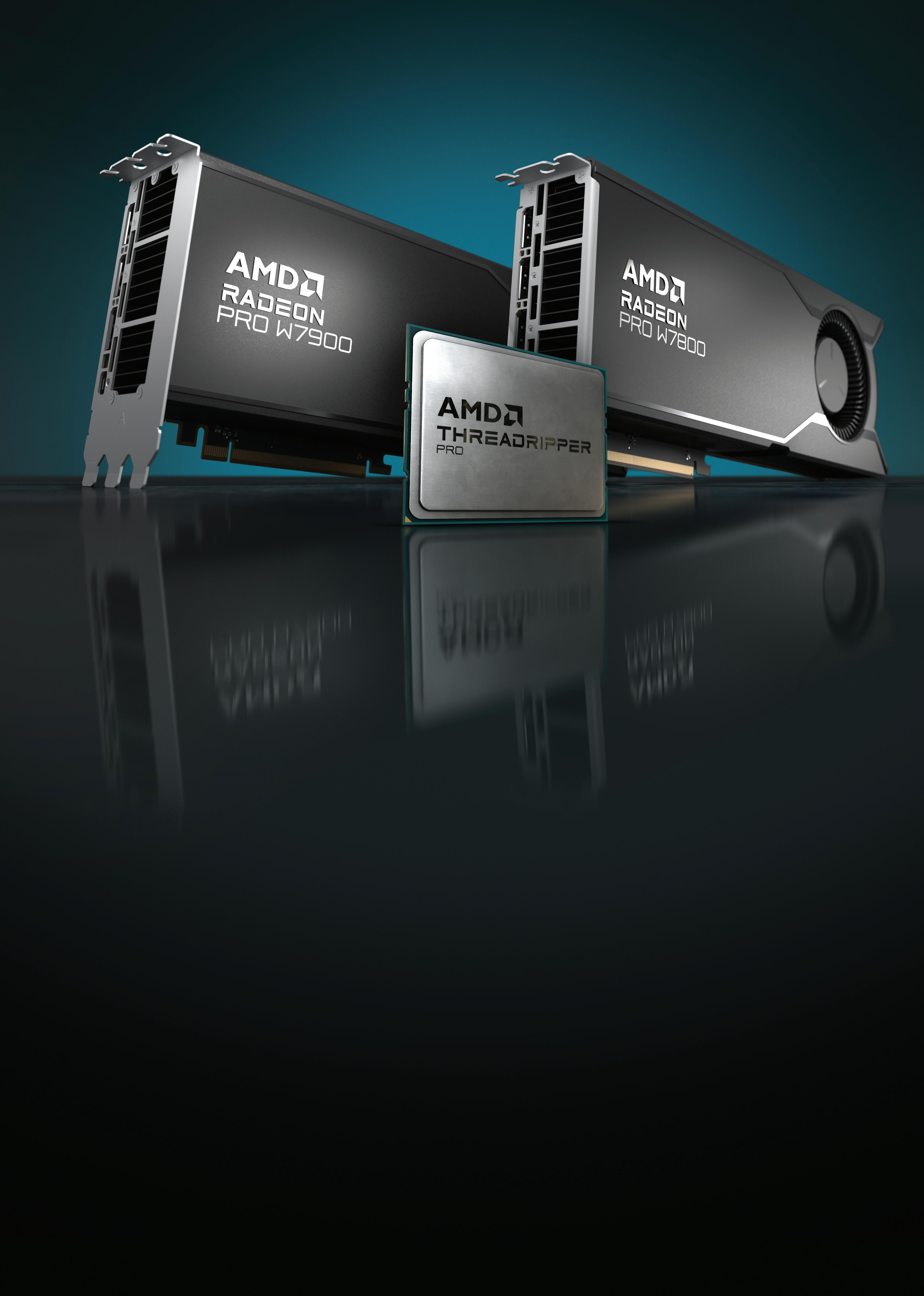
©2023 Advanced Micro Devices, Inc. All rights reserved. AMD, the AMD Arrow logo, Radeon, AMD RDNA, Ryzen, Threadripper, and combinations thereof are trademarks of Advanced Micro Devices, Inc. Other product names used in this publication are for identification purposes only and may be trademarks of their respective owners. PID#: 232087024 Version: 1
The Future AEC Software Specification
At our inaugural NXT DEV conference, one of the keynote talks, given by Aaron Perry of the Open Letters Group, announced a free to all ‘Future AEC Software Specification’ backed by global firms such as BIG, HOK, Herzog & de Meuron, KPF, Woods Bagot and ZHA. What should next generation AEC tools be able to do? Martyn Day reports
In London on 21 June, at AEC Magazine’s NXT DEV event, Aaron Perry, head of digital design at AHMM, gave a masterful presentation on the ‘Future AEC Software Specification’, a document that looks destined to have major influence on the future of AEC software.
Perry spoke on behalf of a peer group of leading architectural practices, which have been discussing the future of design tools and how to drive development across the entire design software community.
The specification originated with the UK Open Letter Group (OLG), who wrote that infamous letter to Autodesk CEO, Andrew Anagnost in 2020, but it is a much wider global effort.
software development community, including those that invest in technology, and provides a level of customer insight that, quite frankly, is not available anywhere else.
It asks, what is the future of our industry from a digital design point of view? It is a truly unique offering.
Mission statement
Our aim is to set out an open-source specification for future design tools that facilitate good design and construction, by enabling creative practice and supporting the production of construction-ready data.
This specification envisages an ecosystem of tools, for use by large firms and single practitioners alike, with a choice of modular applications each with specific functions, overlaid on a unifying “data framework” to enable efficient collaboration with design, construction and supply chain partners.
As architects, engineers and contractors, we do not profess to have all the expertise needed to enable this ecosystem, but we do know what we need to do our work, and so we are looking to engage with the software community to deliver the best solution.
It is currently being shared amongst the Nordic OLG firms (authors of a second open letter), and the highly influential AIA Large Firm Roundtable (LFRT) for approval and revisions.
The specification addresses the whole
In his talk, Perry first points out that the specification is not a definition for a single monolithic product. The industry needs an ecosystem of best-in-class tools that can work together and are applicable to large firms all the way down to single users.
There are ten pillars to the specification (see right) . We’ll look at some of the key ones below.
Data framework
Fundamental to the specification is the data framework. When trying to deliver complicated projects, firms use many software tools. Every time data is exported between the various siloed tools, data is lost. As a result, most firms accept the status quo
and try not to move their data between various file formats, choosing to use suites of average tools.
But many firms still try and use the best tool for the right problem, but they are paying for it through translators, complexity, plug-ins, specialist software. This is the biggest drain on time and energy in the industry.
A solution would be something like USD, (Universal Scene Description) which is open source and solved most of the data transmission problems in the CGI world. It’s a common standard, transmits geometry, lighting, materials to pretty much any media and entertainment application, whoever developed it.
The AEC industry faces a similar problem. With USD the common data structure sits outside the host products. This also means different teams, with different specialisms can open the USD file and work on their part of the scene. This creates a level playing field for software developers.
According to Perry, USD has some challenges. It’s a file format, as opposed to a database, there are variants as it’s not a perfect specification, and it is not the right format for BIM data.
Perry explained how different participants in projects need to access different levels of detail of data - specific data sets for structural engineers, cost consultants, sub-contractors who don’t need the whole model, energy simulation experts.
“The concept of the data framework,
12 www.AECmag.com July / August 2023
Cover story
AEC Software Specification
Future
The Future AEC Software Specification
13 www.AECmag.com July / August 2023 Feature Data Framework 1 Access across Use Cases, Personas and Locations 2 Designing in Context and Scale 3 User Experience 4 Modelling Capabilities 5 MMC and DfMA 7 Automation and Intelligence 8 Deliverables 9 Access, Data and Licensing Responsible Design 6 10
being outside of these file formats, enabling different people to access author modified geometry and parameters, concurrently. This is by entity or component, not requiring the opening of the full model to review a single string of data,” he said.
“At this entity level, collaborators can concurrently commit changes and coauthor packages of information with a full audit trail. Moving away from file formats and having a centralised data framework enables local data to be committed to a centralised data framework and allow entire supply chains to access different aspects of the whole project without the loss of geometry.”
As an industry, we are currently locked into proprietary file formats. In the next generation, Perry clearly makes a case for shared and distributed ownership without the vendor lock-ins that the industry has suffered from.
Context and scale were another aspect about data that Perry commented on - with the need for detail, such as an individual sprinkler, in relation to the whole building. Game engines like Unreal with Nanite technology can model dust particles and sand, while scaling up geometry to the size of countries. Models are being rebuilt and remade for this level of detail. We need modern performant software from concept to construction levels of detail, he said.
Responsible design
Projects are increasingly becoming centred on retrofit. With sustainability at the core, the focus is on reinventing the buildings we already have. Time is spent analysing the fabric of existing buildings but there are no tools available to help this. Perry explained that we need software that understands construction and embodied carbon – every major design firm has written their own. We also need more tools for operational energy, water use, climate design, occupant health, community – we are not seeing any tools with this on their agenda, he said.
MMC and DfMA
Modern methods of Construction, DfMA and Off-site are increasing and firms are looking for more certainty in construction. There are design constraints for shipping volumetric buildings to site, yet Perry explained that 95% of software currently available will not allow design to create design constraints when conceptually massing studies.
Most of the massing studies software, and there have been many that have come to market, is not fit for purpose. In fact, design tools do not allow architects to go down to the fabrication level of detail required. There is no modular intelligence.
Modelling capabilities
Moving from drawing board to CAD was pretty straightforward. Moving to objectbased modelling was more challenging. Perry calls for more flexible tools, smarter tools that have construction intelligence, “We have either flexible tools without structure, or structured tools with no flexibility. Neither of which understand how buildings come together”.
Automation and intelligence
The industry is highly repetitive, yet across all firms, despite there being experience and knowledge in abundance, that knowledge gets applied from first principles each time, without learning anything from previous projects. Can we have tools that capture that knowledge?
The core size is manually calculated for every single building, over and over again, as the building envelope changes. When talking about repetitive tasks, like creating fire plans for multi-floored buildings, Perry asks ‘Where’s Clippy? We have no automation from past projects”.
Deliverables
The industry is spending far longer creating drawings than designing. “Why are we still generating drawings on A1 and
A3 sized templates but these are never printed by anyone?” asked Perry.
“The drawing production process is about the release and exchange and acceptance between multiple parties and it’s sticking around for the time being because it’s our sole method, as an industry, to transact between different parties but what is the lifespan during production?” Using a centralised data framework with automation might become an alternative. Drawing production might become more incidental in the future.
Access data and licensing
As subscription has changed the way customers pay for tools, there have been far too many experiments with business models. Floating licences have been expunged for individual named user licences. Firms end up restricting access to those products. “Commercial limits are commercial limits.” said Perry. Token based systems expect the customer to gamble on future usage needs.
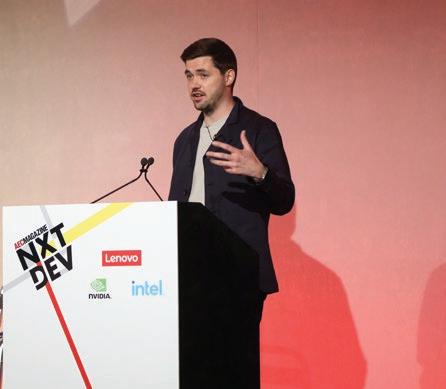
“We are seeing a trend in some vendors by charging a percentage of construction value. The reality is that by doing that you are pushing the decisionmaking process of what design software to use to the person paying the bills and setting the total values for projects, so we’re effectively walking into a situation where we’re saying ‘the commercial decision for purchasing software now sits with the pension investment fund that owns the budget.” Needless to say Perry is not a fan.
In his hour-long presentation, Perry outlined just a few of the topics dealt with in the Future AEC Software Specification, which can be seen in full at www.future-aec-software-specification.com.
To watch Perry’s excellent presentation and the panel discussion that followed, visit www.nxtdev.build/view-on-demand
Conclusion
We are at an interesting point in AEC software development. Mature customers are ahead of the software developers, wanting more, and demanding higher productivity benefits. The leading software developer, Autodesk, has just started replacing its tyre at 90mph, working out how to migrate Revit data to its new unified database, while figuring out what design tools Autodesk Forma will offer.
At the same time, new start-up firms are listening to mature customers and pondering what they do for the mass market play. The Future AEC Software Specification is the generic guide to all developers in the
14 www.AECmag.com July / August 2023
Cover story
’’
‘‘ Moving away from file formats and having a centralised data framework enables local data to be committed to a centralised data framework and allow entire supply chains to access different aspects of the whole project without the loss of geometry
Aaron Perry (AHMM)








Overcome your challenges Flexible cloud workstations that empower your architectural practice Contact us now to start a free trial of our cloud workstations • 01204 47 47 47 scan.co.uk/prographicscloud Flexible working from any device, anywhere Speeding up and saving cost on project bids Coordinate and collaborate projects with any level of BIM Add new revenue streams and market opportunities with digital twins Only pay for what you need, no hidden costs transferring data Increasing efficiency by integrating AI into architectural workflows
industry, to think about the kinds of tools that large firms would like to see, beyond what is currently available.
From watching Perry’s crystal clear talk at NXT DEV, and dropping into the conversations on the various panel sessions, it’s clear that there is plenty of opportunity for the industry to work together to develop the kind of capabilities which
many would love to have right now.
AEC Magazine hopes to put on a yearly event where we continue to directly connect innovative practices with software developers and VCs. It’s reassuring to hear from the OLG that large construction firms have been inspired by Perry’s talk and the release of the software specification and are already look -
ing to join the initiative and contribute to the specification to make it broader and pan-discipline applicable.
■ www.future-aec-software-specification.com
For more on the Future AEC Software Specification turn to page 36 where we have an interview with Aaron Perry (AHMM) and Andy Watts (Grimshaw)
How we arrived at the Future AEC Software Specification
Over the past five years, the majority of investment in the AEC industry, including venture capital, acquisition and development, has focused on construction. This happened at a time when architects and users of the number one design modelling tool, Autodesk Revit, were getting frustrated at the lack of meaningful updates, but seeing increased software subscription costs.
Meanwhile, Autodesk was in full acquisition mode, buying up cloud-based applications to fill out its Construction Cloud service.
While there had been long-term rumours of a new generation of solutions from Autodesk based on the cloud, originally called Quantum, there was no set date or anything to show.
This frustration led to the formulation and delivery of an open letter to the CEO of Autodesk, Andrew Anagnost, from 25 UK and Australian firms, highlighting a wide range of complaints, from lack of updates to the stuffing of ‘Collections’ with products they don’t ever install, let alone use.
The net result was a series of meetings with Autodesk management and product development staff, exploring what kinds of features these firms would like to see in Revit.
In 2022, Anagnost made it clear that there was not going to be a second generation of Revit as we know it - a desktop application. In an interview with Architosh, he said, “If you want a faster horse, you might not want to work with us because we will not make a
faster horse. But we can be that partner and tool provider that supports professionals into the new era of architecture.”
That new era was a future version of Autodesk Forma, the cloud-based platform which softlaunched this year with an initial focus on conceptual design.
Around this time, the Open Letter Group (OLG) were engaged with the Revit development team, providing wish lists for Revit. Meanwhile, a group of signature architects had also approached Autodesk with similar complaints, just without a public letter, and went through the same engagement process, requesting new features.
The Revit team had its own part-published roadmap and there were attempts to see where they could align. But herein lies a problem. When asking for feature wish lists the many will always drown out the few.
Autodesk has sold somewhere between 1.2 and 2 million seats of Revit and the majority of users have fairly rudimentary needs.
signed by 324 firms, including BIG with Danish, Norwegian and Icelandic Architectural Associations, representing some of the firms who had approached Autodesk privately.
The OLG had little faith that Autodesk would build into Revit the advanced features its members need. Any boundarypushing technology or new development was more likely to appear as a cloud service or as part of Autodesk Forma – and this transition could take years.
The OLG decided to work on a specification, a shopping list of the kinds of technologies they would like to see in a next generation product.
By this time, late 2022, the OLG had been approached by nearly every large software company with an interest in either entering the BIM market or tailoring their current offerings to meet the BIM needs of the members – Hexagon, Nemetschek, Dassault Systèmes, Trimble, Graphisoft, BricsCAD, Qonic and others.
The decision was made to collate the specification and just ‘put it out there’ for the benefit of all, or any developers looking to create next generation design tools. And there are many, including Swapp, Blue Ocean Snaptrude, Arcol and Qonic, with more waiting in the wings.
“We’re in the volume market and developing for the signature architects and large firms does not make commercial sense for us.”
The problem is, artificial intelligence and machine learning is coming very quickly to this market, and people that use BIM to make simple rectangles and unexciting geometry, are going to be the first to face automation.
In an AI world, those who create complex geometry and more unique designs will be the ones that will still require more software products. AI probably means more Rhino.
Databases over files
Greg Schleusner of HOK has been on a similar tack, looking at next generation tools, specifically concentrating on the change from proprietary to open data formats and from files to data lakes.
The industry wants data sovereignty and independence. It does not want to be trapped in proprietary file formats again. We’ve already been DWGd and RVTd; we need to move beyond the silos and it’s time for open databases, offering freedom to share at a granular level, without the need to write ‘through’ a vendor’s application to gain access to your own or other’s project data, held in proprietary repositories. Schleusner has managed to bring together a consortium of 39 firms to pursue the creation of this open data lake.
Meanwhile, many of the firms that were complaining were the mature BIM users, a minority that are really pushing the boundaries and are frustrated at being held back with Revit’s lack of development velocity.
This led to a second open letter, the Nordic Letter (www.tinyurl. com/nordic-AEC) which is now
As we move towards a second generation of design tools, one of the key challenges for these software developers is to what extent should they respond to the needs of the firms that have complained? Autodesk is not alone in feeling it needs to cater to the masses.
As one developer told us,
To really understand the scope of this, we recommend watching his past three presentations from NXT BLD.
2021 – Creating Balance nxtbld.com/videos/greg-schleusner 2022 – Road to Nowherenxtbld.com/videos/greg-schleusner-2 2023 –Assemble nxtbld.com/live-stream-2023
16 www.AECmag.com July / August 2023 Cover story
‘‘
Any boundary-pushing technology or new development was more likely to appear as a cloud service or as part of Autodesk Forma –and this transition could take years ’’
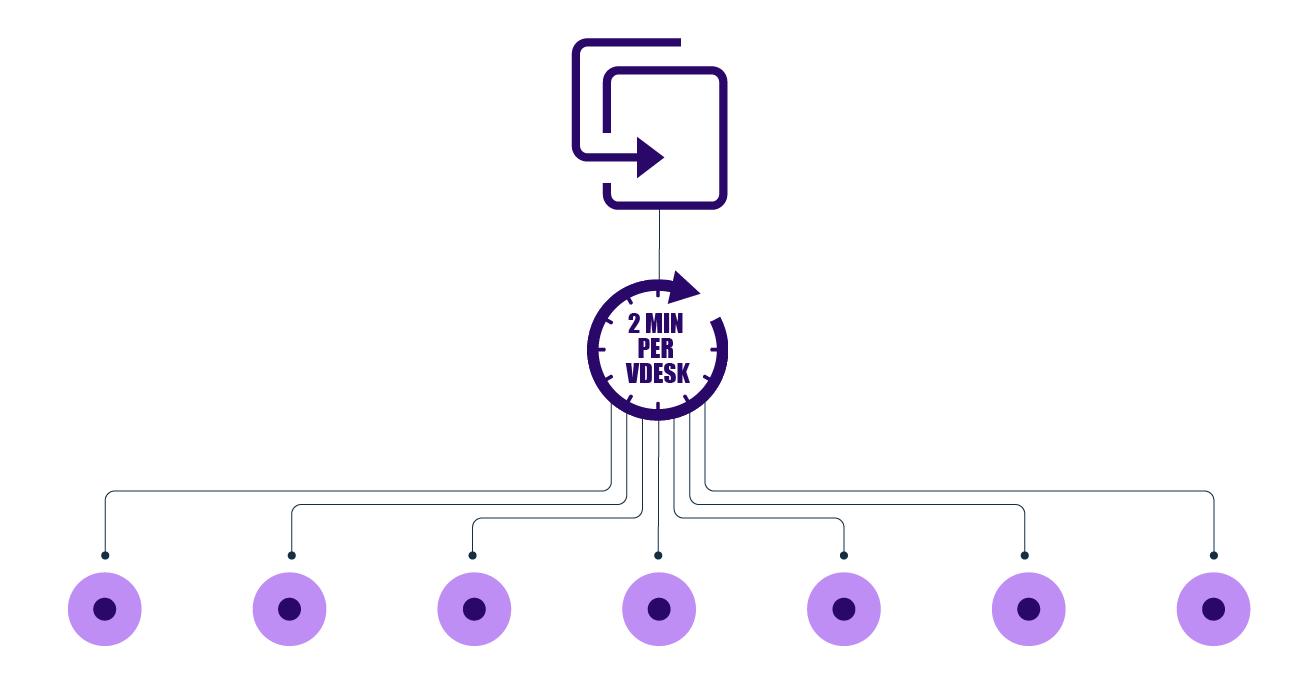

NXT BLD / DEV on-demand
This year NXT BLD stepped up a gear with a second day called NXT DEV, dedicated to the future of AEC software development. With 40 inspirational presentations and panel discussions there’s something for everyone to watch, free on-demand
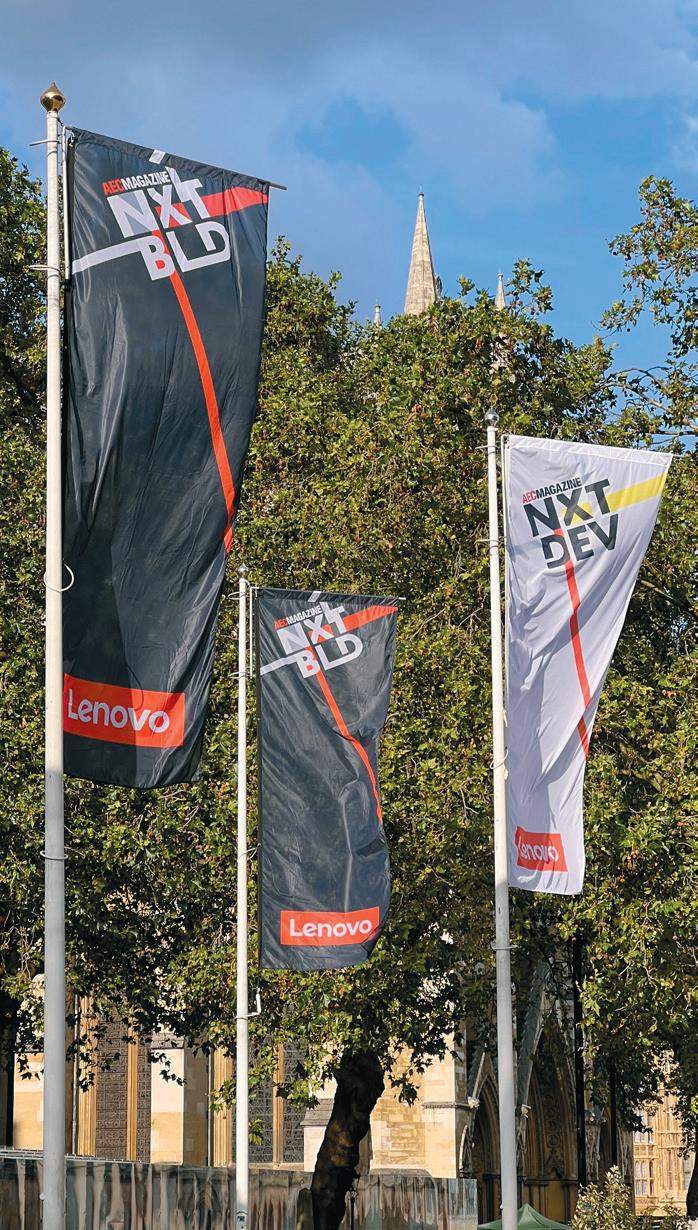
We have been running NXT BLD, along with our partner sponsor Lenovo, for seven years now, even through the odd pandemic and national train strike. It has proven to be a positive force to build a community of like-minded, future looking design IT professionals from the AEC community. It’s something that the editorial team looks forward to curating every year and we thank you for your continued support and efforts to come along or tune in online. This year we have a bumper load of excellent talks now available to view on-demand, covering all sorts of pertinent topics.
Currently, AEC software development is greatly in focus. There is an accelerating trend for medium to large firms to develop their own in-house applications and capture process knowledge in bespoke tools. In the general CAD market at large, we can clearly see change is coming to the tools we use, and the fundamental underlying architecture on which they are based.
With more focus on the cloud and databases, the life of the file looks to be coming to an end. At AEC Magazine we’re calling this transition BIM 2.0. Over time, it will mean new generations of design tools are coming.
Presentations from NXT BLD this year continued to look at in-house development but there were also a good number of talks on artificial intelligence-based applications in the industry.
Nurturing new AEC software
For this year’s event we decided to expand
the scope, adding an additional day, with a new focus on future software development. We called it NXT DEV.
Over the past year AEC Magazine has put the spotlight on a growing number of start-up firms looking to create solutions for the design phase of AEC.
These exciting tools have looked to replace or complement existing and market-leading applications, as well as introduce new technologies such as artificial intelligence to take the drudgery out of some of the existing workflows.
With an obvious wave of new tools, we thought it was important to create a forum where the developers could hear from AEC practices about their pain points and the holes in their tech stacks.
We also added members of the Venture Capitalist and Enterprise business fraternity to the mix.
With the three pillars of NXT DEV being design IT directors, software developers and financiers, everyone can learn from each other’s perspective and hopefully we will see more targeted applications and investment in a wider spread of solutions.
The format of the day differed from NXT BLD in that there were a series of panel discussions covering: next generation AEC requirements, the need for sustainability tools, what can be learned from the many off-site construction insolvencies, the impact of AI and VC investor advice.
Simultaneously we ran a full day of start-up presentations, the only event where you could see these new firms back to back.
Enjoy the videos from this year’s NXT
BLD and NXT DEV conferences. Planning is already underway for 2024! Hopefully we will see you there.
All of the presentations from NXT BLD 2023 and NXT DEV 2023 are available to view ondemand, completely free. So grab a coffee and dive in. You’re welcome.
■ www.nxtbld.com/live-stream-2023-register/
■ www.nxtdev.build/view-on-demand/
18 www.AECmag.com July / August 2023
NXT BLD on-demand
Future design software ‘shopping list’ Aaron Perry // AHMM Architects
Talking on behalf of a collective of medium-tolarge AEC firms, Aaron Perry gave a masterful presentation on the ‘Future Design Software Specification’ – a document which has its origins in the Open Letter Groups both from the UK and the Nordics, which were backed by global entities, such as HOK, BIG, Grimshaws etc.
While trying to provide feedback to Autodesk to shape Revit development, it was clear that the scope to make major core changes was not on the table.
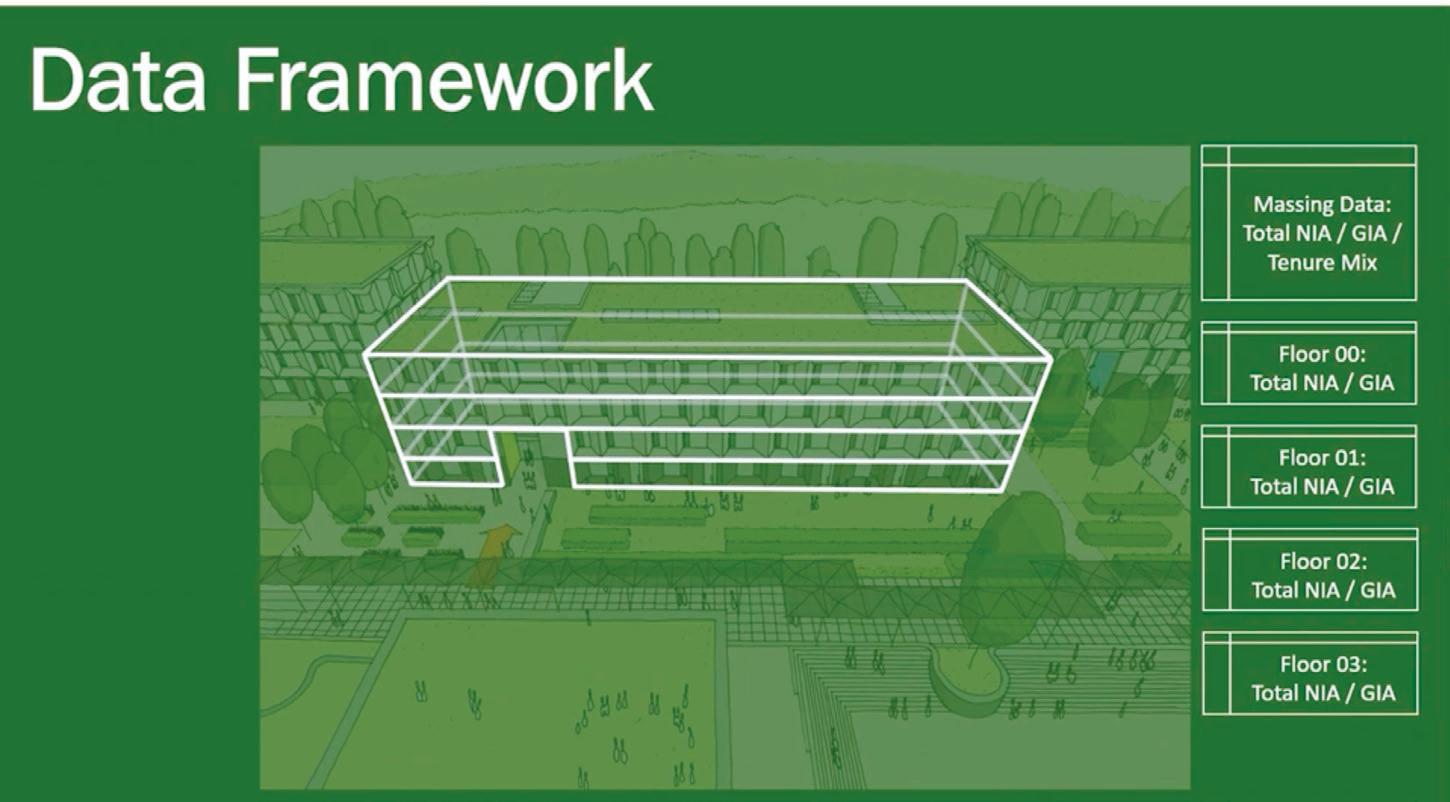
Thinking bigger and broader, Perry’s talk addresses the whole software development community and provides a level of customer


insight that, quite frankly, is not available anywhere else. What is the future of our industry from a digital design point of view? It started with the database and data framework requirement and then went much further. This is a talk not to be missed should you be developer, VC or an AEC practitioner.


Data-driven Martha Tsigkari, Sherif Tarabishi & Adam Davis // Foster + Partners
Foster + Partners’ Advanced Research & Development (ARD) group is responsible for complex geometry creation, fabrication, performance-driven design, optimisation, AI/ML applications, IoT, digital twins, Robotics and XR.
At NXT BLD, Martha Tsigkari, who heads up the group, along with her colleagues Sherif Tarabishi & Adam Davis, delivered a compelling presentation under the theme of data: “What’s common behind all our endeavours is data,” said Tsigkari. “It’s the underlying data that drives decisions and our designs and can help us build better buildings for the future.”
The keynote presentation demonstrated how, by creating, collecting, sharing and analysing, ARD contributes to Foster + Partners design process.
19 www.AECmag.com July / August 2023 www.nxtbld.com
Part 3: Assemble Greg Schleusner // HOK

Schleusner built on his previous two NXT BLD presentations, which outlined the problems with today’s BIM data silos and presented some ideas on how the industry could do something collectively to solve them. This year, Schleusner explained how the plan has developed further, with the backing of 39 firms from the American Institute of Architecture’s (AIA’s) Large Firm Roundtable.
Product design and engineering - form and function





Cathal Loughnane // Aston Martin & Jenni Ramsay // Lenovo
If you thought Lenovo’s new ThinkStation PX workstation looked familiar that’s because the front panel was inspired by the iconic grill on the Aston Martin DBS sports car.

Cathal Loughnane and Jenni Ramsay explored the collaboration between Aston Martin and Lenovo that led to the development of this powerful new workstation. Beyond styling, there are parallels in thermal dynamics. It turns out the same cooling principles can be applied to CPUs, GPUs and memory as they are for gearboxes, brakes, oil and radiators for V12 engines.
The rise of digital master builders
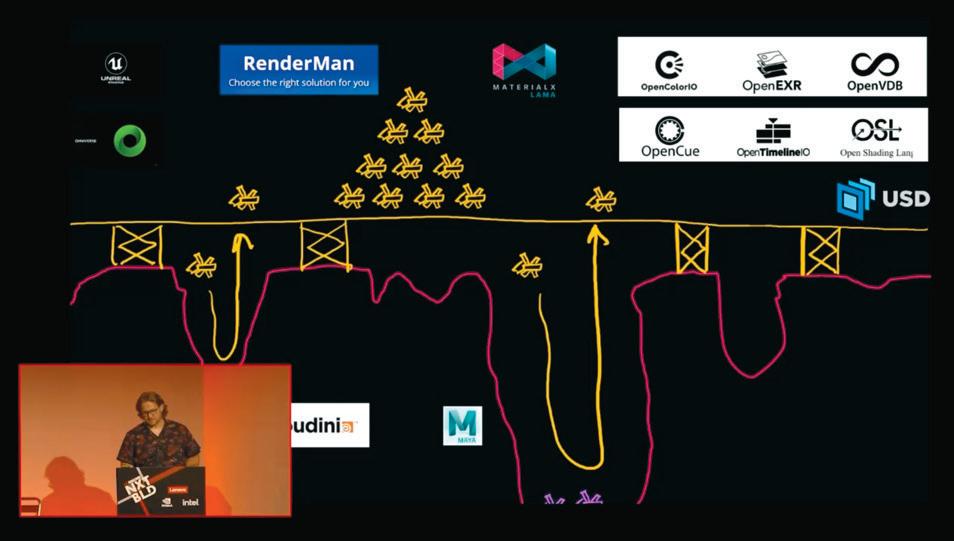
Chun Qing Li // Kreod
Traditional BIM workflows prescribe modelling to produce drawings. Chun Qing Li’s firm, Kreod, uses mechanical CAD software Catia to model everything at fabrication level detail, to be in complete control of the projects they have undertaken. Li gave us an insight into his journey to develop his model-based workflow, with project examples and incredible high accuracy Catia models.
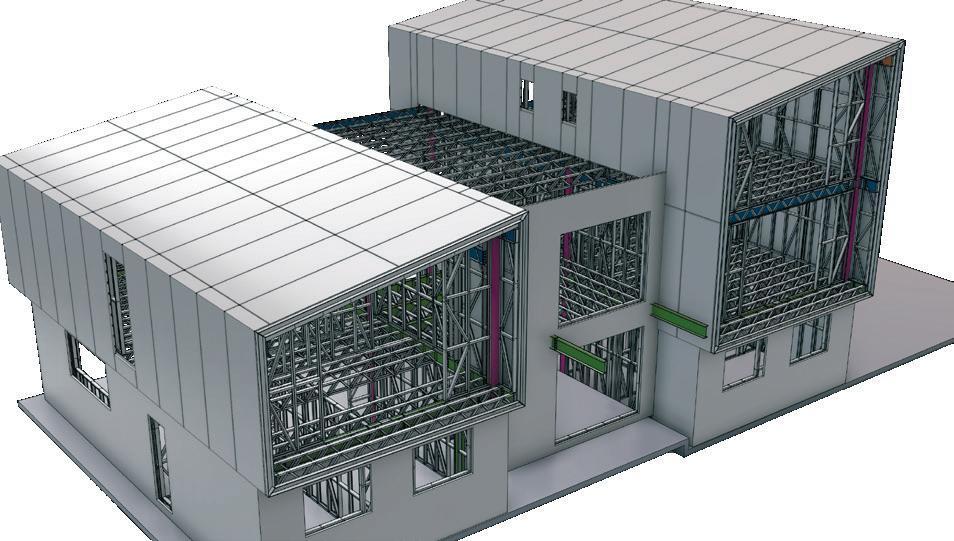
Towards sustainable design technologies
Michael
Drobnik // Herzog & de Meuron
In a talk framed around Herzog & de Meuron’s sustainable design technologies objectives, Drobnik explained how his design technology group addresses the challenge of applying technology to design within the firm, from Rhino and traditional BIM to XR-based design. He says that the core challenges are data, standards, complexity, interoperability, the use of AI and sustainability, Here, the team develops its own easy-to-use solutions for the firm’s designers, and provides tools ‘where the data lives’. Drobnik also calls for more open data.
How GIS is accelerating much needed change in AEC

Marc Goldman // Esri
For the first time as a topic at NXT BLD, we asked Esri’s Marc Goldman to look at GIS development in the context of convergence with AEC tools. GIS systems are designed to handle huge datasets and are now becoming more BIM friendly, allowing integration of 3D design data and 3D spatial information which are helpful for digital twins and asset management. Goldman showed how Esri is using experimental AI tools to ‘grab’ real world assets to bring into FM systems, creating synthetic city data sets and using knowledge graphs (which provide system-level definition) to generate Revit models.
20 www.AECmag.com July / August 2023
www.nxtbld.com NXT BLD on-demand
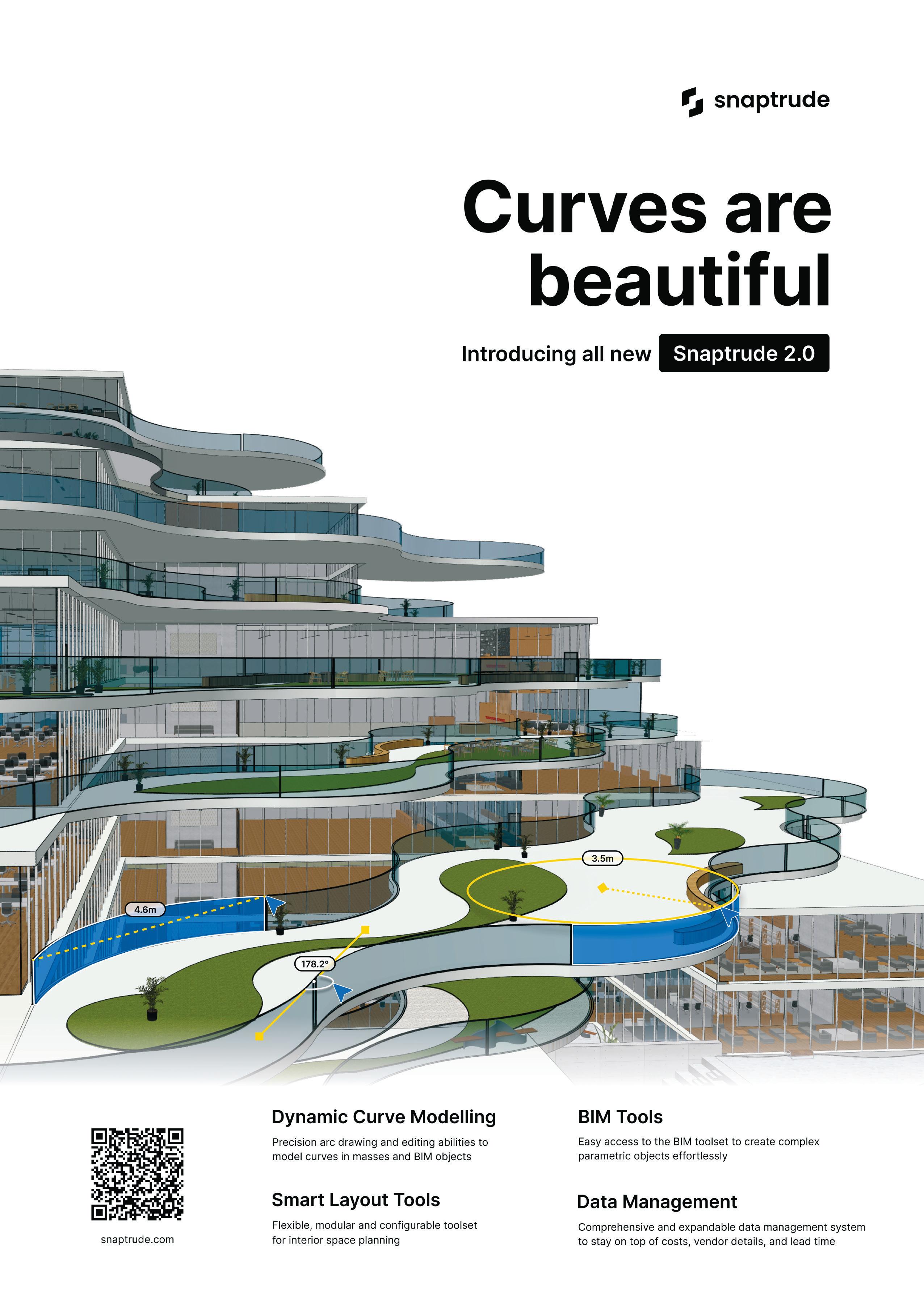
Your Next Visualization Asset
Enscape is a real-time visualization and VR plugin that gives you top-quality renderings and the fastest and easiest way to produce them. Unlike other visualization tools, it’s a plugin, not a standalone application which means you keep visualization efforts within your native building modeling platform and work from a single source of truth.

Adjustable assets: Over 1,000 assets with variants and assets that allow color and material customization.
Improved mirror reflections: Shading quality improvements for mirror reflections.
Improved indirect lighting: Quality of lighting improvements for interior scenes.
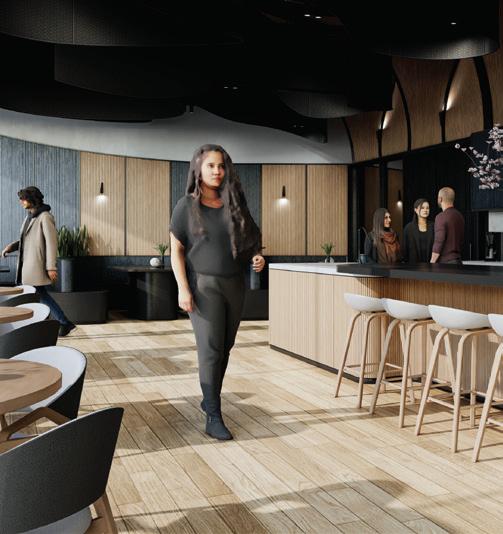
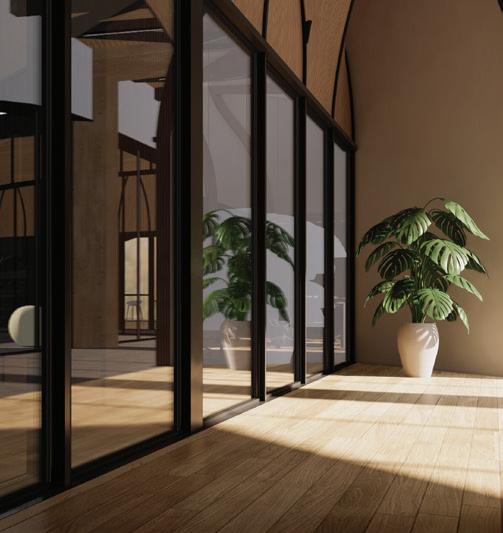

3D asset package: Over 90 unique people assets in the Enscape Asset Library.
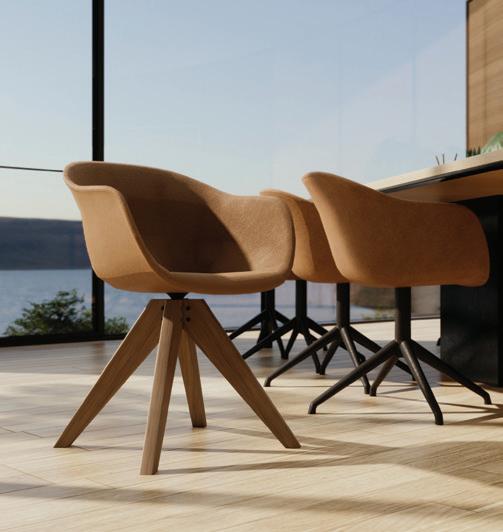
Enscape 3.5 Out Now Scan the QR code or visit www.enscape3d.com to get your free 14-day trial.
The future we aspire to build
Senthil Kumar // Slate Technologies



If we are trying to use AI to predict the future, can we control and create an alternative future? AI expert, Senthil Kumar looked at how AI tools can be applied and amplified with augmented intelligence, meta technologies and Web 3.0. With construction needing the choreography of many moving parts, both operational and physical, the answer is to produce ‘digital rehearsals’ in construction, together with AI looking ahead to identify impediments to delivery and chart an optimum course.
From 3D scans to insights with AI Martin Bach // aurivus


Laser scanning has played a key role in AEC for many years. The issue is the data these machines produce are simply a collection of dumb 3D points. To the human eye we can easily identify walls, doors, windows and buildings in these point clouds, but how hard is it for AI to also see objects in this point data? Martin Bach’s firm, aurivus, is one of the first to experiment and deliver on the challenge of truly delivering scan-to-BIM, by applying AI to recognise standard building components through point clouds.
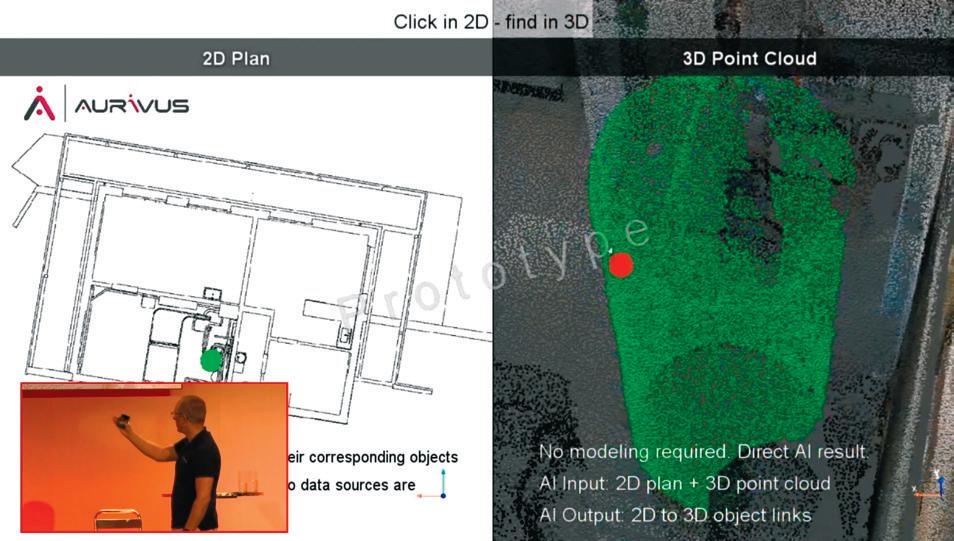
Cloaked in bureaucracy: The Emperor’s new clothes in the world of BIM? Jens Majdal Kaarsholm // BIG (Bjarke Ingels Group)
When Jens Majdal Kaarsholm came out of university, he felt ‘a blind love’ for BIM. Now he feels there are too many unnecessary deliverables being built around industry frameworks, that things are getting too complicated. A tidal wave of BIM requirements, death by abbreviations, standards that supersede other standards, and more compliance. It seems like clients and BIM consultants simply copy and paste requirements from project to project. Kaarsholm gives an impassioned talk about getting a more pragmatic mindset to BIM deliverables.

23 www.AECmag.com July / August 2023
www.nxtbld.com NXT BLD on-demand
Small robots for architecture
Maria Yablonina // University of Toronto


At NXT BLD 2022, Yablonina gave her presentation from Canada over Microsoft Teams. This year we managed to get her to London. As a robotics genius, Yablonina looks at construction automation and details her inspirations for construction robots which she has built. These include filament-weaving robots, wall climbing robots, façade clamp installation robots for façade design and various projects where robots work together to complete tasks.
(Re)joining nature - architectural symbiocene
Abhinav Chaudhary, Jenya Andersson, Michael Polisano // PLP Architecture
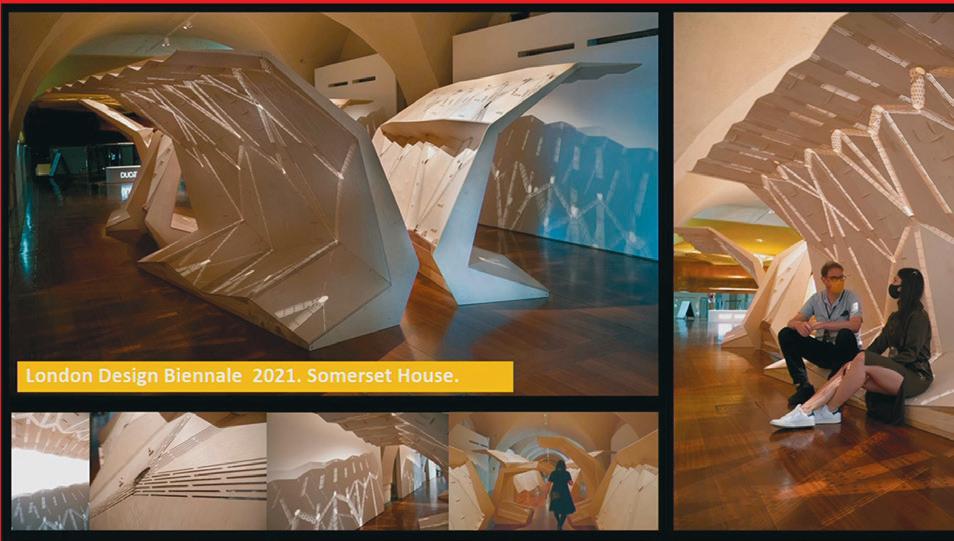
By fusing the natural characteristics of fungi and engineering of 3D printed timber shells, PLP Architecture’s Labs team has constructed, or rather grown, modular mycelium building blocks. Unlike concrete and steel, mycelium bio-composites are renewable and biodegradable. They can be grown and harvested with minimal environmental impact, are lightweight, fireresistant, and have good insulation properties. PLP’s Labs team explained the development process and the search for new recyclable materials.
Enabling design interaction for clients and partners





Alvise Simondetti & Giulia Simone // Arup
Simondetti presented a project that enables clients to interact with design data for the MTR Admiralty Station in Hong Kong. By using an interactive model, Arup’s designers can understand the interactive decision making that passengers would apply when navigating the station. It was fascinating to see the ‘slow down points’ displayed in the model, to show where passengers pause while looking for signage to make decisions. Simone followed with a demonstration of Arup’s use of Nvidia Omniverse on master plan projects for a science campus of 400 buildings which will be built over 50 years.
Technology Revolution for Next Gen Building Tools Mike Leach // Lenovo
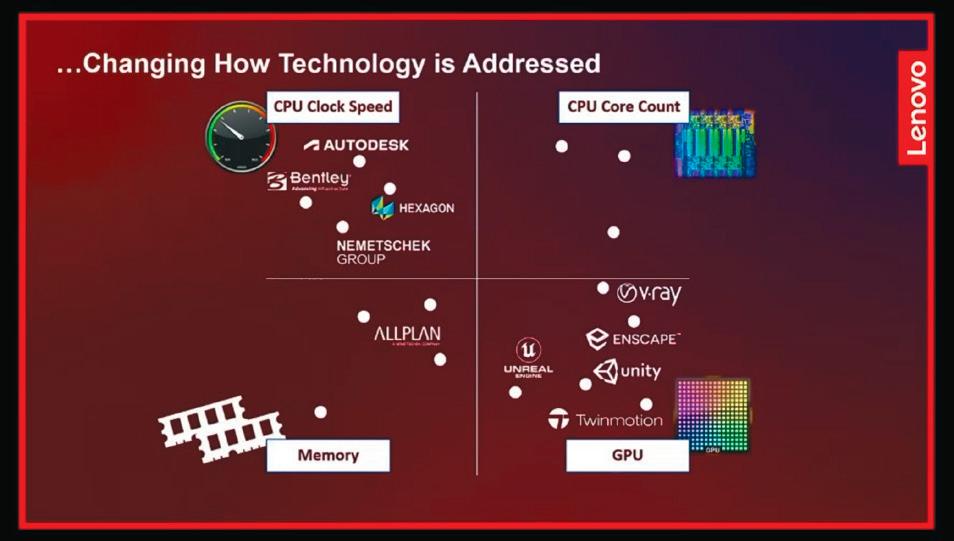
Lenovo’s Mike Leach placed workstations in the context of AEC workflows. He introduced the magic quadrant (see left), explaining how different AEC applications place different demands on workstation components. “No two users are the same, therefore no two workstations are configured the same,” he said. He also talked about flexibility in how AEC technology is accessed. “Your toolbox doesn’t have to come with you all the time. If you’re using a laptop, you are able to pull in the big power of a desktop. You just pixel stream the content,” adding that desktop workstations can be rack mounted.
Mixed reality: the next frontier in design & collaboration

Johan
Hanegraaf and Hilmar Gunnarsson // Arkio
While we all might be familiar with Virtual Reality, new generation headsets, including the Apple Vision Pro, are also pushing the boundaries of Mixed Reality. Johan Hanegraaf and Hilmar Gunnarsson talk about the advantages of using Mixed Reality headsets in the context of AEC design, with a live demo featuring the Queen Elizabeth II Centre, the very building NXT BLD delegates were gathered in!
24 www.AECmag.com July / August 2023
NXT BLD on-demand
Architecture in the age of AI

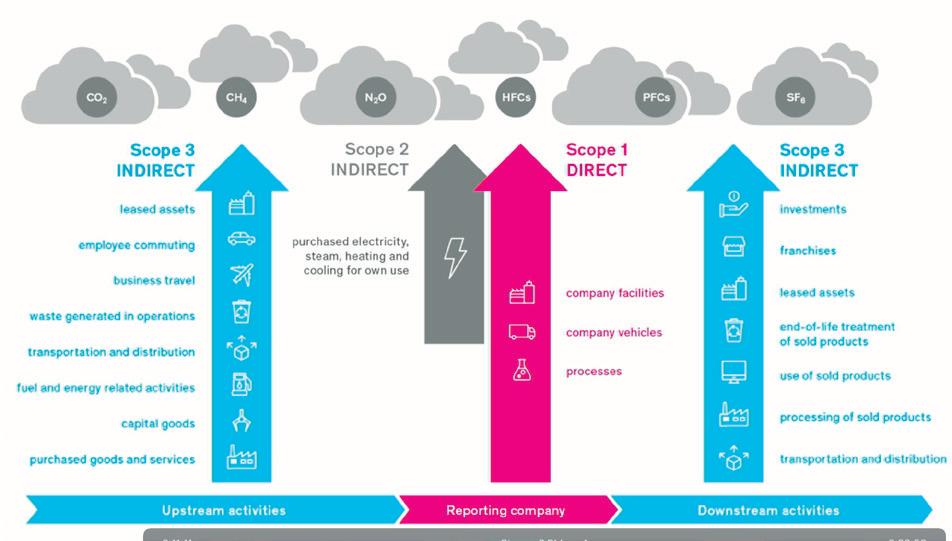

Tim Fu
With the advent of AI-based conceptual tools like mid-journey and DALL-E, it’s now possible to create stunning conceptual designs through text-based descriptions. Tim Fu has become an internet sensation, as he has built these 2D tools into modelling workflows to produce useable 3D designs. With each new iteration of the AI tools, Tim quickly masters their new possibilities.
Technology development for design and construction Charlie
Dunn
// DPR Construction





In a lively interactive presentation, Charlie Dunn brought audience participation to new levels as he quizzed the audience on their feelings towards AI and project delivery. “The language you use to describe your projects are the results of your choices about technology and behaviours that you allow to exist in the room. The industry’s fundamental lack of trust.” Dunn hopes AI produces trust and understanding that tap into the flow of creative people.
Data Driven Performance Dr. Sarah Surgeoner // Creative Building Performance
Sustainability and net zero are already going to be key drivers in future design but one assumes that this is going to accelerate. In a highly pertinent talk, Dr. Sarah Surgeoner pointed out that while sustainability has been an issue for 30 years, what is now imminent is a ratcheting up of government regulation in the real estate market, and one leads to another, impacting AEC design and construction.
Nvidia Omniverse: Open Industrial Metaverse for Advanced Computing Cobus Bothma // Nvidia
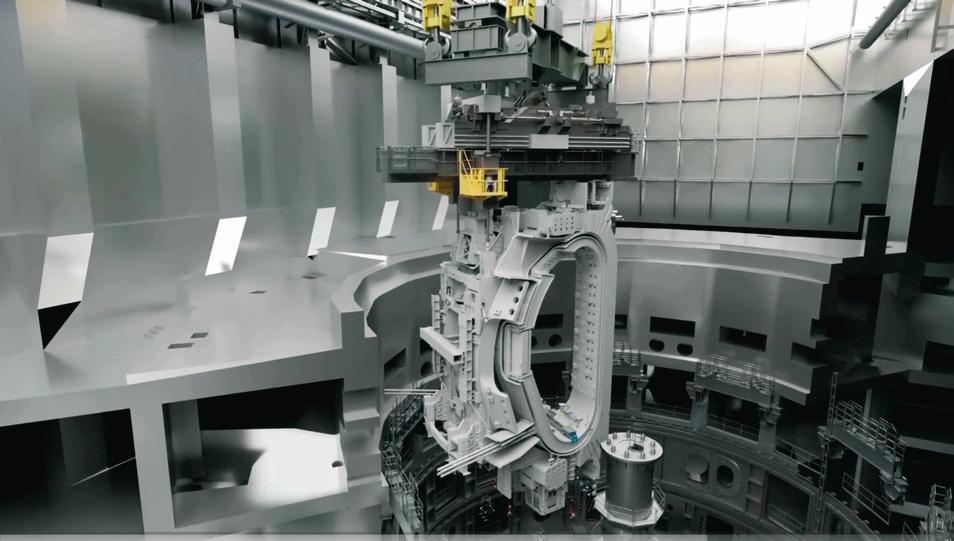
From RTX to Omniverse and now AI, Nvidia brings real-time graphics to many industries through autonomous machines, robotics training, and factory design, as well as providing the processing power for simulation and collaboration in AEC. Bothma highlighted how the company is using the open file format USD to allow never seen before capabilities, collating models from different software, from different people in different geographic locations to deliver a real time rendered experience on an iPad. But that is just the start.

25 www.AECmag.com July / August 2023
www.nxtbld.com
NXT DEV on-demand
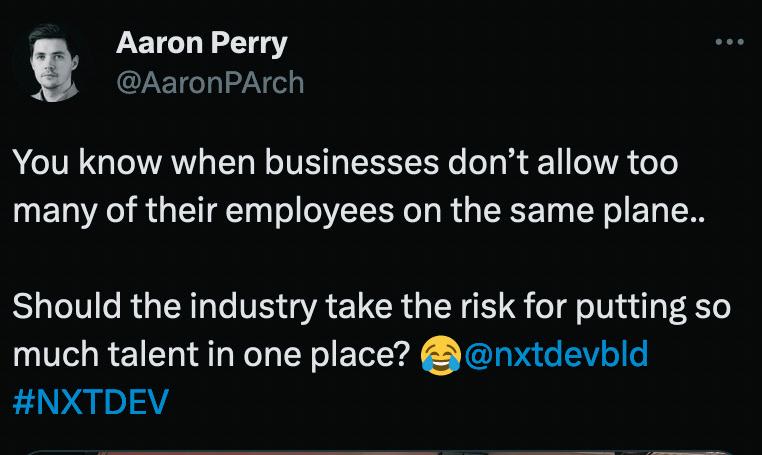



How many experts does it take to form an AI panel at NXT DEV? The answer is at least nine! With so many AI developers at the event, it seemed like we should cover all bases
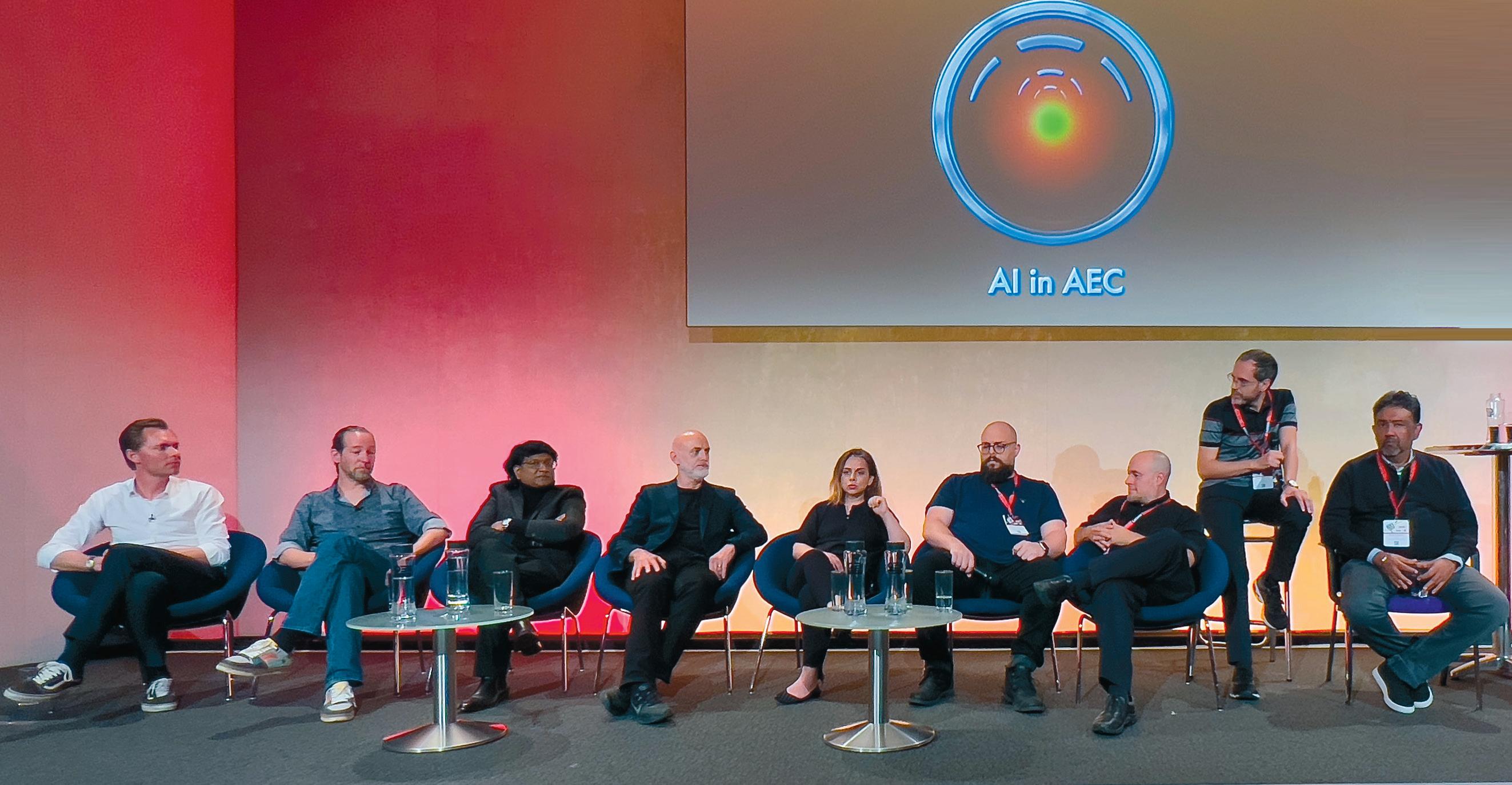
NXT
DEV intro: BIM 2.0 Martyn Day // AEC Magazine

Our very own Martyn Day gave a compelling introduction to NXT DEV, AEC Magazine’s new event highlights new AEC design software developers which are helping to define next generation ‘BIM 2.0’ capabilities, while connecting leading industry practices with AEC software developers and venture capitalists / business angels to discuss the future needs of the industry.
In his view, BIM 2.0 means moving from files to databases, embracing AI / ML, advanced modelling, automated 2D drawings, openness, link to digital fabrication and built in sustainability tools. Watch out for the slide that hates itself.

AEC technology market trends Jay Vleeschhouwer // Griffin Securities
Vleeschhouwer is MD of Griffin Securities, a Wall Street-based research driven investment banking firm. We have been friends with Vleeschhouwer for decades and meet regularly at CAD events around the world, though he goes to the analyst sessions, and we’re with the press. He is without doubt the most CADfocussed analyst on Wall Street, regularly writing reports about MCAD, AEC and EDA players and markets. For NXT DEV, he graciously came to London to deliver some very fresh research and analysis on key AEC financials, specifically looking at the revenues, R&D spend and outlook for the main players.
KOPE Mark Thorley
Building buildings in a factory is very different to doing it the traditional way, from the design process through to fabrication. Starting off by supporting volumetric modular, Kope has built a ‘productisation’ platform which now caters to many types of off site construction. Thorley explains how the company’s two components, Kope Market (instant tender, costing, supply chain insight) for products and Kope Construct (automation engine) can be used to test and optimise how prefabricated components work together.
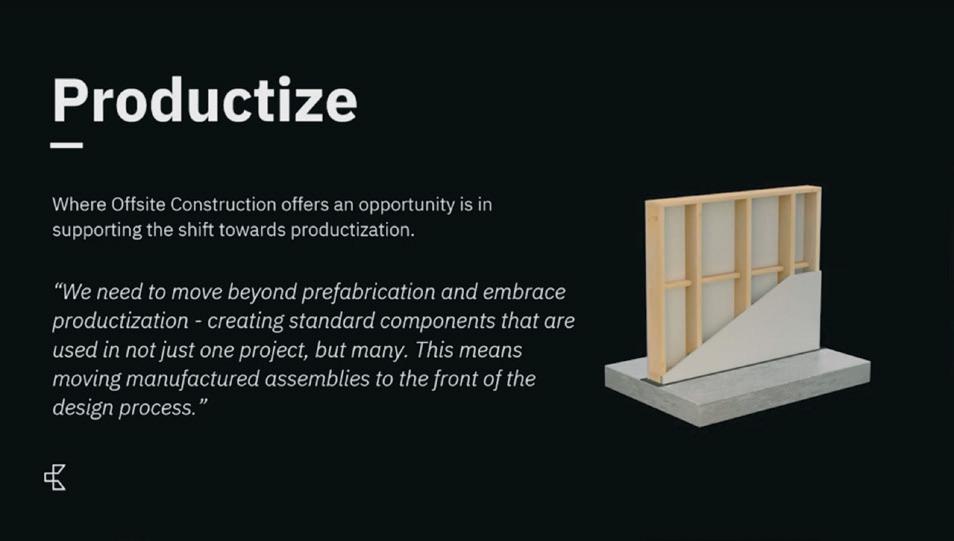
26 www.AECmag.com July / August 2023
Panel discussion: AEC design technology





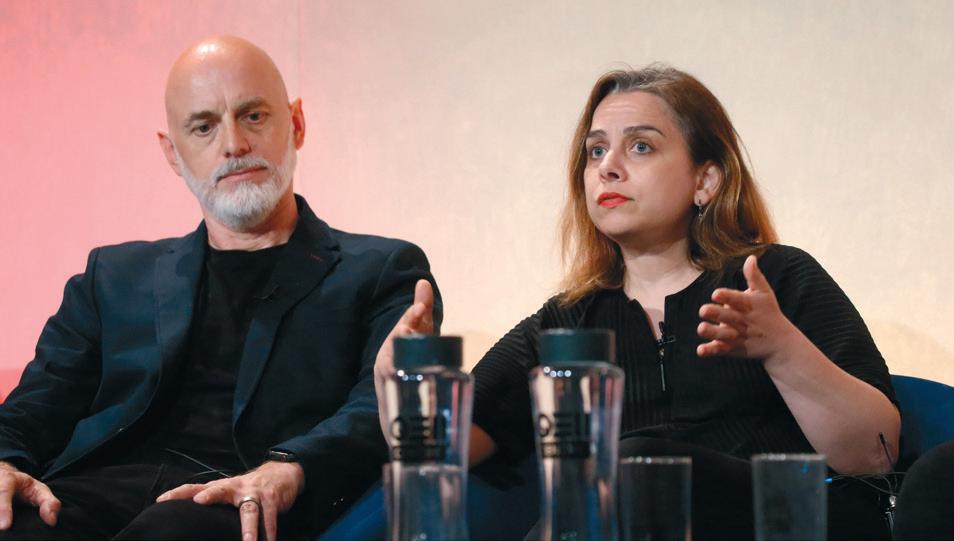
This brains trust representing Grimshaw, HOK, BIG and AHMM discussed the limitations of the current tools and what they want from the next generation. Addressing an audience that included the developer community and investors wondering where to spend their money, the panel explained that it’s down to the customer to set out where they need the software to be, so there is incentive to head in that direction. There was also talk on the need for open data standards, because the databases being developed by AEC vendors for the next generation were essentially proprietary, again.
Panel discussion: How can this industry sustain its commitment to sustainability?

The AEC industry needs to hit stringent sustainability targets in just over five years. Our disparate group of sustainability experts discussed the challenges faced. Topics included: why firms develop their own sustainability applications, reinventing the wheel; how sustainability tools fail to integrate with current workflows; specialist software for nerds vs tools for generic designers to get people on board; and where are the new start-ups? How early should accurate sustainability tools be used vs results that give colour indicators. Old habits need to be challenged and benchmarks need to be established.
Panel discussion: How much are we learning from prefabrication failures?
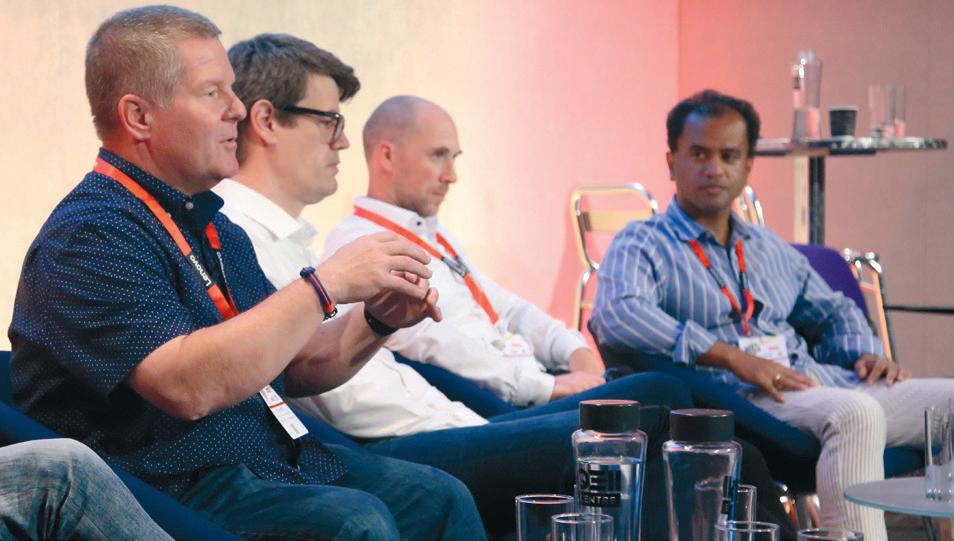
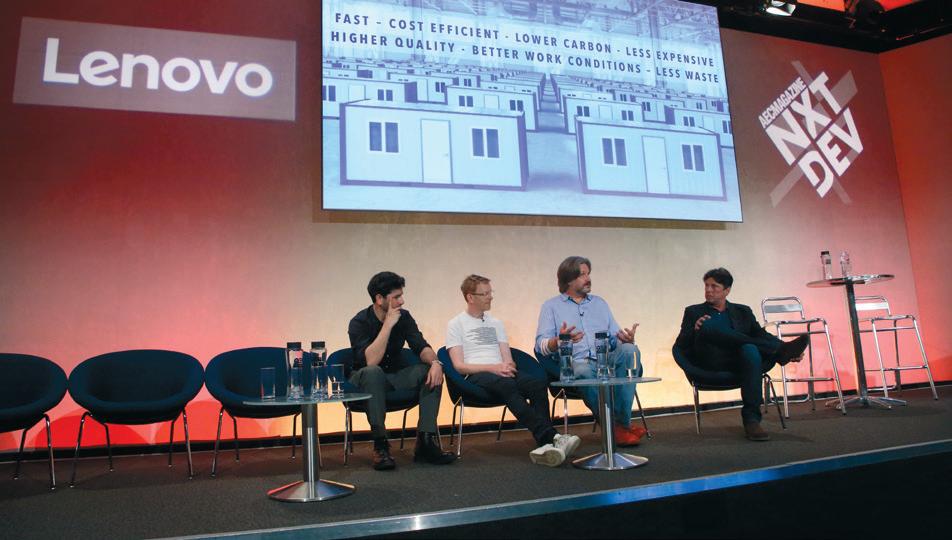
In light of a string of major off-site construction firms going bust, we hosted an expert panel to have a frank discussion on what’s gone wrong and what we can learn. DPR’s Charlie Dunn said, “Automation can be a real burden if it’s not purchased correctly and if there’s no real engineering process for manufacturing.” Fabrication knowledge is not manufacturing knowledge.
Kope’s Oliver Green explained where it is going right, “Bathroom pods, precast stairs, wall cassettes are really taking off, that’s super exciting. Prefabrication failures are largely flash in the pan, modern high-risk volumetric.”
Panel discussion: AEC Venture Capital and development
One of the key pillars of NXT DEV are the Venture Capitalists, Business Angels and Enterprise Investors. Tom Kurke from Bentley Acceleration Ventures identified that there was a massive slow-down in the venture market, started in later stage investments. A correction is coming in terms of valuations and prices. His advice to start ups was “Preserve your runway for 18 to 24 to 30 months as we don’t know how long the downcycle will last.” Shubhankar Bhattacharya from Foundamental thought it was a fantastic time to invest and that while some correction was going on, it was perhaps correcting too much.
Panel discussion: AI in AEC
In a far ranging discussion on AI, we covered lots of topics. “AI is the fastest, dumbest intern you have ever had”, said Anthony Hauck. While Amar Hanspal said that “In a 15, 20, 25-year horizon it’s probably the most fundamental new technology in the AEC space.” Martha Tsigkari explained that training AI is a problem in AEC as we don’t have the standardised datasets or documentation like the legal profession. Will every firm have their own pet AI trained on their data? What will this do for employment? Plenty of food for thought in this discussion.

27 www.AECmag.com July / August 2023
www.nxtdev.build
Andy Watts (Grimshaw) (pictured) Jens Majdal Kaarsholm (BIG) Aaron Perry (AHMM) Greg Schleusner (HOK)
Tom Kurke (Bentley Acceleration Ventures) | Philipp Leutiger (Holcim Maqer) | Shubhankar Bhattacharya (Foundamental) | Moritz Luck (Business Angel) | Jesse Clemans (A0Proptech)
Oliver Green (Kope) | Bruce Bell (Facit Homes) | Charlie Dunn (DPR) Richard Harpham (ex Revit, Autodesk, and Katerra)
Philipp Leutiger (Holcim Maqer) | Mirren Fischer (MDRxTech) Dr Sarah Surgeoner (Creative Building Performance)
Richard Harpham (chair) | Martha Tsigkari & Sherif Tarabishi (Foster + Partners) | Adi Shavit (Swapp) | Francesco Iorio (Augmenta) Cobus Bothma (Nvidia), Senthil Kumar (Slate) | Anthony Hauck (Hypar) Jesper Wallgren (Finch) | Amar Hanspal
BIM 2.0
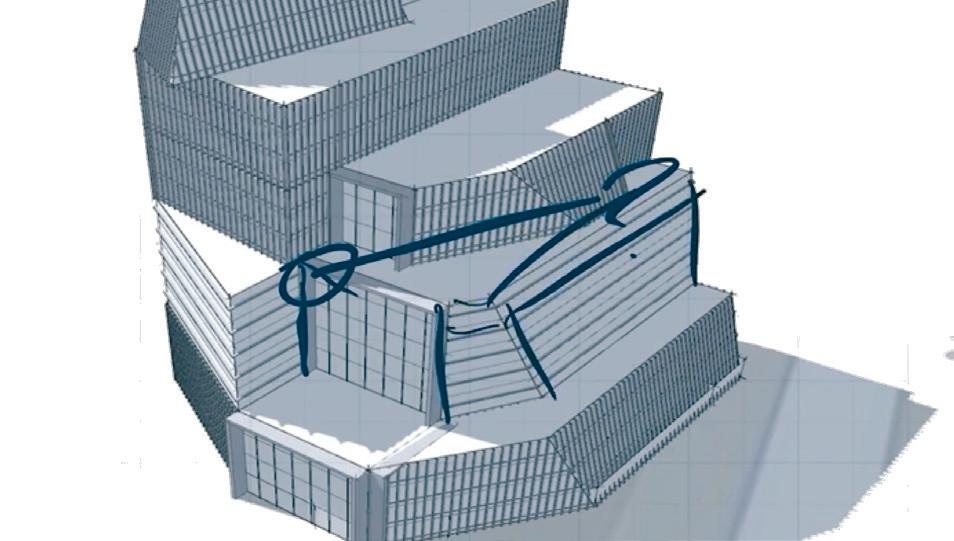
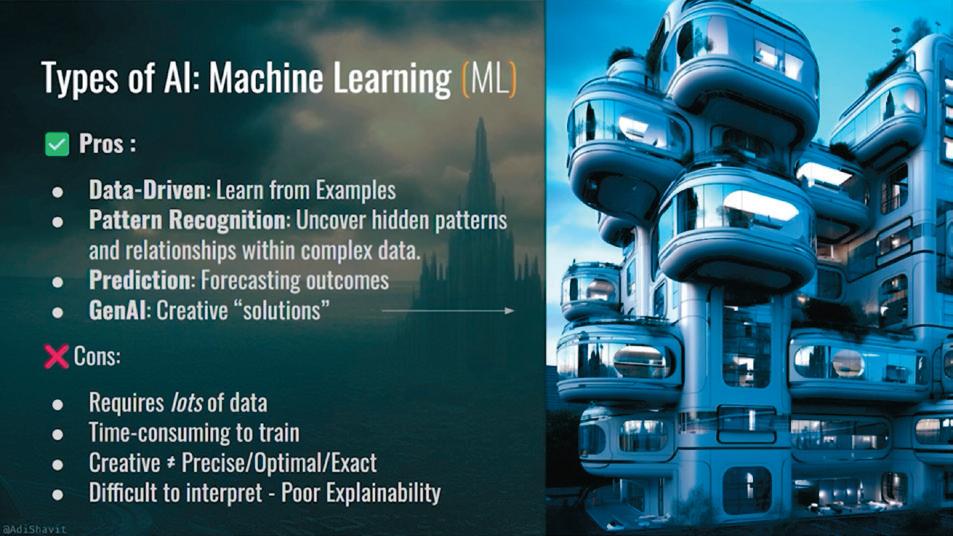
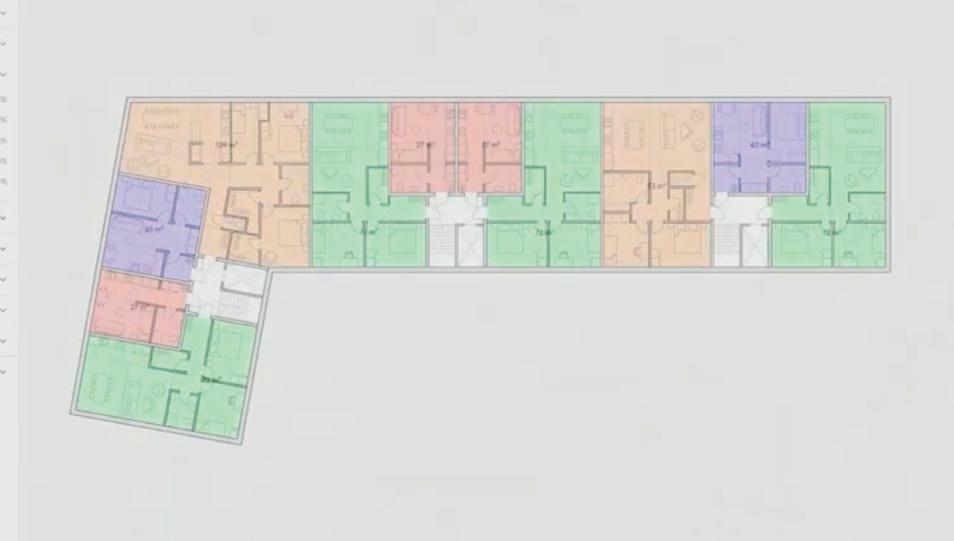
Finch
Pamela Nunez Wallgren & Jesper Wallgren
Finch3D already has over 12,000 people signed up for the beta of its building design performance and optimisation tool which leverages graph technology. NXT DEV managed to coax the two founders over to London to give a bit more insight into what Finch3D is and what is coming. The software identifies potential errors and gives optimal solutions during the initial phases of the design process. It’s all real-time and should streamline building designs.
Swapp
Adi Shavit
Swapp is causing waves with its cloud-based tool which aims to take sketches to fully detailed models, then produce project documentation in minutes using AI. Shavit delved into the influence of AI on AEC, exploring the diverse methodologies employed by Swapp, including mathematical optimisation and ML to streamline design development and construction documentation. By automating these processes, less time will be wasted on repetition, while reducing project timelines. It will empower architects to do more design and less documentation, which in turn will allow firms to handle multiple projects with a high level of consistency.
Spaces (now called Codesign)



Martin Sheehan
Architectural conceptual tools have tended to be blocky desktop affairs. Spaces, now rebranded Codesign (www.getcodesign.co), is the first purposebuilt conceptual tool for the iPad Pro and pencil accessory. It has powerful 3D modelling tools, does sun studies, imports surrounding context, offers datadriven design and has plenty of features to explore variations on ideas.
28 www.AECmag.com July / August 2023
NXT DEV on-demand
Augmenta Francesco Iorio
Toronto-based start-up Augmenta uses AI to automatically build and connect routed systems in BIM models uploaded to its cloud service. Already capable of wiring up electrical devices such as lights, to a ‘power room’ in a BIM model, the system also estimates cabling / wiring / piping, minimising waste. Augmenta is in the process of adding auto-routing plumbing and MEP ducting to its capabilities.





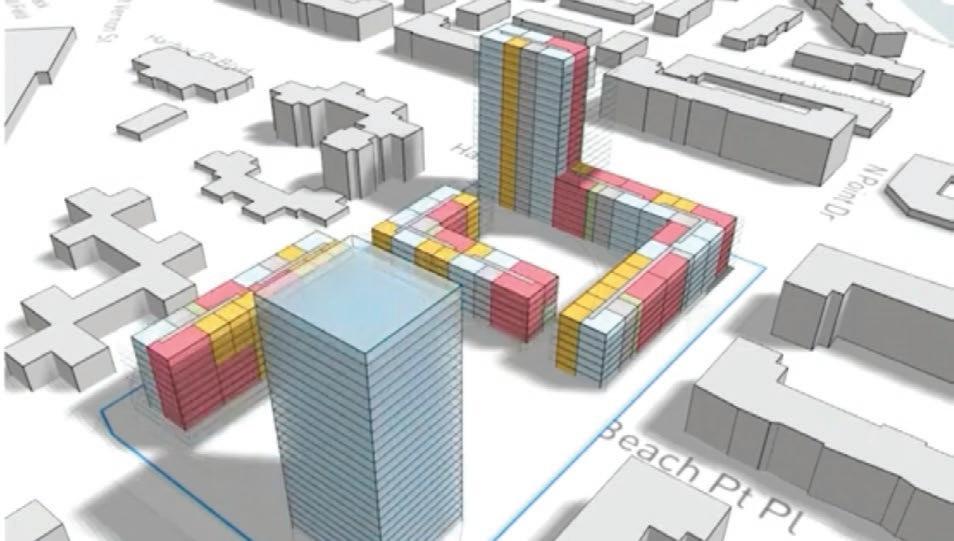
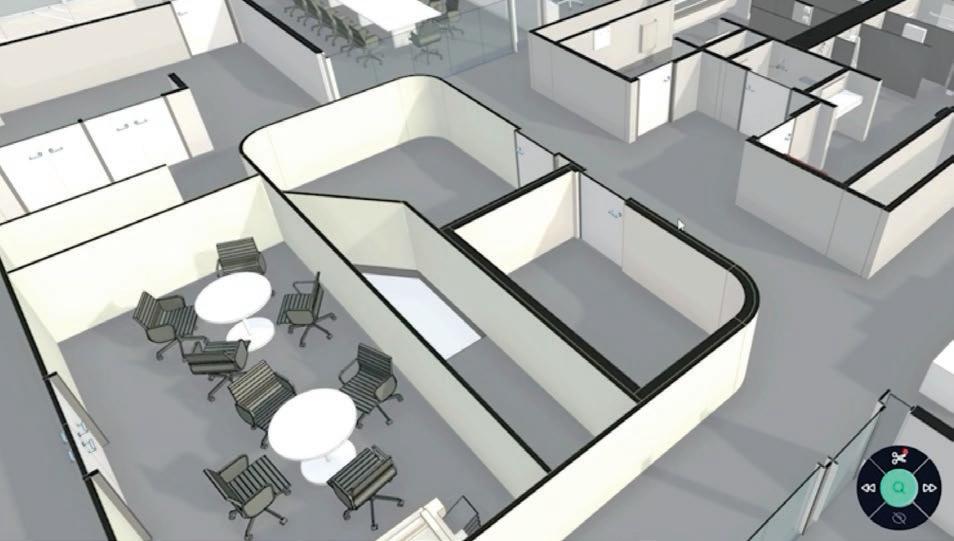
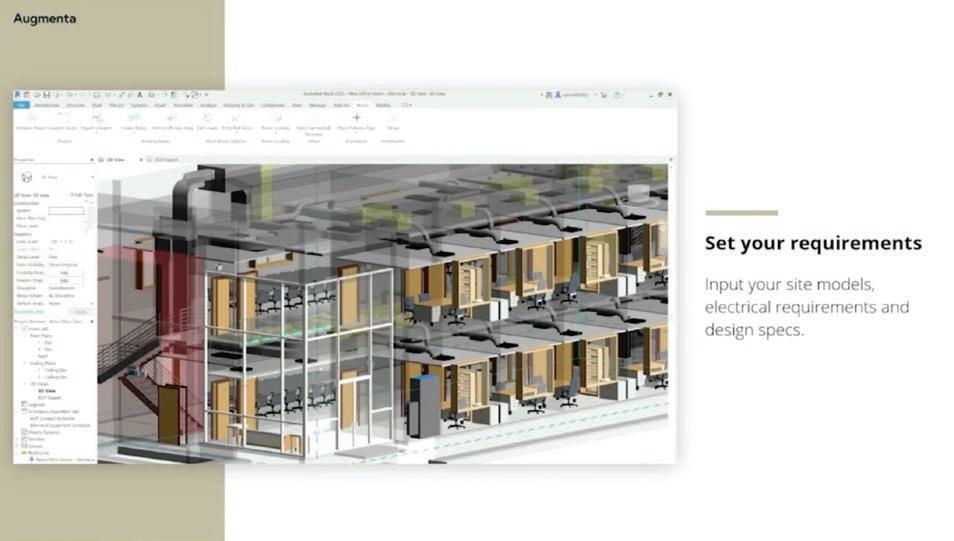
Hypar Anthony Hauck
Hypar is a cloud-based platform that uses generative design and automation to streamline and enhance the AEC design process. The platform offers powerful tools for creating, analysing, and iterating building designs and has a chatGPT interface, where buildings can be described via text and the software auto-generates a response, based on a given envelope and parcel definition. Hauck delved deep into the capabilities and showed the incredible level of modelling detail that the system now works to, with fully engineered roof drainage systems, embedding manufacturers knowledge. It took a few years, but Hypar really is finding its stride.
Snaptrude
Altaf Ganihar
Snaptrude is a brand new BIM platform with cloud at the core. This enables new capabilities for real time collaborations and data sharing, removing the data interoperability problem. At NXT DEV, the company exclusively showed the forthcoming version 2. While browser-based, it’s highly performant and does sketching, parametrics, push / pull modelling, live room calculations, support for families, import and export RVT data, load maps or city data. This is the ‘Figma for BIM’ or Google Docs, and allows other users to log in and comment, markup or model. Snaptrude is showing exemplary development velocity.
Qonic Erik De Keyser & Tiemen Strobbe
After 20 years of modern BIM, Qonic thinks that there is not a system that can really offer a cradle to grave workflow. There is no single BIM model, there are many — design, construction, facilities management (or digital twin). BIM tools need to go from concept to fully detailed model, not just a part of the process. We need to stop reworking and reinventing the wheel, said De Keyser. Qonic is a collaborative cloud platform to uplift BIM from design through to detail. It is based on IFC, so everything is owned by the customer with no proprietary file format. Strobbe demonstrated how fast the system is with large models.
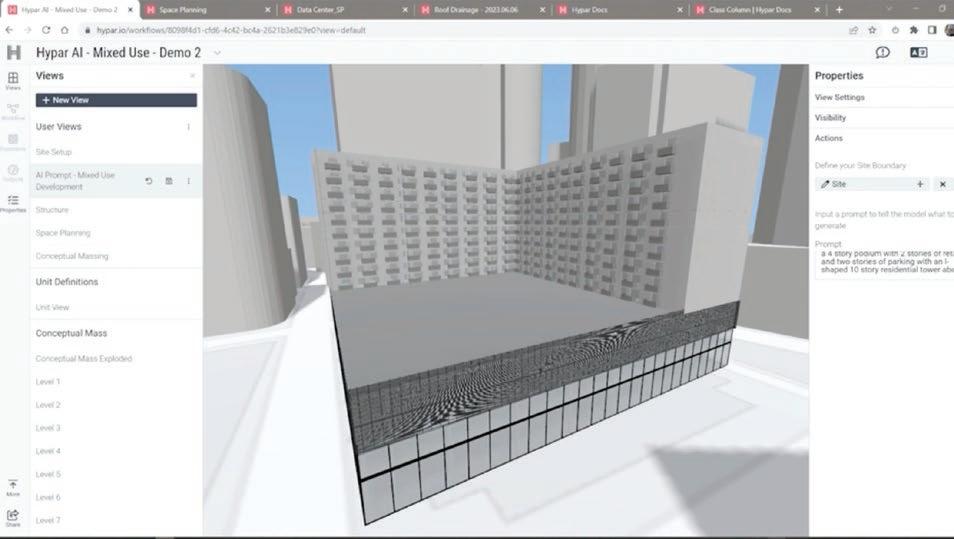
Blue Ocean AEC Marty Rozmanith
Blue Ocean has been developing green tools for building design and construction for some time. But now with industry veteran Marty Rozmanith on board, the company is aiming to make advances into design automation. Rozmanith demonstrated the capabilities of a new product, Skema, aimed at rapidly resolving site, context, massing, sustainability, blocking, stacking conditions with meaningful metrics. The company is also designing SkemaBIM, a BIM Knowledge Reuse Engine, which can generate LOD 350 BIM data from Skema masses and site layouts.
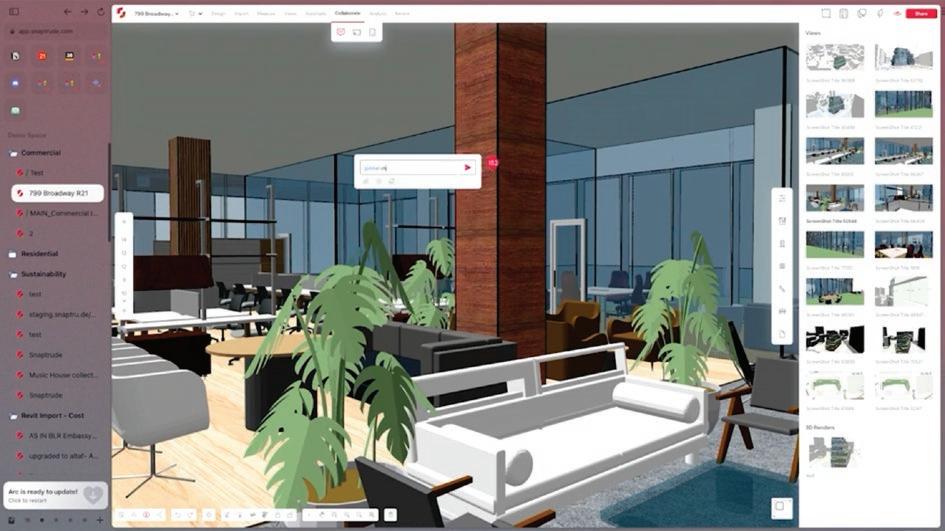
29 www.AECmag.com July / August 2023
www.nxtdev.build
Accelerating AECO Software Development Cobus Bothma // Nvidia

In his NXT DEV presentation, Bothma explained how users and developers can apply the Nvidia tech stack to accelerate AECO software development. Nvidia offers GPU /RTX, SDKs and Omniverse, providing non-destructive layering of imported data, custom schemas, data storage and Hydra for custom renderers. The stack of SDKs offers deep learning super sampling, voice to application capability, deep neural networks, path tracking, edge compute and text to 3D to highlight just a few (there are 350). There are a tonne of really useful tools for developers in AEC. Omniverse hardly scratches the surface.
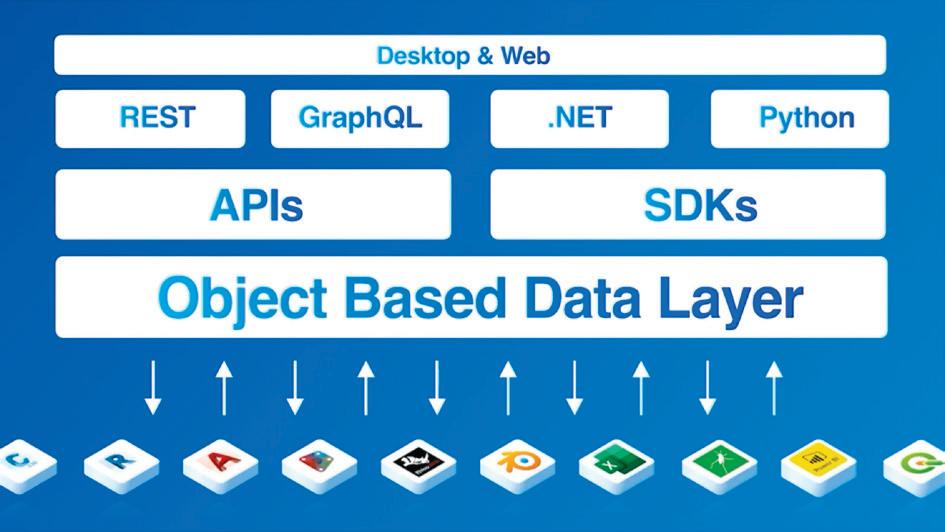
Founders story Eric De Keyser // Qonic
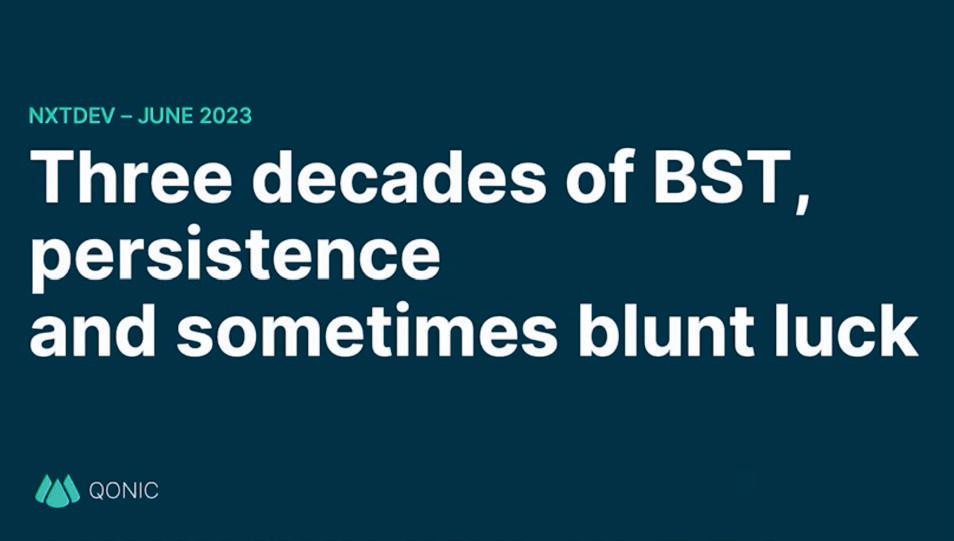
An architect turned serial CAD software entrepreneur, De Keyser created Triforma, Bricsys / BricsCAD and now Qonic. He has gone through pretty much everything an entrepreneur can go through, building BIM products, bad deals, the euphoria of taking a firm public, the horror of losing it all in a crash, rebuilding, selling out and starting yet again. Listening to De Keyser talk you get to know the character of a man that doesn’t give up and the determination that eventually led to a successful sale to Hexagon. With Qonic, which is mainly selffunded, Erik and the co-founding team still believe that BIM can be done better.
Speckle
Jonathan Broughton
In an AEC world full of silos there have been few answers to data portability. Speckle is open source and isn’t constrained by proprietary formats in its ability to grab BIM data and freely distribute it to applications from different vendors. It is becoming a popular tool for seamless interoperability at an object level. Jonathan Broughton took us through the world of Speckle.
Urbanly (CityCompass)





Federico Fernandez
Federico Fernandez is the CEO of start up Urbanly. He flew in from San Francisco to demonstrate CityCompass, the company’s tool for exploring urban decision making. The software can be used to check public policy through a scenario-planning interface and allows the modelling of macroeconomic variables like inflation rates, interest rates, and market shocks for the simulation years. Sounds like the software is coming at just about the right time!
30 www.AECmag.com July / August 2023
November / December 2021 SEE YOU IN LONDON NEXT YEAR
www.nxtdev.build NXT DEV on-demand
YOUR BEST DESIGN OPTION
A brand new design option solution, professional visualization tools, improved project management workflows, and open, multidisciplinary design collaboration make Archicad 27 your best design option.
 REFLEX ARCHITECTS KINEUM, SWEDEN REFLEXARK.SE
PHOTO: MARKUS ESSELMARK
REFLEX ARCHITECTS KINEUM, SWEDEN REFLEXARK.SE
PHOTO: MARKUS ESSELMARK
Will AI design your
The field of AI is not new — research started in 1956 during the Dartmouth Summer Research Project. But it is only after a half-a-century-long “AI Winter”, with the unexpected breakthrough of OpenAI’s ChatGPT, that AI is now all the rage in 2023 — and for a reason. AI now has human-level cognitive abilities making it capable of passing the US Uniform Bar Exam with a higher score than 90% of humans.

AI fares well on the creative side, too: it can compose music, write poetry (helpful in creating lyrics for the music it just composed) and generate image representation of anything imaginable or rather “prompt” -able by the expression of natural human language. No wonder news headlines are full of “[BLANK] profession is in danger of losing jobs to AI” –feel free to fill in the blank with “journalists,” “marketeers,” “programmers,” “lawyers” or many other white collar job titles.
What does all this mean for the AEC industry? Will AI take architects’ and engineers’ jobs too? Or will it make them much more fulfilling instead? No one knows the future, and there are multiple scenarios for AI to unfold, but one thing is certain – our profession will be fundamentally different by the end of the decade. What follows is a discussion of the
relevant points to help answer the questions stated, giving you a better overall understanding of the subject so that you can prepare.
Let’s start with definitions: AI (artificial intelligence), ML (machine learning), and DL (deep learning) are used interchangeably in colloquial language, and while they are related, they are by far not the same thing.
AI is an umbrella term for machines that can do things beyond sheer automation — a robot vacuum cleaner that can clean rooms of any shape without specific instructions is already considered AI. Its “intelligence” comes from its software; simply put, the AI revolution is a software revolution.
In traditional software development, people (programmers) specify the instructions for the computer. AI uses a new programming paradigm called machine learning where computers aren’t given specific instructions. Instead, they are shown vast amounts of examples of input<>output pairs (e.g., input: a photo of a bus <> output: image label “bus”) from which they distill patterns that will become in this example an image recognition software. (Fun fact: with CAPTCHA tests you, the human, have been teaching the computer these patterns).
The AI breakthrough is the result of
recent developments in GPU-based mass computing married with traditional “statistical” methods to find patterns in large datasets of images (photos, medical x-rays, video frames, and photos), sound (speech and music) or text (emails, websites, and books). The resulting software can be used to recognise similar patterns in new datasets (e.g., cancer diagnosis, voice recognition), and to generate new similar datasets (prompt-based image, text, and music generation).
You might wonder if it’s possible to train AI on large datasets of architectural plans or better still building information models and have AI design buildings by the design program as the system “prompt”? There are startups already offering promises very close to this vision but there are still more questions than answers today. Would you (your client) really like this approach to building design? Would you (your client) agree to contribute your existing design (asset) IPs to train the AI? Wouldn’t such an approach lead to too much uniformity?
The more relevant question is how AI can contribute to building design today? It most certainly won’t “design your next building”, but it can potentially contribute to it by augmenting your capabilities by making you a better, more efficient designer.
32 www.AECmag.com July / August 2023 Opinion
www.AECmag.com
Will AI take architects’ jobs too, or will it make them much more fulfilling instead? asks Akos Pfemeter of Graphisoft
next building?
You can already use generative AIs such as Stable Diffusion or MidJourney to help you with design ideas in the form of renderings based on your mass model. There are third party integrations with BIM software already available and native integrations (i.e., one from Graphisoft) are underway.
In the immediate future, we can expect further integrations with existing large AI models to make specific tasks easier/ better/automated. The target range is extremely broad, including voice/natural text or even gesture control for BIM software (revamped “command line” anyone?), BIM integrated AI chatbot for personal training/support, and AI translated “lightweight” API for broad accessibility to a more democratised add-on development.
On the not-so-far-in-the-future-term model generation from drawings, images, point clouds or even from natural language-given prompts is a promising utilisation of AI. This will provide the key to unlocking vast reservoirs of dumb/ analogue/proprietary information into intelligent/parametric/open formats, accelerating the digitisation of buildingrelated data/content. A specific example of this model generation is when natural language prompts are used for parametric object scripting (GDL, anyone?).
But the highest yet achievable AI goal should be to free human designers from mundane tasks such as technical documentation. In this use case, the architect would focus on what s best in design. At the same time, the computer would carry out the laborious tasks of technical detailing and documentation (not to mention the multiple cycles of updates while the design is still changing). This is undoubtedly one of the more complex tasks for AI implementation, but still within our reach.
Whether AI will ever provide complete architectural services directly to clients is still an open question. One thing is for sure: future architectural and engineering practices will require a different type of workforce with different skillsets than today; “prompt engineering”, for example, is an emerging field where you learn how to ask the right questions of AI – a skill we will need to master to a degree, should we want to yield the benefits of existing and future AI systems.

AI will undoubtedly have a lasting impact on our industry but probably even more so on humanity. AI truly has
the potential to turn society on its head, disrupting everything, including wealth distribution, political control, and how we live — similar to what the steam engine did to medieval Europe during the industrial revolution in the 18th century. A growing number of AI scientists go even further, demanding a six-month pause on all large AI model training so that we humans can catch up with the latest progress in AI.
Should we be optimistic about AI? If we survive singularity, we certainly will have a powerful ally to help solve our biggest problems, such as global warming, crime, poverty, pandemics, erosion, etc., but to get there, we need safeguards. We should not only worry about IP rights, AI alignment, and a new arms race but also ensure we don’t we don’t transmit our own human biases to the machines. If we succeed, AI will bring never before seen prosperity to humanity.
Pfemeter provided some useful and interesting links in this article, far too many to print in this magazine. Read the article on aecmag.com to explore in more detail.
33 www.AECmag.com July / August 2023
‘‘ AI will undoubtedly have a lasting impact on our industry but probably even more so on humanity ’’
Revizto reflections
While attending Revizto’s London Field Day earlier this year, Martyn Day caught up with CEO, Arman Gukasyan, to discuss the company’s origins, development path and latest release

In the world of digital coordination and project information dissemination, Revizto has been pushing the boundaries since 2011. Headquartered in Lausanne, Switzerland the company quotes that it has over 150,000 AEC users in 150 countries. After 12 years of development, it’s still a private company and has a user-base that’s growing rapidly, including firms such as AECOM, BAM, Atkins, Grimshaw, BDP and Balfour Beatty.
The software has evolved from basic viewing and filtering to being an essential tech stack element. The Revizto cloudbased hub provides a highly performant single source of truth for 2D and 3D project data, together with issue tracking, VR, clash detection and now with a fullpower iPhone and tablet client.
Martyn Day: Revizto has appeared in AEC Magazine for some time, but I don’t think we have ever covered the origins of the company and where its technology came from. How did Revizto start?
Arman Gukasyan: It all started following a stint working for Infomap. Part of my role was developing the business and in meetings and discussions with c-level executives about city planning, I found out that they were getting not only different sets of data from different disciplines but also each city and county/region had their own set of standards and guidelines to follow!
With buildings, infrastructure and cities becoming more and more complex, the data they needed was insufficient for their needs. At the time it was all about CAD data as BIM was only just being talked about.
I started to experiment to see which technologies could handle the heavy 3D data without distorting it, and create a lightweight, interactive version, which could be used for communication and collaboration.
It was pretty clear to me that gaming technologies were the way to go, as a number of games included expansive maps and models of cities.
With angel investment I started the business in 2008 and hired the first employee who was a game developer. We wanted to disrupt the AEC industry with technology to support project coordination, collaboration and project communication; and be uncomplicated and scalable.
Our experiments started with 2D AutoCAD data and us creating 3ds Max models. At first, we provided a service for small to medium-sized construction projects, delivering an EXE file which created an interactive way to explore designs. This created a huge clash between owners and architects, as the architects didn’t recognise their designs, as they had never seen all their data import ed into one place before! It gave them a whole new con text on the project.
Martyn Day: bought UK developer Navisworks in 2007. To some extent this was their BIM viewer for the masses. It sounds like rather than delivering an application you were more of a ser vice at the time?
Arman Gukasyan: We delivered two main projects as a service business before deciding that this wasn’t where I wanted the company to be. [The first project was] creating an exact replica of the Olympic Village, both buildings and infrastructure for the Olympic Committee.
They used this model to train 4,500 volunteers six months before the Olympics took place, which hadn’t been done before. One of the Olympic sponsors, Coca Cola used the model to help decide placement of their billboards to assess viewing points.
The second project was a model for La Sagrera in Barcelona, a high-speed train connecting Paris and Barcelona. Our model and simulations helped to identify that the platforms would be too narrow to manage the rush-hour capacity so changed were made to address this issue.
We developed Software as a Service in 2011 when Revit and SketchUp were the main authoring tools. We developed plugins for the model so that data could be ‘sucked out’ of Revit, taken into Revizto and optimised allowing users to interactively explore their designs in a basic way.
Seeing that this was not enough, we then created an issue tracking component to sit on top of it based on Jira from Atlassian and adopted for the AEC industry.
I travelled between Switzerland and the US a fair bit in the early days, so this is where I first recruited a dedicated sales representative. Then we came
34 www.AECmag.com July / August 2023
to the UK, EMEA followed by APAC.
We launched Revizto at Autodesk [University] AU in 2012. We were a very different offering from what was on the market, Revizto’s focus is, and always will be, on ease of use.
After the initial successful launch, we started to develop the issue tracker more, bringing 2D and 3D together, because, even today, 2D is still a big part of the process, when it comes to contractual documents.
In 2015 we developed an automatic overlay with a 3D [model], which proved very popular and in turn, we were being trusted by larger organisations and working on bigger projects.
Although it seemed like the main authoring tool being used by the industry for BIM was Revit, we realised that we had to maintain being platform agnostic and also support others like Bentley, Nemetschek and Trimble so we developed integrations for all the platforms. Every market vertical (civil, rail, oil and gas, mining, architecture etc.) has different tools that they use. You can bring your data into Revizto no matter how you create your data!
In 2017/2018 we added support for point clouds, as firms increasingly started to check the reality against the BIM data. We were the first to work out how to get point clouds on phones and tablets. Our customers can load huge point clouds without any challenges or streaming, caching locally, automatically. When you are using a streaming-based solution, you are very dependent on your bandwidth and where and when you can open a project. In Revizto, once you open a project, it’s cached on your local machine or mobile device (phones and tablets).
Martyn Day: In all Common Data Environments (CDEs) and model viewers, clash detection is always high on the end user wish list. Last year you released a major update with a very good, mature clash detection capability. This caused some issues with Autodesk who refused you a stand at Autodesk University. With Spacemaker and Navisworks, you were suddenly deemed perhaps too competitive?
Arman Gukasyan: We spent several years (2018 – 2021) developing clash detection whilst watching the market to see if solutions such as Navisworks or Solibri were going to be developed further in this direction. We saw no evidence of this and as our customers were
asking for a clash tool, we released the capability within Revizto in 2021 to create an integrated collaboration platform.
Martyn Day: Autodesk really confused the Navisworks product, moving some functionality to the cloud and leaving some on the desktop, which meant your data needed to be in two places, depending on what functions you wanted to do. I’ve come across users who had been told that Navisworks was end of life.
Arman Gukasyan: Our philosophy here at Revizto is to listen to what our customers would like, really listen. This is done in a number of ways, with the main one being through our implementation team who have all come from industry. This team encourages our customers to show us their challenges and we aim to develop a solution.
Our clash solution came about from these conversations – a truly collaborative process. Revizto cloud architecture allows everyone involved in the project (no matter where they are based) to view which clash tests are being worked on, however no one else can touch these clash issues until the person working on them finishes. Once finished everyone can view them in real time.
Clash detection is not about creating millions of clashes and stuffing them into an issue tracker. Clash detection is how can I create a clash free model, and then feed only the real clashes into the issue tracker? With other solutions, if you open up your mailbox, you have 1,000 or 2,000 unread messages, you will never get to the bottom. With Revizto everything happens in real time.
Martyn Day: While clash detection is highly asked for and highly valuable to protect against causing millions of dollars of errors on site, the number of people that do clash detection seem to be a loud minority?
Arman Gukasyan: That may be so, but clash detection is part of the process in managing data. Revizto is an integrated collaborative platform where clash detection is a main part of the platform. There may be a loud minority, but it is a powerful minority.
Martyn Day: Moving on to the iPhone version, how much data can you hold on it? Can it be used on an iPad? Is there a memory limitation on your app or the generation of iPhone that you can open?
Arman Gukasyan: It depends on what project you’re opening, of course, which would start at the size of the model. We don’t have a specific limitation. We did a lot of testing on both the iPhone and Android, and we can push the limits all the time with the iPhone.
Android is less powerful due to the operating system taking a lot of the available RAM. Our brand-new mobile app isn’t streaming the data, it’s loading highly optimised data and can open models that other solutions and desktop apps can’t.
The most important thing the mobile app does is that it only renders whatever you see (occlusion culling). When the mobile app first opens it asks you what data you want - only the cached data, old updates, or if you want to see a particular pipe. It can load files which contain hundreds of models, thousands of sheets, even point clouds.
Martyn Day: There are an increasing number of iPads / tablets on building sites; why the bias to phones?
Arman Gukasyan: Not everyone has a tablet, but nearly everyone has a phone. Again, we listened to our customers who wanted to be more productive by using Revizto on their phone, anytime anywhere.
Martyn Day: So what capabilities are missing from it?
Arman Gukasyan: You wouldn’t actually do clash detection on the phone. You would use the phone app to see all the clashes that have been highlighted in the issue tracker.
Martyn Day: With clash detection and now the mobile app rewritten, which areas are you looking to develop next?
Arman Gukasyan: We currently cover the design and build part of the process and have started to focus on the handover and FM (Facility management) stage. Other areas of interest include Digital Twins and Augmented Reality. A final point from me is to reiterate that we always watch closely the problems our users have and bring a solution with our own twist. I believe that we have made it easy to access your data, invoke collaboration between all project team members and it will be the main focus for us to make the collaboration seamless across the project lifecycle.
■ www.revizto.com
35 www.AECmag.com July / August 2023
Interview
The Future AEC Software Specification
AEC Magazine: What was the immediate reaction at NXT DEV after you came off stage? What did people say to you?
Aaron Perry: When I came off stage, I couldn’t move two metres without another group of the audience wishing to speak with me. I was surprised how many people really ‘got’ the spec’s intentions. To some extent, I expected many to ask, ‘What about IFC?’ and most people got that we aren’t talking about file formats but web-enabled data exchanges.
Andy Watts: It was also surprising the range of interest we got – from engineers, developers, contractors, even the likes of KPMG. The way Aaron pitched the presentation made sure there was resonation with everyone, regardless of discipline.”
Aaron Perry: Online, it’s been overwhelmingly positive, I expected trolls to express alternative opinions for the sake of it, but the feedback so far has been very positive and complimentary of the initiative. I’ve spoken with vendors and designers, and it’s been encouraging.
Andy Watts: After a few weeks to digest, we’ve started to see some more mature engagement as well, readers wanting to know how this will work.
AEC Magazine: You have HOK and BIG
signed up. What’s happening with the the AIA LFRT and the Nordic Open Letter Group. Are they in the process of approving it?
Aaron Perry: The website has been updated with supporters, and there are many that we haven’t even managed to get around to adding. We received confirmation from the Architectural Associations of Finland, Norway, Iceland and Denmark on the morning of NXT DEV. Since this, we’ve also had Central European associations and firms express interest.


Andy Watts: I’ve met with HOK and Woods Bagot whilst in the US the past couple of weeks. There has been conversation happening informally amongst the US firms – a healthy debate was how that was framed to me. But since then, a number of US firms have also started reaching out –nbbj, Perkins & Will, etc. Greg (HOK) and Shane [Burger] Woods Bagot are also laying the groundwork for a presentation to the LFRT by Aaron and I later in the year.
Beyond that, we’ve started to see Australia get on board in the last few weeks – Cox, Architectus, Aurecon have all started reaching out. And it has recently had some publicity at some AUS events.
AEC Magazine: Construction firms were also interested. Will there be signatories from the construction space?
Aaron Perry: One of the most surprising conversations I had straight after the presentation was from a Tier 1 Main Contractor who said something along the lines of ‘we’re very in bed with Autodesk. We’re actually working with them to build out custom tools for us, but you raise a really valid point that we should challenge vendors too, can we speak more?’ So yes, this is not limited to just designers.
ICE and others have asked us to report to their strategy groups to help them understand where they can contribute.
AEC Magazine: Now that you have delivered the specification what comes next?
Aaron Perry: We’re working on it. We have a solid plan of what steps to take, but I’d be talking out of turn to share that without having received a broader sign-off.
Andy Watts: Agreed. Generally our approach was to put this out in the public to see if it resonated, and then plan from there. We’ve got the resonation –now we’re working on the plan.
AEC Magazine: How can firms contributes to the specification?
Aaron Perry: The spec is live and has started to receive feedback/input. We’re pointing people to that to add their thoughts and adaptations.
Andy Watts: Also, we’ve seen a lot of engagement through word of mouth, so we’d encourage people to share.
■ www.future-aec-software-specification.com
36 www.AECmag.com July / August 2023
Interview
After NXT DEV, we caught up with Aaron Perry (AHMM) and Andy Watts (Grimshaw) to find out what kind of response they had received to the Future AEC Software Specification
(continued from page 16)
Aaron Perry (AHMM)
Andy Watts (Grimshaw)
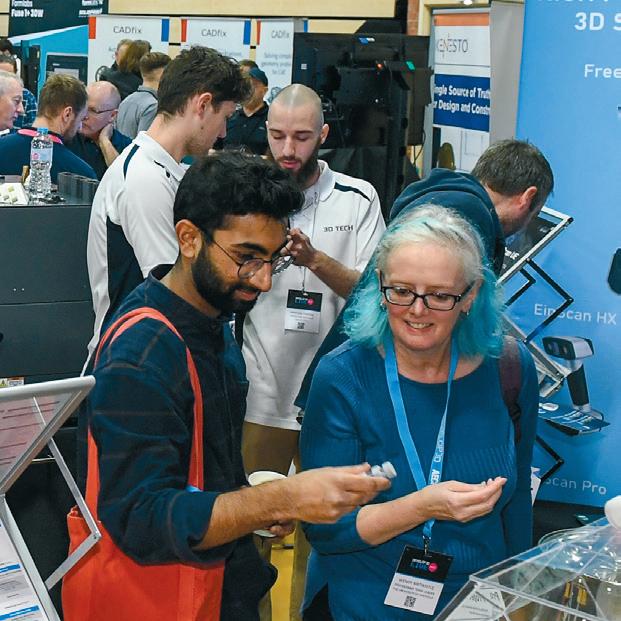
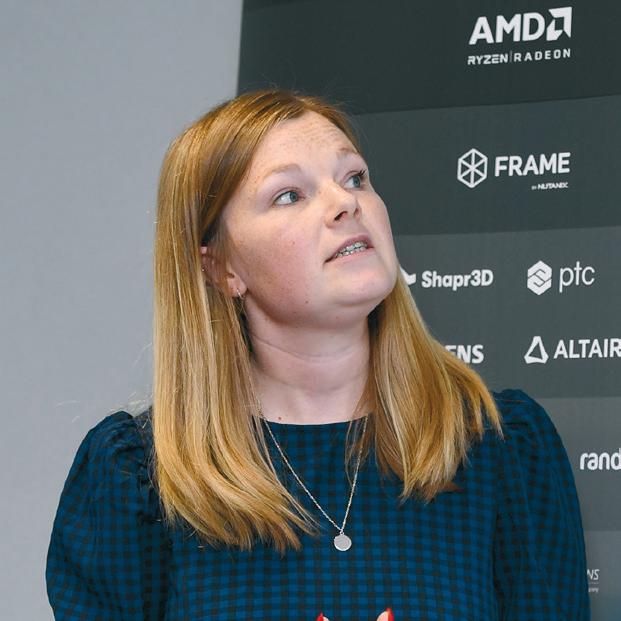
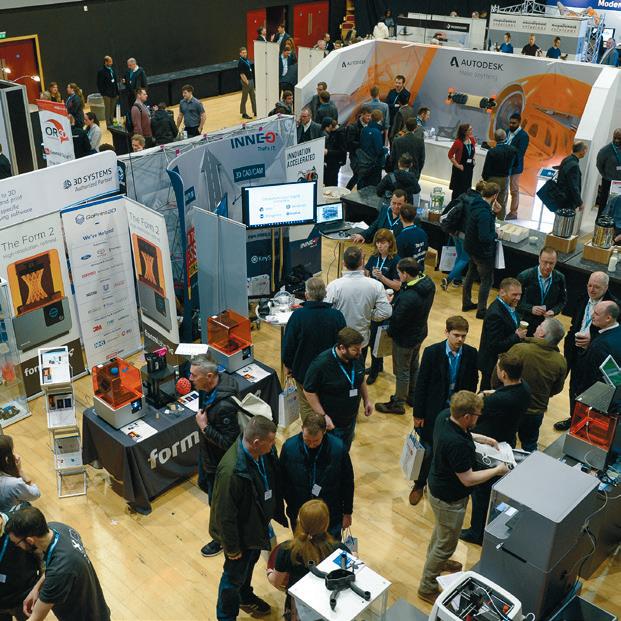
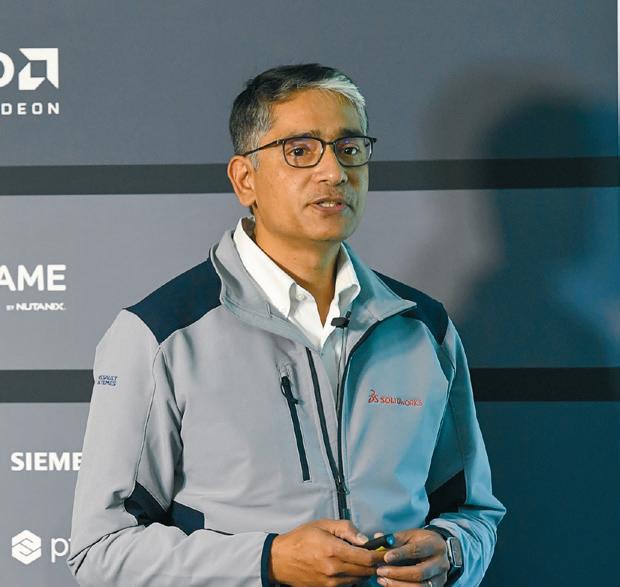
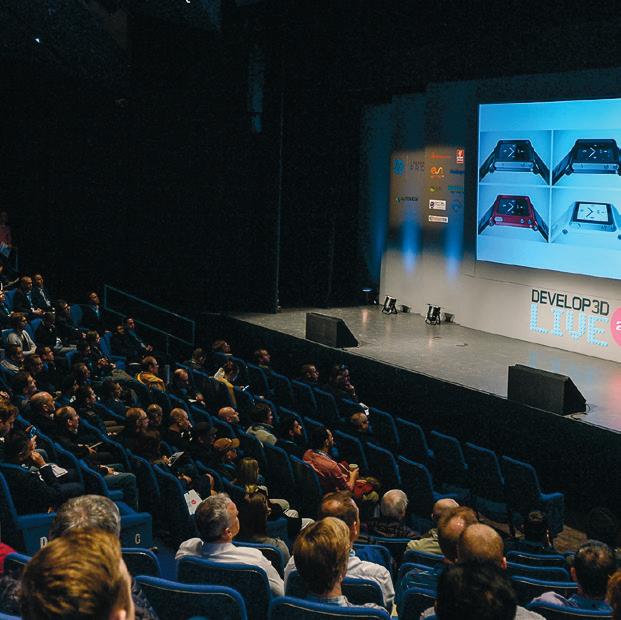






20 September 2023 Warwick Arts Centre, UK 2023 Accelerate your product design & transform your product development D3DLIVE returnstowhereitallstarted * *following£25mrenovationofWarwickArtsCentre REGISTER 100% FREE develop3dlive.com Gold Sponsors Principal Sponsors Silver Sponsors Bronze Sponsors THREE CONFERENCE STREAMS HANDS-ON TECHNOLOGY EXHIBITION CAD Software • Computational Design • Topology Optimisation • Additive Manufacturing • AI • Workstation Technology • Design Visualisation XR • Simulation • Data Management • 3D Scanning • Tolerance Analysis • lots, lots more
Software
Autodesk Tandem: dashboards
In 2015, Autodesk launched its cloud-based development API, Forge. Forge was a set of tools and services for building cloud-based software applications, with integrations to all the main Autodesk products.
For some unknown reason, Autodesk recently renamed Forge to the less impressive Autodesk Platform Services (APS), but the capabilities have remained unchanged.
The key aim is to expedite the development of new applications from these core Autodesk building blocks, such as DWG, viewers, file exchangers etc. If there was a poster child as to the benefits of ‘APS’, it is the digital twin solution Autodesk Tandem, launched in 2021, which is still being rapidly developed in front of our very eyes.
The initial release was very bare bones. It didn’t support IFC and was pretty much a place to ‘lightweight’ Revit BIM models and start renaming and filtering sets of building components for more complex capabilities yet to come.
Since then, Autodesk has continually added sizable chunks of workflow-centric capabilities every couple of months. Given so many models are in RVT format, Tandem could be the tool to bring digital twins to the masses.
Just looking at the last six months, it’s clear the Tandem team is on a mission. In January, Autodesk included the facility monitoring beta program, which enabled Tandem to display near real time IoT data. It was also looking to spot anomalies ahead of equipment failures. This is the most exciting technology for me, as it connects the digital twin database with the physical reality of operations.
In April, the new ‘Systems’ feature was released, which uses system tracing to identify and filter routed systems like MEP, which might be imported as just a bunch of individual components with no ‘intelligence’ associated. It also included new facility monitoring visualisations and heatmapping capabilities.
Now, this month comes dashboards, which you might think is very much at
Twin building
the test and consumption end of the digital twin process. However, Autodesk’s first dashboard offering is very specifically aimed at using dashboards to check the completeness of the twin data.
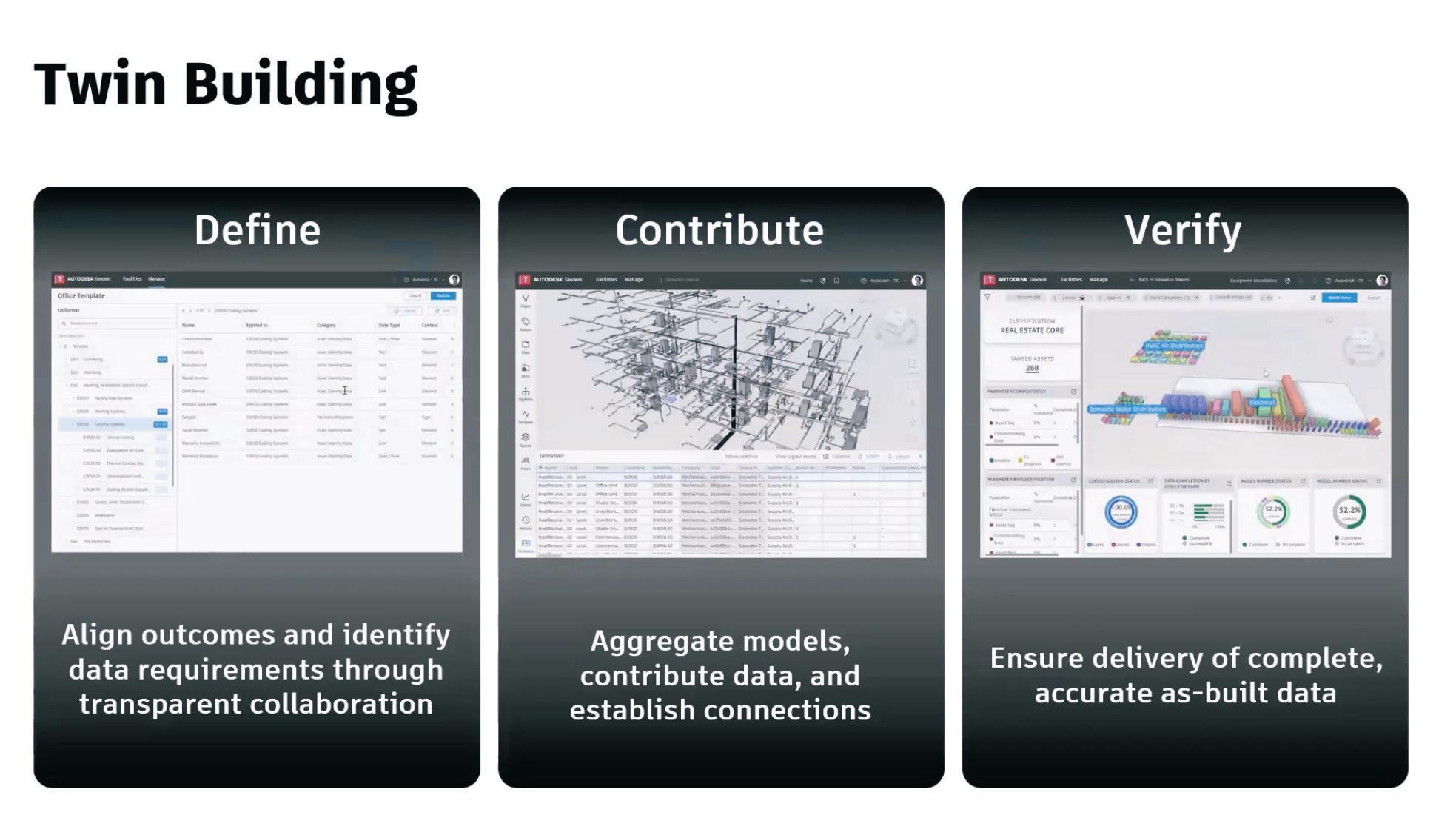
In the demo, dashboards worked off the facility template, which is a place where components get classified and tagged for tracking in Tandem. These can be assets, systems or subsystems, by discipline, and used for phases such as handover or commissioning.
Tim Kelly, senior product manager at Autodesk explained, “We want to be able to provide an experience where we ensure the delivery of both complete and accurate as built data.
“Dashboards are our way to allow customers to dig into specific datasets and review that comprehensively. I know that when the term dashboard is used, oftentimes people refer to a Power BI or Tableau experience where you’re curating all of the data. But we have worked to pre-build some framework around this experience.”
Dashboards are filtered views, that can be easily custom made to create specific packages of information that are relevant to a given period of time or given delivery phase, specific disciplines, specific packages, or different stages.
Autodesk calls each of these defined
elements a ‘card’ and each has chart display options like pie, donut, or starburst. These are stored in a library, so can be inserted into the display to create views with collections of dashboard cards.
The functionality so far developed on dashboards has come from conversations with Autodesk customers who are currently having to take data out into business intelligence applications or specific dashboarding software to create external workflows.
The first function of note is a filter bar which sits across the screen to provide a view of all of the comprehensive filtering across all parameters (sources, levels, Revit categories etc.). This panel reflects everything that is in the dynamic model viewer. Users have the ability to see connected information as components are selected, allowing interaction with the different metrics that appear on screen.
Table views act as a summary of parameter completeness. Parameters are broken down by classification and are applied to different components dynamically. The lower half of the screen displays the dashboard ‘card library’, which is where users build out and track ‘completeness’ of the twin data. This can be applied across different classification levels or on specific parameters which customers want to track. Data pops up
38 www.AECmag.com July / August 2023
Autodesk recently showcased Tandem’s new dashboarding capabilities for obtaining all sorts of metrics from digital twins. This is the latest in a long line of updates which are coming thick and fast. Martyn Day reports.
when hovering the mouse over the display cards. Some let users drill down, offering additional information on a classification level or Revit type / level etc. and the display automatically updates.
While doing that, the viewer always reflects those selections made. It’s a very interactive experience. Tandem is still a highly visual tool for dynamic display of specific datasets.
Autodesk’s focus on bringing dashboarding into its product, with this specific style of experience, is aimed at providing interactive access to data but is specifically focused on the data collection during twin building. The next phase will be to expand this experience, perhaps with more preconfigured dashboards - facility monitoring, sustainability tracking and data validation are all viable options.
From the demo, the process flow, worked thus: load a Tandem model, use the filters to select categories you are interested in checking. The display updates with the elements that fit the filter rules and the dashboard ‘cards’ dynamically change given on what’s displayed / selected. These cards are ‘percentage of name status completion’, asset’s tagged status, and model number.
Each card shows what percentage of the elements have been classified as required. If you pick all the water heaters, you see total percentage unnamed etc. You can use the filters to isolate these objects and all the tables update with feedback on the selection. Here dash-
boards are a tool to help navigate through and identify the outstanding components that need classification. On big jobs I can see how beneficial these tools would be.
Conclusion
To give credit where it’s due, from the complete list of AEC software tools in development at Autodesk, I think Tandem is probably the one with the highest velocity. That possibly might be because it is the newest and has the most to add. But I am impressed with the development team’s monthly reach out to engage with customer (and non-customers) to either discuss digital twin issues or demonstrate upcoming or recently introduced functionality.
I think this is a template for all software development teams but, of course, this is way harder when you have tens of thousands, to millions of users for managers of mature products.
A lot of the earlier functions were centred on the core data parsing and visualisation that is required in the creation of digital twin datasets. While dashboarding might be thought of as more of a way to display real assets status, Autodesk is again approaching this as a tool set to
Issues with digital twins
Those who understand and fully support BIM and VDC methodology are typically very supportive of digital twins and the use of them - if the data has been created in the design process and refined through to construction, especially where COBie data has also been built up for all the serviceable elements of a building. However, there is a lot more to transitioning that data into a useful environment.
The three primary challenges hindering the uptake of digital twin technology are
1. The lack of clarity on why it is better vs traditional 2D Facilities Management (FM) tools
2. The complexity in creating detailed source data and
3. The cost associated with implementation / maintenance.
While you may think having a ‘fresh’ detailed BIM model would make the process relatively seamless and painless, BIM design and construction data is not the type of meta data the digital twin databases need.
The act of creating a digital twin requires meticulous and detailed mapping of physical assets and their data to virtual components, demanding expertise. It requires significant time, and the maintenance of this needs to be ongoing for the life of the building / asset.
It’s something that needs significant planning, resourcing, and budgeting for. The kind of costs associated with current digital twin technology mean that smaller companies, or projects, in particular, may find it challenging to allocate budgets to create and maintain
further identify and isolate models to easily rectify omitted data and complete the digital twin.
Making dashboards requires a lot of filtering and check box ticking, together with an inherent knowledge of the twin’s integrated systems and components. It’s the first Tandem demonstration which really made me think just how much data preparation work, filtering and tagging the digital twin process requires. And all this needs to be done before you get anything valuable out.
I couldn’t help but feel that a ChatGPT interface would go a long way to simplifying the derivation of dashboards and it’s something that Autodesk is currently looking into but there are legal issues. As its capabilities continue to expand, Tandem’s maturing capabilities will be a challenge to keep the interface simple, hiding the complexity of the process, especially when many of those ultimately digesting the output of the system will not be digital twin experts.
■ www.intandem.autodesk.com
An extended version of this article, which includes a comment by Robert Bray, VP & GM of Tandem on how and why Autodesk is developing for digital twins, is available on aecmag.com
digital twins of their assets. There is also the problem with the lack of standardised frameworks and BIM’s inherent interoperability issues which multiplies as layers of data may come from other industries (oil and gas) which use diverse software and hardware systems. This presents a challenge for creating and integrating them seamlessly into one database.
Autodesk here does have the advantage of Revit supporting architecture, structural and MEP. The UK did have a five-year project running with the Centre for Digital Built Britain (CDBB) at Cambridge University, but this recently completed its five-year funding at the end of 2022 and has since and closed its doors (www.cdbb.cam.ac.uk). However, the Gemini Papers explaining the benefits
of connected twin technology are still available as a useful resource:
(www.cdbb.cam.ac.uk/news/gemini-papers)
Security is a potential issue because linking digital twins to IoT sensors means sending data from physical assets to the digital twin data model through the public internet. Organisations remain wary of entrusting critical data to this threat.
Furthermore, there is a widespread lack of awareness and understanding surrounding digital twins. Many decision-makers and industry leaders remain unfamiliar with the technology’s potential, perceiving it as an experimental venture rather than a tangible solution to real-world challenges. This lack of comprehension results in reluctance to invest in uncharted territory, slowing down adoption rates.
39 www.AECmag.com July / August 2023
‘‘
To give credit where it’s due, from the complete list of AEC software tools in development at Autodesk, I think Tandem is probably the one with the highest velocity ’’
Nvidia RTX 4000 SFF Ada Generation
Nvidia’s new compact workstation GPU delivers in all types of AEC workflows, but you’ll pay a premium for this level of performance in such a small package, writes
Greg Corke
Price £1,249 + VAT
www.nvidia.com | www.pny.com
Low profile workstation GPUs — those with a half-height bracket and moderate power demands — are big business these days.
You’ll find them in more types of desktop workstation chassis not just SFFs / Small Form Factors (think, two 12-inch pizza boxes stacked) but ultracompacts as well (the 7-inch personal margarita equivalent).
These compact machines don’t just bring order to space-constrained offices; they play an increasingly important role in centralised workstation solutions, offering impressive density in racks.
It is no surprise that they are among the biggest selling workstations from Dell, HP, and Lenovo.
Small size, big power
For years, low profile graphics cards only really had enough power for entrylevel 2D/3D tools including CAD and BIM. However, some GPU models have now caught up with more demanding 3D workflows, and offer a more rounded solution for AEC professionals.
Revit, Archicad, Vectorworks and SketchUp are a given, but some lowprofile cards can now put in a good shift with companion viz tools like Enscape, Twinmotion, Lumion, Chaos Vantage, Chaos V-Ray and Nvidia Omniverse.
The new contender
The Nvidia RTX 4000 SFF Ada Generation (20 GB) is only the second workstation GPU to be based on Nvidia’s Ada Lovelace architecture. It follows the phenomenally powerful, but phenomenally expensive (£6,750 + VAT), Nvidia RTX 6000 Ada Generation (48 GB), which we reviewed in our recent summer 2023 Workstation Special Report.
The Nvidia RTX 4000 SFF Ada picks up where the Ampere-based Nvidia RTX A2000 left off. It has the same dual slot, low profile form factor, radial fan, four mini DisplayPort 1.4a connectors and 70W max board power, so it doesn’t need
an external 6-pin connector.
It comes with both a half-height and full-height ATX bracket, so it can be used in full sized towers as well.
Nvidia’s new Ada Lovelace architecture gives it a significant boost in performance over the Nvidia RTX A2000, which we will explore in more detail later. It also has significantly more memory (20 GB vs 12 GB), which makes it capable of handling some rather substantial viz datasets, now and well into the future.
If the Nvidia RTX 4000 SFF Ada Generation is the natural successor to the Nvidia RTX A2000 why not call it the Nvidia RTX 2000 SFF Ada Generation?
A cynic might suggest it’s to elevate the GPU’s standing so Nvidia can charge more money. At £1,249 + VAT, the Nvidia RTX 4000 SFF Ada certainly isn’t cheap and costs considerably more than the Nvidia RTX A2000 (12 GB) — currently available for £470 (Ex VAT), although this price is a little cheaper than it has been over the last 12 months.
Alternatively, it could be that Nvidia intends to use the exact same silicon, but clocked higher, in the as-yet released full height, single slot 140W Nvidia
40 www.AECmag.com July / August 2023
Review
‘‘
Chaos Group V-Ray 5.0 benchmark V-Ray GPU RTX 0 1000 2000 3000 4000 5000 6000 Nvidia RTX A2000 1 Nvidia RTX A4000 2 Nvidia RTX 4000 SFF Ada Generation 2 Nvidia RTX 6000 Ada Generation 3 1,007 1,743 1,920 5,277 vrays (calculations per minute) (bigger is better) 1.23 1 527.27 driver / Core i9-13900K 2 536.25 driver / Ryzen 7950X3D 3 528.24 driver / Threadripper Pro 5995WX Luxion KeyShot 11.3.1 benchmark (GPU) 0 50 100 150 200 Nvidia RTX A2000 1 Nvidia RTX A4000 2 Nvidia RTX 4000 SFF Ada Generation 2 Nvidia RTX 6000 Ada Generation 3 33.87 54.89 69.42 187.45 Relative performance to reference system (bigger is better) 1.23 527.27 driver / Core i9-13900K 2 536.25 driver / Ryzen 7950X3D 3 528.24 driver / Threadripper Pro 5995WX SPECapc for Solidworks 2022 benchmark GPU shaded with edges 0.0 0.5 1.0 1.5 2.0 2.5 3.0 3.5 Nvidia RTX A2000 1 Nvidia RTX A4000 2 Nvidia RTX 4000 SFF Ada Generation 2 Nvidia RTX 6000 Ada Generation 3 FHD 4K FHD 4K FHD 4K Data unavailable 4K Benchmark score (bigger is better) 1.23 527.27 driver / Core i9-13900K 2 536.25 driver / Ryzen 7950X3D 3 528.24 driver / Threadripper Pro 5995WX 3.15 1.20 3.05 2.36 3.10 1.96 2.59 SPECapc for Solidworks 2022 benchmark GPU Shaded RealView With Edges 0 1 2 3 4 5 Nvidia RTX A2000 1 Nvidia RTX A4000 2 Nvidia RTX 4000 SFF Ada Generation 2 Nvidia RTX 6000 Ada Generation 3 FHD 4K FHD 4K FHD 4K Data unavailable 4K Benchmark score (bigger is better) 1.23 527.27 driver / Core i9-13900K 2 536.25 driver / Ryzen 7950X3D 3 528.24 driver / Threadripper Pro 5995WX 3.96 1.31 5.7 2.58 5.73 2.26 4.50 Solidworks Visualize 2022 1969 Camaro scene - 4K / 1,000 passes / accurate quality 0 50 100 150 200 250 300 350 400 Nvidia RTX A2000 1 Nvidia RTX A4000 2 Nvidia RTX 4000 SFF Ada Generation 2 Nvidia RTX 6000 Ada Generation 3 386 208 219 81 Render time (secs) (smaller is better) 1.23 527.27 driver / Core i9-13900K 2 536.25 driver / Ryzen 7950X3D 3 528.24 driver / Threadripper Pro 5995WX Lumion 2023 ‘Streetscape’ render set (4K resolution) 0 100 200 300 400 500 Nvidia RTX A2000 1 Nvidia RTX A4000 2 Nvidia RTX 4000 SFF Ada Generation 2 Nvidia RTX 6000 Ada Generation 3 Data unavailable 444 443 151 Render time (secs) (smaller is better) 1.23 527.27 driver / Core i9-13900K 2 536.25 driver / Ryzen 7950X3D 3 528.24 driver / Threadripper Pro 5995WX
In some ways the Nvidia RTX 4000 SFF Ada Generation marks a true coming of age for the compact workstation ’’
RTX 4000 Ada GPU. Or, simply to differentiate it more from the Nvidia RTX A2000, which will continue to sit in Nvidia’s low-profile product stack, alongside the CAD-focused Nvidia T1000 and T400.
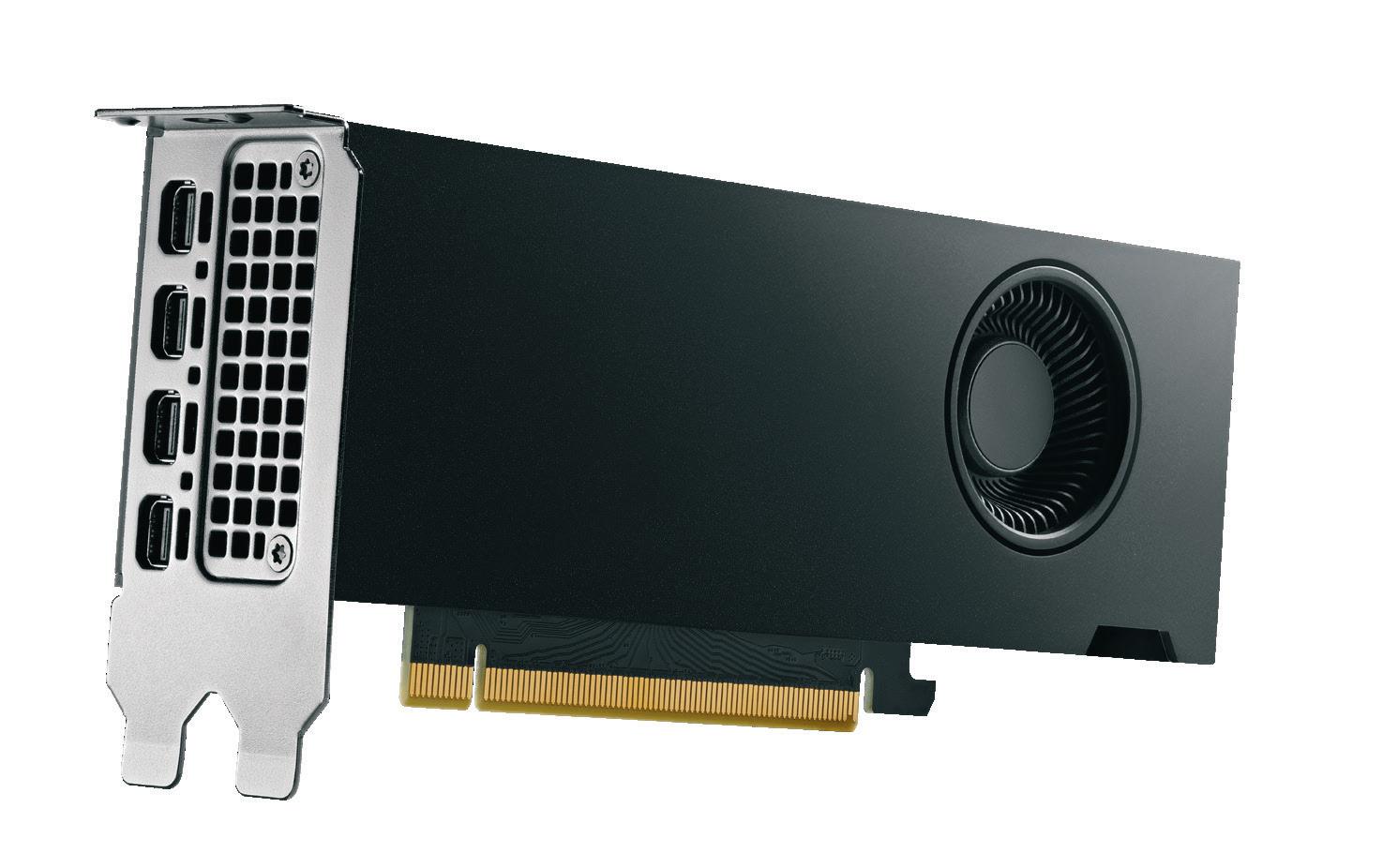
Whatever the reason, the Nvidia RTX 4000 SFF Ada will bring a substantial price increase to SFFs and ultra-compact s, which have traditionally been entry-level workstations. So, what exactly do you get for your money?
On test
For testing, we compared the Nvidia RTX 4000 SFF Ada generation (20 GB) with the Nvidia RTX 6000 Ada (48 GB) and two Ampere generation GPUs — the low-profile, dual slot Nvidia RTX A2000 (12 GB) and full height, single slot Nvidia RTX A4000 (16 GB).
Here, it’s important to state that our benchmark comparisons aren’t perfect, as not all GPUs were tested in the same machine. For the Nvidia RTX 4000 SFF Ada generation and Nvidia RTX A4000 we used the latest 536.25 driver inside an AMD Ryzen 7950X3D-based workstation from Armari. For the other two GPUs
data was taken from previous articles. The Nvidia RTX A2000 with 527.27 driver was tested inside an overclocked Intel Core i9-13900K-based BOXX Apexx S4 workstation. The Nvidia RTX 6000 Ada with 528.24 driver was tested inside an AMD Threadripper Pro 5995WX-based workstation.
We would expect Nvidia RTX A2000 benchmark scores to be elevated a little
Now we’ve got the disclaimers out of the way, let’s dive into the results.
For CAD, the RTX 4000 Ada more than delivered. In the SPECapc for Solidworks 2022 benchmark, it maintained high performance at all resolutions, while the Nvidia RTX A2000 dropped off a little at 4K. Of course, benchmark figures only tell one part of the story, and the Nvidia RTX A2000 should still give you everything you need and more in most 3D CAD workflows.
The RTX 4000 SFF Ada brings real benefits to real-time viz. Whereas the RTX A2000 falters a little in some 4K workflows, the RTX 4000 SFF Ada just keeps going. It’s only when anti-aliasing is set to ultra-high in VRED Professional 2023, or real time ray tracing is enabled in Unreal Engine 4.26, that it starts to struggle, staying well below the desirable 20+ Frames Per Second
- DXR)
Audi car configurator model (ray tracing enabled)
workflows and CAD is typically very CPU limited with 3D graphics. However, in graphics intensive real-time viz tools processors shouldn’t make much difference and, in GPU rendering, virtually none at all.
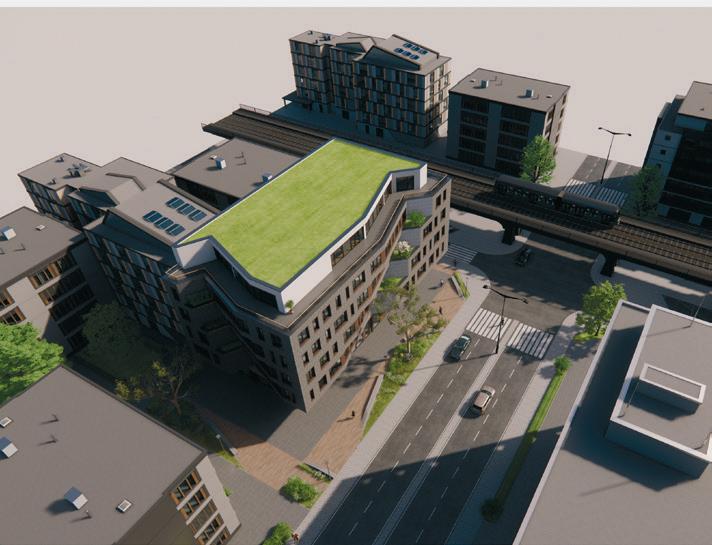
For ray trace rendering, it’s a significant step up from the RTX A2000. Compared to the RTX A4000, it was 1.26 times faster in KeyShot, 1.1 times faster in V-Ray, but was a touch slower in Solidworks Visualize 2022.
In summary, you can expect around twice the performance of an Nvidia RTX
41 www.AECmag.com July / August 2023
Enscape 3.1 (Vulkan) Enscape 3.1 sample project 0 30 60 90 120 150 Nvidia RTX A2000 1 Nvidia RTX A4000 2 Nvidia RTX 4000 SFF Ada Generation 2 Nvidia RTX 6000 Ada Generation 3 FHD 4K FHD 4K FHD 4K Data unavailable 4K Frames Per Second (FPS) (bigger is better) 1.23 527.27 driver / Core i9-13900K 2 536.25 driver / Ryzen 7950X3D 3 528.24 driver / Threadripper Pro 5995WX 74.20 27.00 128.27 45.10 129.53 40.50 124.95 Unreal Engine 4.26 (DirectX 12 - rasterisation) Audi car configurator model (ray tracing disabled) 0 20 40 60 80 100 Nvidia RTX A2000 1 Nvidia RTX A4000 2 Nvidia RTX 4000 SFF Ada Generation 2 Nvidia RTX 6000 Ada Generation 3 FHD 4K FHD 4K FHD 4K Data unavailable 4K Frames Per Second (FPS) (bigger is better) 1.23 527.27 driver / Core i9-13900K 2 536.25 driver / Ryzen 7950X3D 3 528.24 driver / Threadripper Pro 5995WX 47.29 13.14 83.04 25.06 77.09 21.10 61.86 Unreal Engine 4.26 (DirectX 12
0 10 20 30 40 50 Nvidia RTX A2000 1 Nvidia RTX A4000 2 Nvidia RTX 4000 SFF Ada Generation 2 Nvidia RTX 6000 Ada Generation 3 FHD 4K FHD 4K FHD 4K Data unavailable 4K Frames Per Second (FPS) (bigger is better) 1.23 527.27 driver / Core i9-13900K 2 536.25 driver / Ryzen 7950X3D 3 528.24 driver / Threadripper Pro 5995WX 26.56 6.99 48.76 13.49 49.70 12.97 37.16 Autodesk VRED Professional 2023 (OpenGL) Automotive model (No Anti Aliasing) 0 50 100 150 200 Nvidia RTX A2000 1 Nvidia RTX A4000 2 Nvidia RTX 4000 SFF Ada Generation 2 Nvidia RTX 6000 Ada Generation 3 FHD 4K FHD 4K FHD 4K Data unavailable 4K Frames Per Second (FPS) (bigger is better) 1.23 1 527.27 driver / Core i9-13900K 2 536.25 driver / Ryzen 7950X3D 3 528.24 driver / Threadripper Pro 5995WX 71.48 25.55 125.05 50.18 134.20 49.84 177.12 Autodesk VRED Professional 2023 (OpenGL) Automotive model (Anti Aliasing - Ultra-high) 0 5 10 15 20 25 30 35 Nvidia RTX A2000 1 Nvidia RTX A4000 2 Nvidia RTX 4000 SFF Ada Generation 2 Nvidia RTX 6000 Ada Generation 3 FHD 4K FHD 4K FHD 4K Data unavailable 4K Frames Per Second (FPS) (bigger is better) 1.23 1 527.27 driver / Core i9-13900K 2 536.25 driver / Ryzen 7950X3D 3 528.24 driver / Threadripper Pro 5995WX 18.18 6.35 35.35 12.45 38.20 12.40 38.80
A2000 and similar performance to a full height, single slot Nvidia RTX A4000, although the RTX 4000 SFF Ada uses half the power (70W vs 140W).
The verdict
Typically, when Nvidia launches a new GPU architecture it starts at the high-end with a 6000 Series model, then works its way down the stack, adding a dual slot 5000 and single-slot 4000. With Ada Lovelace, it has taken a different approach and prioritised the low-profile form factor, so it has a premium offering in both full-size tower and compact workstation market segments. And considering how well small workstations continue to sell, this is hardly surprising.
The Nvidia RTX 4000 SFF Ada Generation is a very impressive GPU. It packs an incredible amount of processing power into a small 70W package, delivering excellent performance for many different AEC workflows, even at 4K resolution where it overcomes some of the limitations of the Nvidia RTX A2000. In some ways it marks a true coming of age for the compact workstation.
But, at £1,249 it certainly isn’t cheap. It represents a big step up in price from the Nvidia RTX A2000 and will significantly increase the cost of a top-end compact workstation. It feels like Nvidia is placing a premium on the space saving design.
To provide some context, and putting form factors to one side, the RTX 4000 SFF Ada offers similar performance to the older RTX A4000, which currently sells for under £900. Indeed, for those who use full-size towers, the RTX A4000 looks better value for money in many workflows – something you wouldn’t expect from an older technology. However, you do get slightly less memory and the RTX A4000 doesn’t support the latest Nvidia technologies including Deep
The Nvidia Ada Lovelace architecture
The Nvidia Ada Lovelace GPU architecture, named after the English Mathematician credited with being the first computer programmer, launched last year.
The Nvidia RTX 6000 Ada Generation was the first workstation GPU, which has how been joined by the Nvidia RTX 4000 SFF Ada Generation.
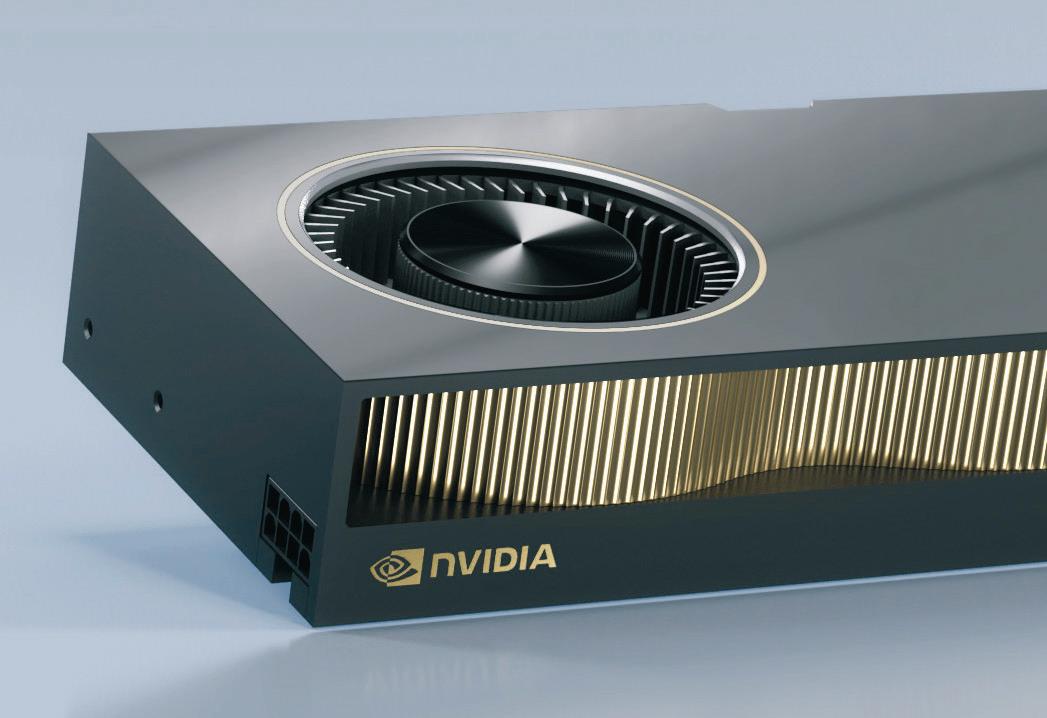
All Ada generation GPUs can call on three different types of processing cores, as and when required, and depending on software compatibility.
There are CUDA cores for general purpose graphics, RT Cores for ray tracing, and Tensor Cores for AI operations.
Tensor cores can be applied in
many different ways. In viz they are primarily used to decrease render times or boost real-time performance. This can done through ‘denoising’, the removal of grainy spots and discoloration from renders, ‘upscaling’, a process that turns lower resolution frames into higher resolution frames (DLSS 2), or for creating brand-new frames without having to process the graphics pipeline (DLSS 3).
DLSS 3 is unique to the Ada Lovelace architecture and so far we’ve only seen it implemented in Nvidia Omniverse, but we expect others to follow. Enscape and Autodesk VRED, for example, both support DLSS 2.
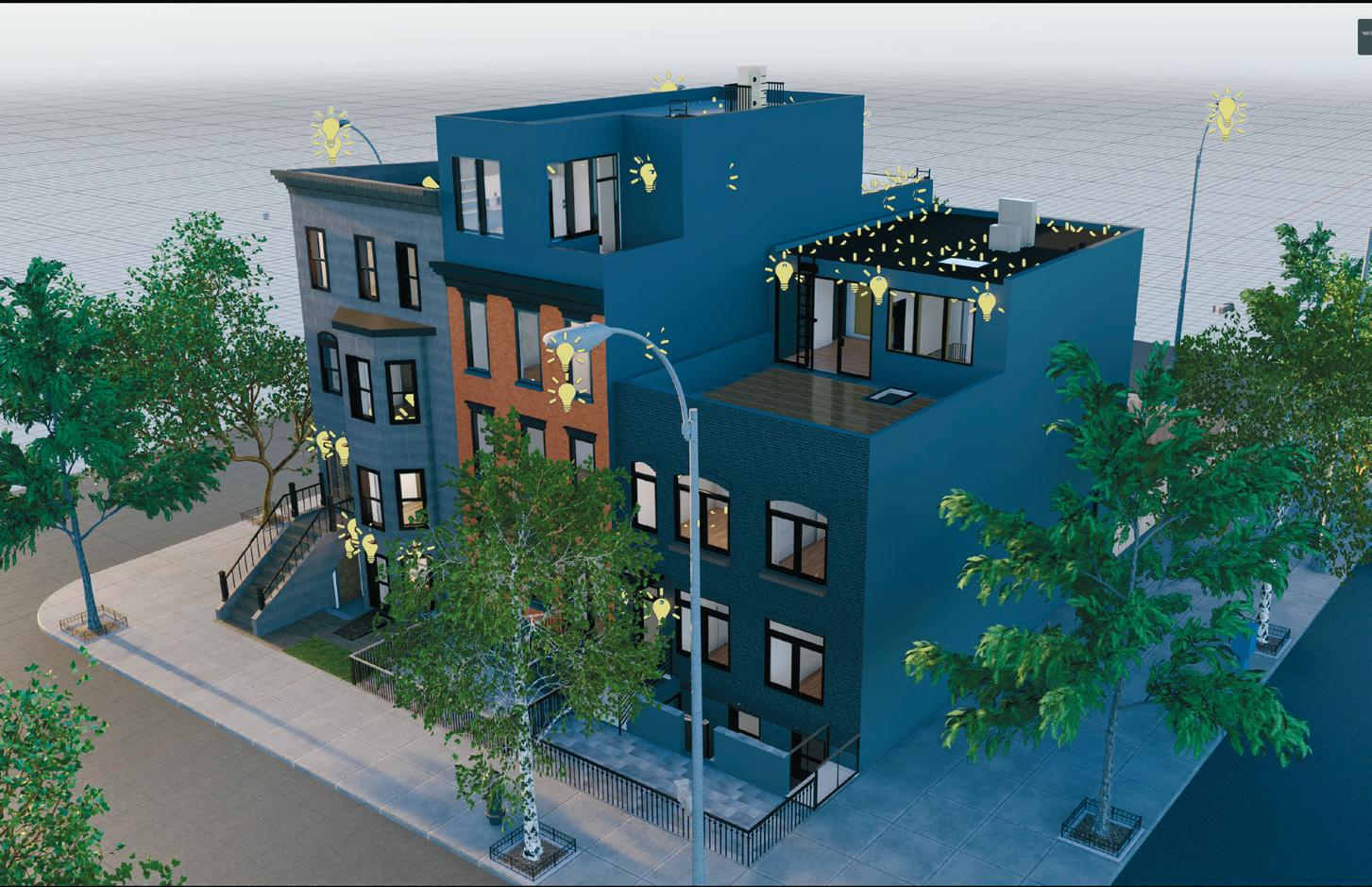
Learning Super Sampling 3 (DLSS) and Shader Execution Reordering (SER).
Of course, it’s still early days for the Nvidia RTX 4000 SFF Ada and the Ada Lovelace architecture in general, and prices may well come down.
It will be interesting to see the specs and cost of the forthcoming full height, single slot 140W Nvidia RTX 4000 Ada. It should tell us more about how Nvidia is addressing the burgeoning compact desktop workstation market.
42 www.AECmag.com July / August 2023
Review
Nvidia Omniverse
Nvidia RTX 6000 Ada Generation
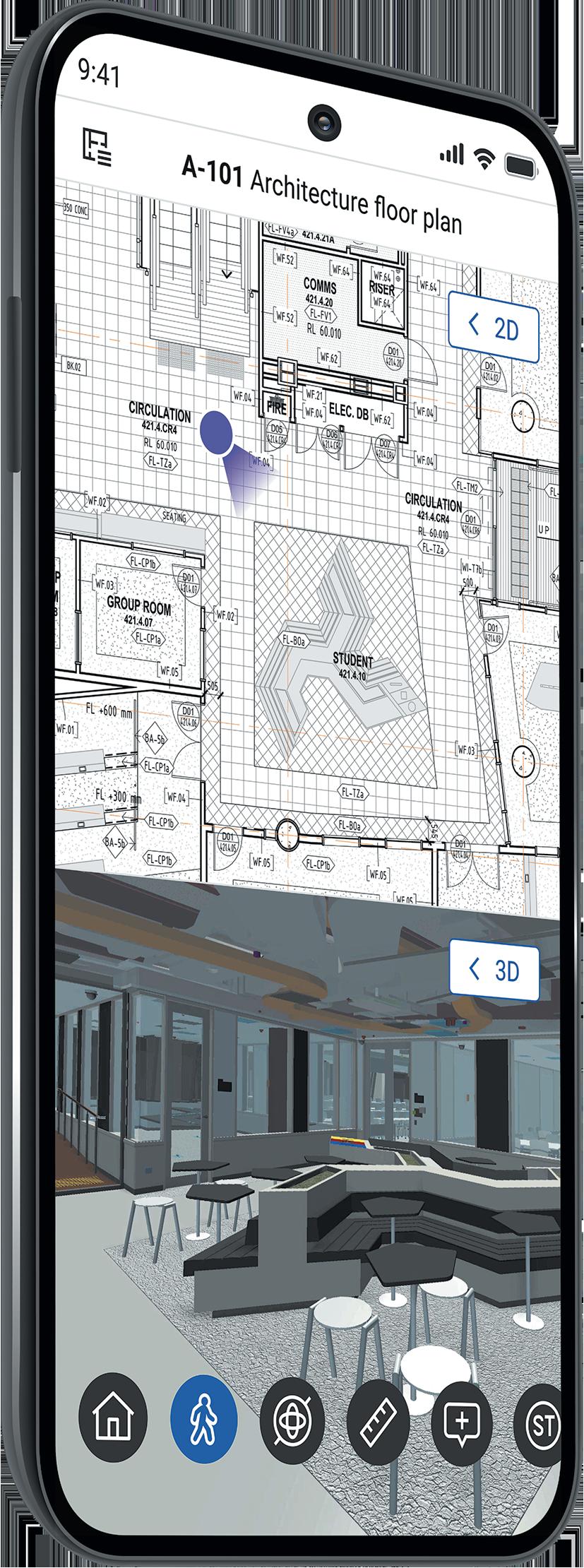
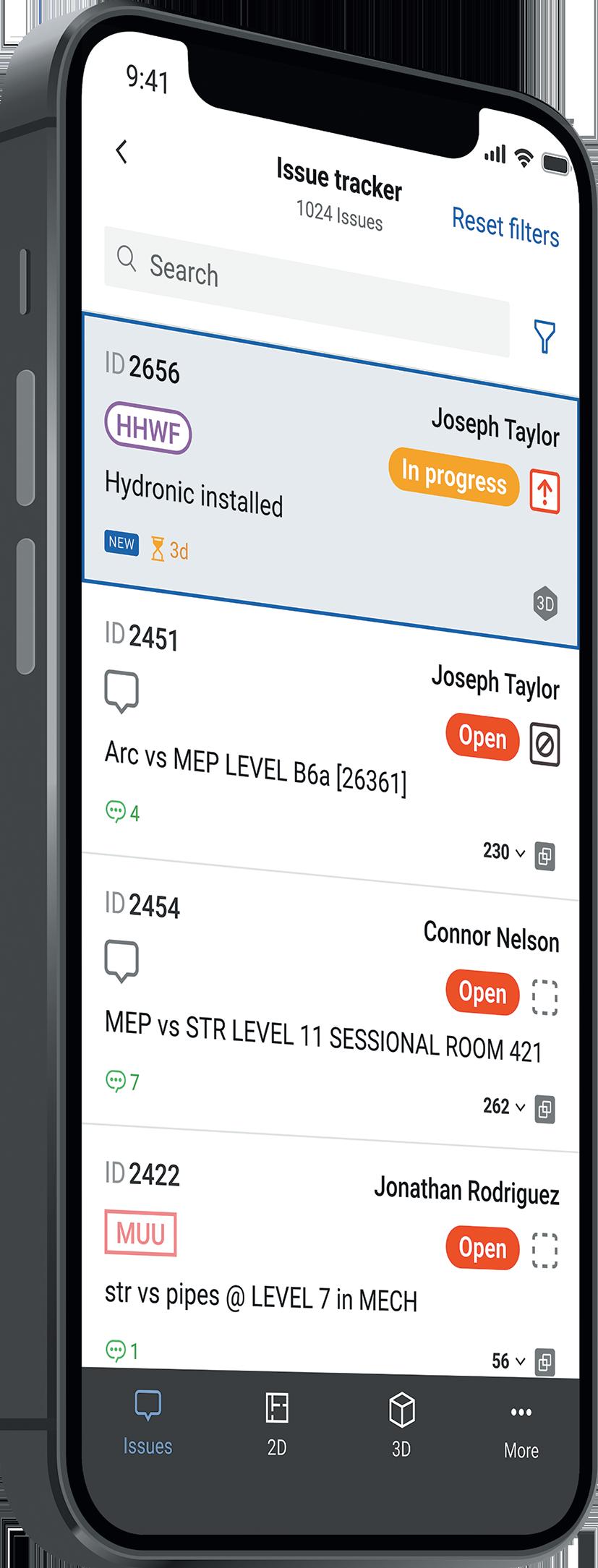
AMD’s new high-end workstation GPUs might lack the horsepower to truly rival the Nvidia RTX 6000 Ada, but they certainly compete on price/ performance, writes Greg
Corke
Radeon Pro W7800 - £2,149 + VAT
Radeon Pro W7900 - £3,450 + VAT
amd.com/radeonpro
When Nvidia launched the RTX 6000 Ada Generation in late 2022, it massively raised the bar in professional graphics. The dual-slot 48 GB workstation graphics card absolutely smashed our benchmark records for real-time viz and ray trace rendering, but there was a serious catch. Nvidia charges a big premium for this level of performance and £6,666 (Ex VAT) will make a serious dent in any IT budget.
So, what are the alternatives? In recent
years, AMD has found it hard to compete with Nvidia on performance alone, but it certainly can do on price.
At £3,450, the company’s new top-end workstation GPU, the AMD Radeon Pro W7900 (48 GB), is nearly half the price of the RTX 6000 Ada. And for those with even tighter purse strings, there’s the £2,150 AMD Radeon Pro W7800 (32 GB).
But what are these GPUs, what do they offer AEC professionals, and how do they compare to Nvidia?
The new cards
The AMD Radeon Pro W7900 (48 GB) and Radeon Pro W7800 (32 GB) are the first workstation GPUs to be based on AMD’s RDNA 3 architecture. They are set to replace the RDNA 2-based Radeon Pro W6800 (32 GB), which dates back to 2021.
Both GPUs comprise multiple unified RDNA 3 compute units, each with 64 dual issue stream processors, two AI accelerators and one second generation ray tracing (RT) accelerator.
According to AMD, RDNA 3 offers up to 50% more raytracing performance per compute unit than AMD’s first generation.
The new GPUs also support DisplayPort 2.1, the latest version of the digital display standard which offers three times the data rate of DisplayPort 1.4. According to
AMD, this means the new GPUs are future proofed for next gen displays in terms of refresh rate, pixel resolution and colour bit-depth. AMD is keen to point out that the Nvidia RTX 6000 Ada Generation is on DisplayPort 1.4.
AMD has also changed the number of ports. For years its high-end pro GPUs featured six Mini DisplayPort connectors. Now, the AMD Radeon Pro W7800 and W7900 have four — three DisplayPort 2.1 and one Mini DisplayPort 2.1.
As you would expect, the AMD Radeon Pro W7900 marks a big step up from the Radeon Pro W6800 in terms of performance and memory. It also draws more power at peak (295W vs 250W) and needs 2 x 8-pin connectors and a 650W minimum PSU.
The board is also longer (280mm vs 267mm) and is the first workstation GPU to take up three slots on the motherboard instead of two. This is an important consideration for those seeking multiGPU configs, as you won’t get the same density on most motherboards.
The AMD Radeon Pro W7800, as the model number suggests, is arguably more of a natural successor to the Radeon Pro W6800. It has a dual slot design, 260W Thermal Design Power (TDP) and the same amount of memory.
44 www.AECmag.com July / August 2023
Review SPECapc for Solidworks 2022 benchmark GPU shaded with edges 0.0 0.5 1.0 1.5 2.0 2.5 3.0 3.5 AMD Radeon Pro W6800 1 AMD Radeon Pro W7800 2 AMD Radeon Pro W7900 2 Nvidia RTX A4000 2 Nvidia RTX A6000 3 Nvidia RTX 6000 Ada 3 2.91 2.80 3.18 2.36 Data unavailable 2.59 Benchmark score (bigger is better) 1.23 Q1.1.23 driver 2 Q2.23 driver 536.25 driver / Ryzen 7950X3D 4 528.24 driver / Threadripper Pro 5995WX SPECapc for Solidworks 2022 benchmark GPU Shaded RealView With Edges 0 1 2 3 4 5 AMD Radeon Pro W6800 1 AMD Radeon Pro W7800 2 AMD Radeon Pro W7900 2 Nvidia RTX A4000 2 Nvidia RTX A6000 3 Nvidia RTX 6000 Ada 3 4.04 3.68 5.33 2.58 Data unavailable 4.50 Benchmark score (bigger is better) 1.23 Q1.1.23 driver 2 Q2.23 driver 3 536.25 driver / Ryzen 7950X3D 4 528.24 driver / Threadripper Pro 5995WX Unreal Engine 4.26 (DirectX 12 - rasterisation) Audi car configurator model (ray tracing disabled) 0 10 20 30 40 50 60 70 AMD Radeon Pro W6800 1 AMD Radeon Pro W7800 2 AMD Radeon Pro W7900 2 Nvidia RTX A4000 2 Nvidia RTX A6000 3 Nvidia RTX 6000 Ada 3 30.15 36.37 49.30 25.06 43.60 61.86 Frames Per Second (FPS) (bigger is better) 1.23 Q1.1.23 driver 2 Q2.23 driver 536.25 driver / Ryzen 7950X3D 4 528.24 driver / Threadripper Pro 5995WX Unreal Engine 4.26 (DirectX 12 - DXR) Audi car configurator model (ray tracing enabled) 0 5 10 15 20 25 30 35 AMD Radeon Pro W6800 1 AMD Radeon Pro W7800 2 AMD Radeon Pro W7900 2 Nvidia RTX A4000 2 Nvidia RTX A6000 3 Nvidia RTX 6000 Ada 3 10.63 14.38 17.90 13.49 24.73 37.16 Frames Per Second (FPS) (bigger is better) 1.23 1 Q1.1.23 driver 2 Q2.23 driver 3 536.25 driver / Ryzen 7950X3D 4 528.24 driver / Threadripper Pro 5995WX Autodesk VRED Professional 2023 (OpenGL) Automotive model (No Anti Aliasing) 0 50 100 150 200 AMD Radeon Pro W6800 1 AMD Radeon Pro W7800 2 AMD Radeon Pro W7900 2 Nvidia RTX A4000 2 Nvidia RTX A6000 3 Nvidia RTX 6000 Ada 3 68.12 79.77 114.50 50.18 93.45 177.12 Frames Per Second (FPS) (bigger is better) 1.23 Q1.1.23 driver 2 Q2.23 driver 3 536.25 driver / Ryzen 7950X3D 4 528.24 driver / Threadripper Pro 5995WX Autodesk VRED Professional 2023 (OpenGL) Automotive model (Anti Aliasing - Ultra-high) 0 5 10 15 20 25 30 35 40 AMD Radeon Pro W6800 1 AMD Radeon Pro W7800 2 AMD Radeon Pro W7900 2 Nvidia RTX A4000 2 Nvidia RTX A6000 3 Nvidia RTX 6000 Ada 3 17.22 21.40 30.50 12.45 23.75 38.80 Frames Per Second (FPS) (bigger is better) 1.23 Q1.1.23 driver 2 Q2.23 driver 3 536.25 driver / Ryzen 7950X3D 4 528.24 driver / Threadripper Pro 5995WX
AMD Radeon Pro W7900 and Pro W7800
Big memory, big demands 32 GB and 48 GB might seem like a lot of memory for a GPU, but those that really need it, know they really need it.
It means the Radeon Pro W7800 and W7900 can handle very demanding visualisation datasets, from huge highpoly city-scale models to those with hyper realistic assets, including 8K textures and detailed vegetation. And, importantly, viz professionals don’t have to make compromises on quality or waste time optimising their datasets.
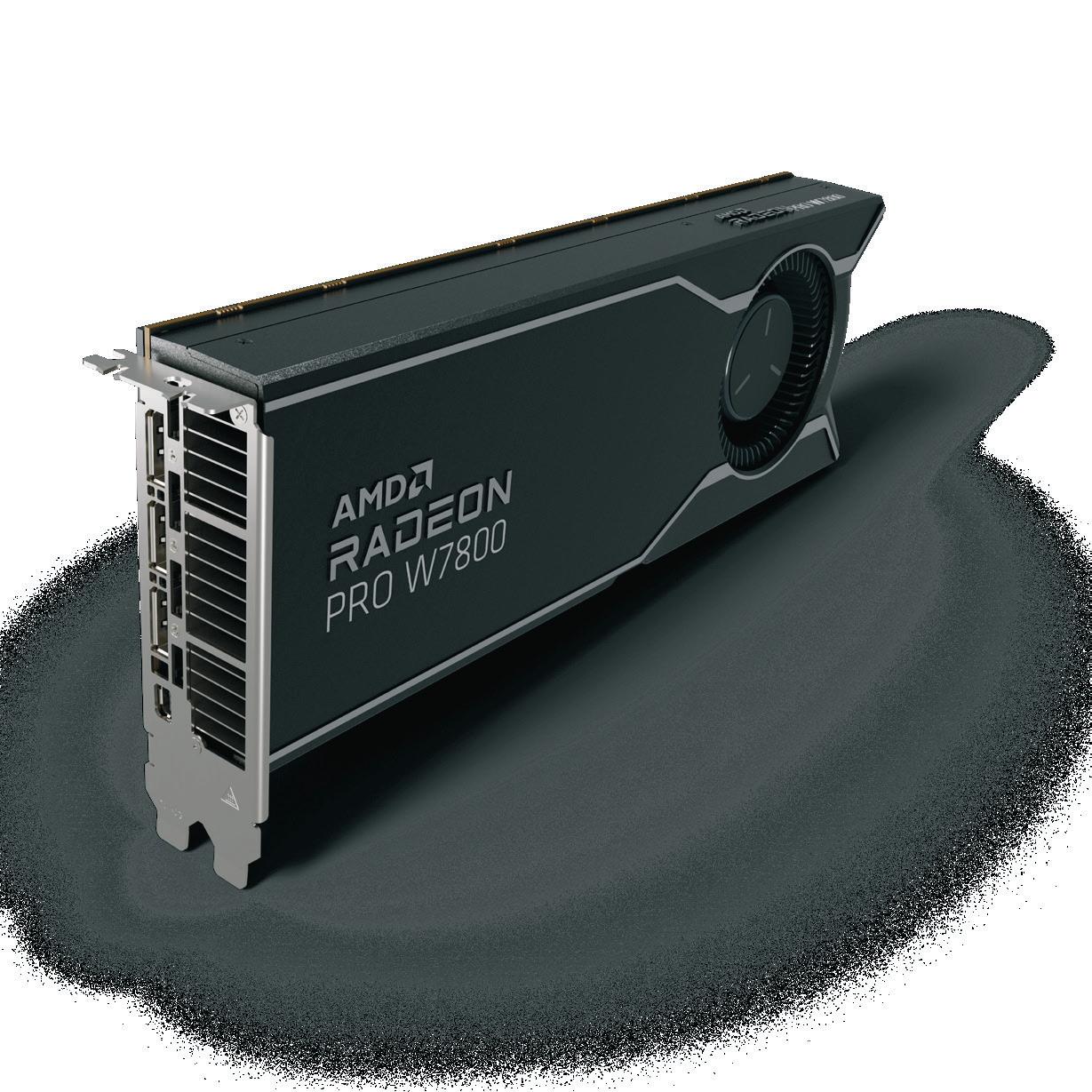

Also, very few visualisation professionals use single applications in isolation. They need to be able to switch seamlessly between tools or use the GPU for background rendering or video encoding, while modelling in the foreground. And in such multi-tasking workflows, memory soon gets used up.
Finally, it’s important to note that what is high-end today is the mainstream of
tomorrow and the demands of viz tools will continue to grow.
tools, such as Chaos V-Ray and Luxion KeyShot, that only render on Nvidia GPU hardware. But this is starting to change on two fronts.
First, there has been a rise in the use of open APIs. AMD GPUs have always supported OpenGL and DirectX, the 3D graphics APIs used by most CAD and
However, now with Vulkan and (in particular)
DirectX Raytracing (DXR), AMD GPUs are compatible with new generation viz tools that bring ray tracing into the viewport. This includes Unreal Engine, Twinmotion,

CUDA, Iray, and OptiX which are built into many pro-viz applications.
As a result, there are some pro-viz
Second, AMD has developed an open-source toolset called HIP, short for Heterogeneous-Compute Interface for Portability. HIP is designed to help software developers better integrate AMD GPUs into their software (and because it is open, Intel GPUs as well). In visualisation, it’s especially relevant to rendering engines.
Developers can either use HIP to
45 www.AECmag.com July / August 2023 Lumion 2023 ‘Streetscape’ render set (4K resolution) 0 100 200 300 400 500 AMD Radeon Pro W6800 1 AMD Radeon Pro W7800 2 AMD Radeon Pro W7900 2 Nvidia RTX A4000 2 Nvidia RTX A6000 3 Nvidia RTX 6000 Ada 3 Crashed on opening file 280 223 444 Data unavailable 151 Render time (secs) (smaller is better) 1.23 Q1.1.23 driver 2 Q2.23 driver 3 536.25 driver / Ryzen 7950X3D 4 528.24 driver / Threadripper Pro 5995WX Chaos Vantage 2.0 ‘SketchUp Onboarding Sample’ High quality render (4K) 0 20 40 60 80 100 120 AMD Radeon Pro W6800 1 AMD Radeon Pro W7800 2 AMD Radeon Pro W7900 2 Nvidia RTX A4000 2 Nvidia RTX A6000 3 Nvidia RTX 6000 Ada 3 107 73 55 91 Data unavailable Data unavailable Render time (secs) (smaller is better) 1.23 Q1.1.23 driver 2 Q2.23 driver 3 536.25 driver / Ryzen 7950X3D 4 528.24 driver / Threadripper Pro 5995WX Lumion 2023
automatically translate existing CUDA code bases into HIP C++ or write ‘portable C++ code’ from scratch.
We are starting to see the fruits of this development. Cycles, the physicallybased path tracer for open source modelling tool blender, recently added support for HIP RT, a ray tracing library that can take advantage of the dedicated ray accelerators in Radeon Pro and Radeon RX GPUs. Maxon Redshift, another GPU renderer, also now supports HIP, but not yet HIP RT.
Considering the growing impact of DXR and HIP, we expect to see more and more viz tools that work with AMD GPUs.
That’s not to say there won’t be bumps in the road. AMD still has its work cut out to ensure its Radeon Pro GPUs are fully compatible with and optimised for all different pro software tools. This is down to AMD’s pro driver team, who work closely with software developers. And it’s an ongoing process.
During our testing we identified three pro applications which currently do not work with the Radeon Pro W7800 and W7900. These include product design rendering software, Solidworks Visualize (Radeon ProRender), the v0.9 Ray Tracing Effect in real-time architectural rendering software Lumion 2023, and older versions of real-time arch viz software Enscape.
For users of these tools this will be disappointing, especially for a pro GPU. However, AMD is aware of these issues and is currently working on fixes. We already have the W7800 and W7900 running with the soon to be released Solidworks Visualize 2024. However, because the software is still in beta, we are not allowed to use it for benchmarking.
On test
There was a slightly uneven playing field for our benchmark testing. All AMD GPUs and the Nvidia RTX A4000 (16 GB) were tested on an AMD Ryzen 7950X3D workstation. However, the Nvidia RTX 6000 Ada Generation (48 GB) and its predecessor, the Nvidia RTX A6000 (48 GB) were tested on a different machine with an AMD Threadripper Pro 5995WX processor.
In graphics intensive real-time viz tools, the CPU shouldn’t make that big a difference. However, in the SPECapc for Solidworks benchmark, we would expect scores on the AMD Ryzen 7950X3D to be elevated a fair bit, as the processor is faster than the AMD Threadripper Pro 5995WX in single threaded and lightly threaded workflows. In saying that, the scores aren’t that relevant as all of the GPUs we tested are more than powerful enough for 3D CAD.
With aforementioned incompatibilities with Solidworks Visualize 2023 and Enscape we were unable to test the new GPUs with our full suite of application benchmarks. However, the real-world tools we did use yielded some interesting results.
First, the AMD Radeon Pro W7900 delivers a giant leap in performance over 2021’s AMD Radeon Pro W6800. In Unreal Engine we saw a 63% increase in frame rates, which rose to 68% with ray tracing enabled. In Autodesk VRED Professional the improvement was even bigger, between 68% and 77%. In Chaos
Which viz tools are compatible?
Render, Maxon Redshift, Twinmotion, Chaos Vantage 2.0, Blender 3.6 Cycles, plus any other application that supports OpenGL, DirectX, DirectX Raytracing (DXR), Vulkan, HIP or HIP RT (see software section for more info).
The new GPUs also work with AMD’s own rendering engine, Radeon ProRender, which is available for Acca Edificius, Autodesk Inventor, Autodesk Maya, Autodesk 3ds max, Rhino, and Blender.
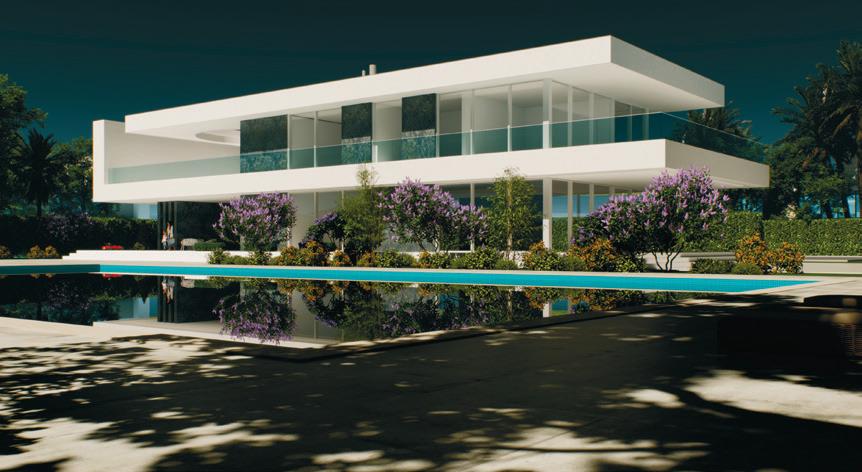
Vantage, render times were almost cut in half. These are huge generation-ongeneration gains.
The Radeon Pro W7800 was a fair bit slower, but considering the W7900 has 37% more compute units, this is hardly surprising. There’s still a significant benefit compared to the W6800. Expect to get between a 17% and 35% performance boost in real time 3D, with the biggest increase coming from real time ray tracing.
Despite the big improvements within the AMD camp, the Radeon Pro W7900 can’t keep pace with the Nvidia RTX 6000 Ada Generation. It wasn’t that far off in mainstream 3D workflows — the RTX 6000 Ada was only 27% faster in VRED Professional and 25% faster in Unreal Engine. However, when ray tracing was enabled in Unreal Engine, the RTX 6000 Ada pulled away dramatically, delivering more than double the frame rates of the W7900. AMD’s ray accelerators are one generation behind Nvidia’s and it’s clear it has some catching up to do.
Conclusion
AMD continues to face very tough competition in workstation graphics. Nvidia not only has both hands on the performance crown, but in some workflows, it has shut out AMD completely. Radeon Pro is simply not directly compatible with applications that rely on proprietary Nvidia software.
While DXR and HIP are starting to level the playing field in software, Nvidia still has a significant performance lead at the high-end. This is why it can charge such big money for the Nvidia RTX 6000 Ada.
In some workflows, however that performance lead is not that big, and AMD can certainly lean on its value proposition here. The message that the Radeon Pro W7900 can deliver 75% of the performance of a Nvidia RTX 6000 Ada Generation for half the price will certainly resonate with some.
Of course, the battle won’t only be fought at the high-end. Nvidia has yet to announce its RTX 4000 and RTX 5000 Ada Generation GPUs, and we expect AMD will flesh out its Radeon Pro RDNA 3 family soon. With many AEC firms starting to feel the pinch, price / performance at all levels of the pro GPU market will be very important.
46 www.AECmag.com July / August 2023
Review
‘‘ 32 GB and 48 GB might seem like a lot of memory for a GPU, but those that really need it, know they really need it ’’
The latest AMD Radeon Pro GPUs are compatible with a growing number of visualisation tools.
These include Unreal Engine, Unity, Lumion, Enscape, Solidworks Visualize 2024, D5
Chaos Vantage
Is
Cloud Based Workstations?
IMSCAD services are an independent consultancy, here to support you through the process of understanding which method or platform will fit your business and what you want to achieve. Centralising data and desktop processing brings far reaching benefits to your users mobility and your IT departments resourcing.

On Premise VDI
The most costeffective solution
VDI, utilising Citrix or VMware, you buy the servers and host them, we deploy it and support you.
HP Anyware Private Cloud
IMSCAD provision small form factor workstations in the data centre, giving your user a remote 1 to 1 desktop experience. Fully Managed Service.
Public Cloud Deployments
Provisioning of AVD or Desktop Disaster Recovery
Full service wrap running all users in the public cloud.
TM
Try a VDI solution for free info@imscadservices.com www.imscadservices.com Benefit from IMSCAD’s experience of deploying 100’s of successful virtual desktop solutions globally. Come and talk to the experts…
now the time to invest in VDI or
AMD Ryzen 7000 X3D Series for CAD, viz and simulation
AMD’s new Ryzen processors with 3D V-Cache deliver a real performance boost in 3D games, but what do they offer AEC professionals? Greg Corke explores
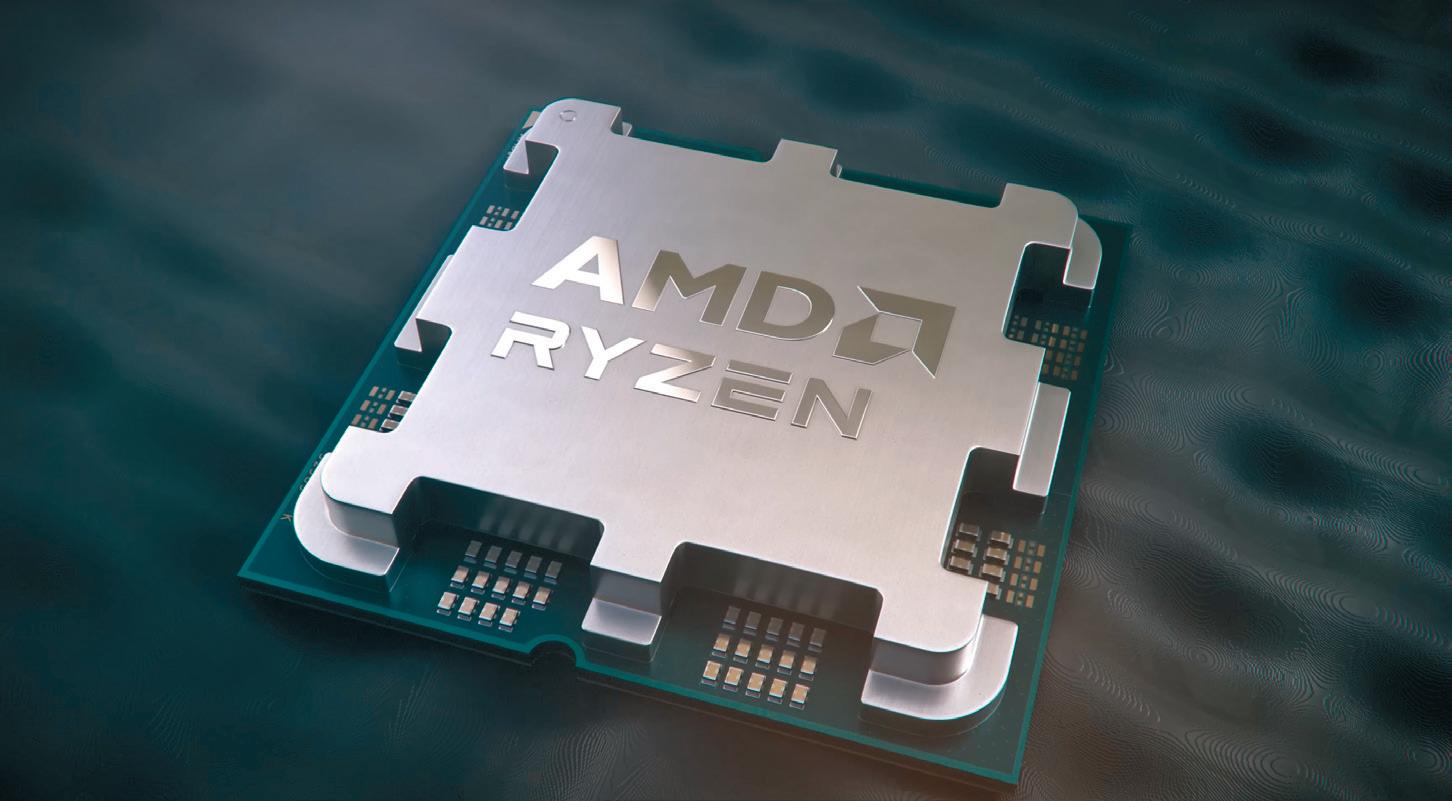
important to understand, as it can impact performance if software doesn’t run on the best cores for the job (more on this later).
The Ryzen 7 7800X3D is different in that it only has a single 8-core 3D V-Cache CCD chiplet, so all cores run at a lower clock speed.
3D V-Cache on test
To explore which pro design workflows might benefit from 3D V-Cache, specialist UK manufacturer Armari lent us one of its high-performance Magnetar workstations, equipped with a single AMD Ryzen 9 7950X3D processor, 64 GB of DDR5 memory and an AMD Radeon Pro W7900 high-end workstation GPU. The full spec and mini review can be seen over the page.
AMD’s 3D V-Cache technology, built into select AMD Ryzen 7000 Series desktop processors, has been a huge success in the gaming sector over the past couple of years.
3D V-Cache allows for more L3 cache to be placed on the CPU by stacking it vertically instead of horizontally. The more cache a CPU has, the greater the chance of fetching the data it needs from cache instead of from slower system memory (RAM).
In some CPU-limited games, 3D V-Cache can lead to significantly better 3D performance. AMD has so much confidence in the technology it has even branded its 3D V-Cache Ryzen models ‘gaming processors’.
But are there any benefits for architects, engineers, or product designers, beyond those looking to get the edge in those after work sessions of Red Dead Redemption 2?
Before we get into answering that question, let’s have a look AMD’s 3D V-Cache Ryzen offerings.
AMD Ryzen 7000 X3D Series
AMD offers two different types of processors in its AMD Ryzen 7000 Series — those with 3D V-Cache (denoted by the X3D suffix) and those without (denoted by an X suffix or no suffix). The X3D models are slightly more expensive, but not by much.
There are three chips with 3D V-Cache — the 16-core Ryzen 9 7950X3D, 12-core Ryzen 9 7900X3D and 8-core Ryzen 7 7800X3D. All have 64 MB more L3 cache than their standard desktop counterparts but run at lower frequencies because they are harder to cool.
The 3D V-Cache processors differ largely by their number of cores, but this only tells part of the story. The Ryzen 9 7950X3D and Ryzen 9 7900X3D are made up of two different core compute die (CCD) ‘chiplets’ — one with 3D V-Cache and one without. For the Ryzen 9 7950X3D and Ryzen 9 7900X3D both chiplets have 8-cores and 6-cores respectively.
The 3D V-Cache chiplets run at a lower clock speed than the non-3D V-Cache chiplets. This architectural framework is
For testing we disabled each CCD in turn, using the AMD Ryzen Master Software. This method isn’t perfect. For a real-world comparison we should arguably use the same machine, first fitted with an AMD Ryzen 9 7950X3D processor, and then with its non-3D V-Cache counterpart, the AMD Ryzen 9 7950X. However, with our approach, isolating each CCD in turn brings real clarity to the potential benefits of AMD’s 3D V-Cache technology.
In order for 3D V-Cache to deliver a performance boost, any benefit of having fast access to a larger pool of frequently used data must outweigh the drop in frequency. And this drop can be quite big.
In Cinebench, for example, clock speeds in the single-threaded test were around 0.3 GHz to 0.4 GHz lower (reaching 5.35 GHz to 5.43 GHz on the standard CCD and 5.05 GHz on the 3D V-Cache CCD). There was a similar difference in the multi-threaded test (5.15 GHz on the standard CCD and 4.83 GHz on the 3D V-Cache CCD).
It was no surprise that the 3D V-Cache
48 www.AECmag.com July / August 2023
CCD was significantly slower in the SPECapc for Solidworks 2022 benchmark. Like most CAD software, Solidworks is largely single threaded, very dependent on processor frequency, and is not that sensitive to the speed at which data can be fed into the CPU. The same can be said for the majority of tests within the Invmark for Inventor benchmark, although the 3D V-Cache CCD did show a small lead in Dynamic Simulation.
The 3D V-Cache CCD showed no benefit in the ray trace rendering benchmarks, V-Ray and Cinebench, nor in the point cloud processing software, Leica Cyclone Register 360.
But there were some workflows where the 3D V-Cache CCD showed a significant advantage.
When recompiling shaders in Unreal Engine it finished 14% faster. It also enjoyed a 16% lead in the Computational Fluid Dynamics (CFD) benchmark, WPCcfd (SPECworkstation 3.1), which simulates combustion and turbulence.
These results weren’t totally unexpected, as in our recent Intel Xeon ‘Sapphire Rapids’ vs AMD Ryzen Threadripper Pro article ( www.tinyurl.com/SR-vs-TR ), both tests were shown to be sensitive to memory bandwidth.
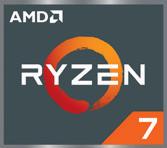
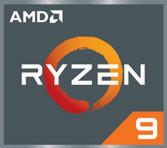




There was no benefit in Rodinia, a CFD
benchmark that represents compressible flow. However, as our ‘Sapphire Rapids’ memory bandwidth tests showed, it is not as memory intensive as other CFD benchmarks. The same is probably true of the Calculix Finite Element Analysis (FEA) benchmark.
We also tested the impact of 3D V-Cache on 3D graphics performance. In Solidworks 2022, the 3D V-Cache CCD delivered notably lower benchmark scores. This was not particularly surprising, however, as 3D graphics performance
course, other applications / datasets may yield different results.
Tuning the CPU
By default, all professional applications will prioritise the non-3D V-Cache cores. This is good for single threaded or lightly threaded CAD software, as our tests show that frequency is far more important for performance in these types of applications than having more cache.
Also, as the only workflows we found to benefit from 3D V-Cache are highly multithreaded and make use of all of the CPU cores, assigning the right workflows to the right cores is not such a concern.
in most CAD applications is heavily influenced by CPU frequency, and the 3D V-Cache CCD runs about 0.3 GHz slower.
In Enscape and Unreal Engine, graphics intensive applications that are largely bottlenecked by the GPU, the gap was much smaller, with the standard CCD edging out the 3D V-Cache CCD at 4K resolution. Dialling down to FHD, which lightens the load on the GPU and therefore can elevate the role of the CPU, gave the 3D V-Cache CCD in Enscape a slight lead. But we’re talking about very fine margins here. Of
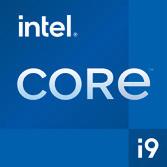
If you do find workflows that benefit from 3D V-Cache and run on fewer cores (and, of course if you are a gamer), then there are ways to manage which applications use the 3D V-Cache cores and which do not.
The easiest way to control this is through the Windows Game Bar using the ‘remember this is a game’ setting. Alternatively, use Process Lasso, a process automation / optimisation tool that allows processes to be permanently or temporarily assigned to specific cores.
Some applications are easier to configure than others, however. For example, when apps spawn separate executables
49 www.AECmag.com July / August 2023
Review ‘‘
’’ AMD Ryzen 7 7800X3D AMD Ryzen 9 7900X3D AMD Ryzen 9 7950X3D AMD Ryzen 7 7700X AMD Ryzen 9 7900X AMD Ryzen 9 7950X Intel Core i9-13900K # of CPU Cores 8 12 16 8 12 16 24 # of CPU Threads 16 24 32 16 24 32 32 Base Frequency 4.2 GHz 4.4 GHz 4.2 GHz 4.5 GHz 4.7 GHz 4.5 GHz 3.00 GHz (P-cores) Max Boost / Turbo 5.0 GHz 5.6 GHz 5.7 GHz 5.4 GHz 5.6 GHz 5.7 GHz 5.80 GHz (P-cores) Max memory size 128 GB 128 GB 128 GB 128 GB 128 GB 128 GB 128 GB Memory type DDR5 - 5,200 MHz DDR5 - 5,200 MHz DDR5 - 5,200 MHz DDR5 - 5,200 MHz DDR5 - 5,200 MHz DDR5 - 5,200 MHz DDR5 - 5,600 MHz Memory channels 2 2 2 2 2 2 2 Cache L1 Cache - 512k L2 Cache - 8 MB L3 Cache - 96 MB L1 Cache - 768k L2 Cache - 12 MB L3 Cache - 128 MB L1 Cache - 1 MB L2 Cache - 16 MB L3 Cache - 128 MB L1 Cache - 512k L2 Cache - 8 MB L3 Cache - 32 MB L1 Cache - 768k L2 Cache - 12 MB L3 Cache - 64 MB L1 Cache - 1 MB L2 Cache - 16 MB L3 Cache - 64 MB L2 Cache - 32 MB Smart Cache (L3) - 36 MB Default TDP 120 W 120 W 120 W 105 W 170 W 170 W 125 W Peak / Max Turbo power 162 W 162 W 162 W 142 W 230 W 230 W 253 W Price (Ex VAT)* £357 £421 £545 £292 £370 £467 £458 *from scan.co.uk 25/6/23
Compared to standard AMD Ryzen 7000 Series processors and (in particular) 13th Gen Intel Core processors, AMD’s 3D V-Cache Ryzen processors are incredibly power efficient
for different compute intensive processes, each executable will need to be identified and then configured independently. In Solidworks, CAD, visualisation and simulation is a case in point.
Power efficiency
Compared to standard AMD Ryzen 7000 Series processors and (in particular) 13th Gen Intel Core processors, AMD’s 3D V-Cache Ryzen processors are incredibly power efficient.
The top-end AMD Ryzen 9 7950X3D has a Thermal Design Power (TDP) of 120W and a peak power of 162W. This is significantly lower than the non-3D V-Cache AMD Ryzen 9 7950X (TDP of 170W and peak power of 230W) and Intel Core i9-13900K (125W TDP and a max turbo power of 253W).
But specs only tell part of the story. In real world multi-threaded tests, our Armari workstation with AMD Ryzen 9 7950X3D draws noticeably less power than the other mainstream processors. This was observed at the plug socket, when measuring power draw of the overall systems — considering CPU, motherboard, memory, storage, and fans.
For example, in Cinebench R23, rendering with 16 cores and 32 threads, the AMD Ryzen 9 7950X3D workstation
draws 251W. This is a full 90W less than an AMD Ryzen 9 7950X-based Scan workstation (341W) and almost half that of an Intel Core i9-13900K Scan workstation (451W). To put this in perspective, comparing Ryzen 9 7950X3D to Ryzen 9 7950X, you use 26% less power for only 6% less performance.
Power consumption in the single threaded Cinebench test is much more equal. The AMD Ryzen 9 7950X-based Scan workstation, Intel Core i9-13900K Scan workstation, and AMD Ryzen 9
The most likely beneficiaries are those that use simulation tools, including CFD and FEA, in workflows where the processor is often left waiting for data. On paper, the AMD Ryzen 7950X3D looks most capable — the other models have fewer cores and the Ryzen 7 7800X3D misses out on single threaded performance by not having a higher GHz standard CCD.
Of course, there are far better processors for hardcore multi-threaded simulation. The AMD Threadripper Pro 5000 Series and Intel Xeon W-2400 and W-3400 Series offer more cores, more memory bandwidth, and more memory capacity. But these processors can be very expensive.
7950X3D Armari workstation drew 127W, 122W, and 129W respectively.
Conclusion
If you simply look at benchmark scores for mainstream CAD and viz workflows, it’s easy to dismiss the AMD Ryzen 7000 X3D Series out of hand.
And while most architects, designers and engineers will not see a performance gain from 3D V-Cache, there are some specific professional workflows where it shows real promise.
Armari Magnetar M16R7-AD1000G3
Armari has a long history of developing specialist workstations, so it’s no surprise to see the UK firm offering the AMD Ryzen 9 7950X3D processor as an alternative to the AMD Ryzen 9 7950X.
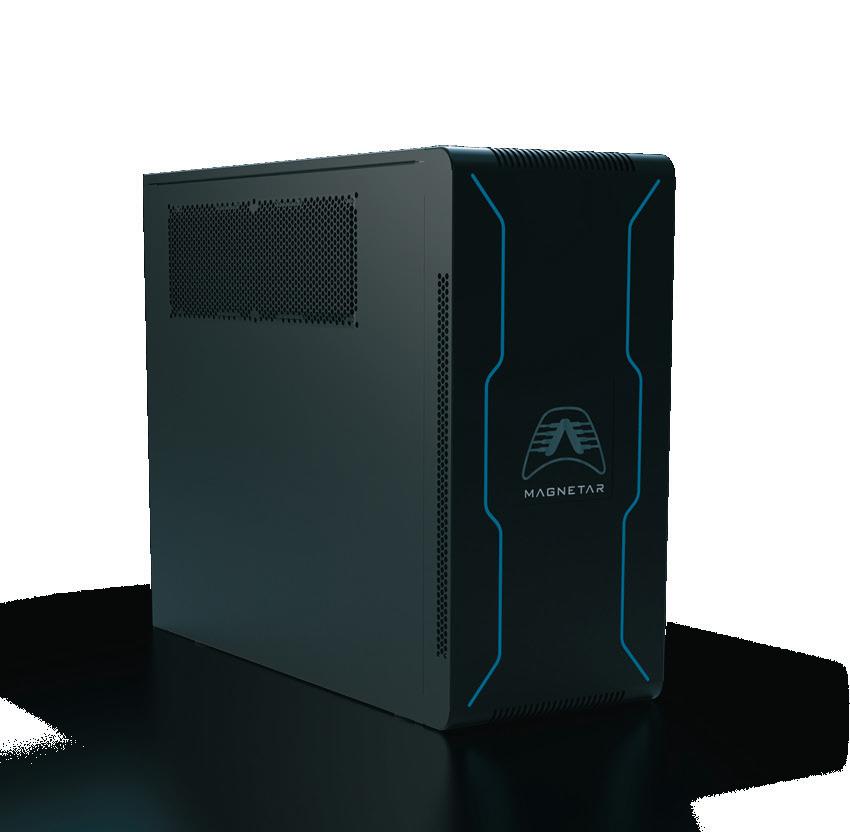
Both processors are available in its Magnetar M16R7-AD1000G3 workstation (as reviewed here),
the new machine you get the same core specifications, but a few chassis tweaks, a new PSU, and better cooling to handle dual monster gaming GPUs.
Our review machine has a serious all-in-one liquid cooling system for the CPU with a colossal side mounted 360mm radiator. One wonders if this is overengineered for the power efficient AMD Ryzen 9 7950X3D, but you can’t argue with the impressive acoustics under heavy loads.
As we’ve found, the AMD Ryzen 9 7950X3D does well in data-intensive workloads so you want to ensure the CPU can be fed as fast as possible from memory and storage as it is from cache. With 64 GB of dual channel 6,000MHz memory pushing 52 GB/ sec in the SiSoft Sandra memory bandwidth benchmark and a 4 TB NVMe RAID 0 array delivering 13,970 MB/sec read and 12,709 MB/ sec write in the CrystalDiskMark
For those on a budget, the Ryzen 7950X3D could offer a cost-effective way to reduce solve times in simulation software compared to standard desktop processors. The word ‘could’ is important here, as all CFD and FEA solvers behave differently. Even distinct datasets within the same application can have specific ways of using workstation resources, so in house testing is essential.
Finally, power efficiency deserves one last mention. The AMD Ryzen 7950X3D uses significantly less power than most modern desktop processors. And 6% less rendering performance for 26% less power will seem like a good trade-off for some.
benchmark it doesn’t disappoint for a system of this type. WiFi 6E is built into the Asus ProArt X670E-Creator WiFi motherboard, and you also get 10 Gb Ethernet for the fastest data transfer rates.
For graphics, there’s a single Radeon Pro W7900, AMD’s brand-new high-end workstation GPU with a whopping 48 GB of memory. As we found in our in-depth review on page 44, it doesn’t hit the heights of the NvidiaRTX 6000 Ada Generation, but then it’s half the price. It’s a great GPU for those working with colossal datasets in specific viz workflows, although arguably the AMD Ryzen 9 7950X would be a better fit here.
If you play to the strengths of the Ryzen 9 7950X3D, and intend to use the machine for engineering simulation then downgrade the GPU, ramp up the RAM to 128 GB and set your CFD solver to work.
Armari Magnetar M16R7-AD1000G3
■ AMD Ryzen 9 7950X3D processor (16 cores, 4.2 GHz base, 5.7 GHz max boost)
■ 64 GB (2 x 32 GB) Corsair Vengence DDR5-6000 C40 memory
■ AMD Radeon Pro W7900 (48 GB) pro GPU
■ Asus ProArt X670ECreator WiFi motherboard
■ 4 TB AMD NVMe RAID 0 array with 2 x 2 TB Solidigm P44 Pro SSDs
■ Microsoft Windows 11 Pro
■ 3 Year RTB workstation warranty
■ £6,195 (Ex VAT)
+ £150 for upgrade to M16R7AW1350G4 workstation base
■ www.armari.co.uk
www.AECmag.com
Review ‘‘
’’
The most likely beneficiaries of the Ryzen 9 7950X3D are those that use simulation tools, including CFD and FEA, in workflows where the processor is often left waiting for data

Join our online community facebook.com/AECmag linkedin.com/company/aec-magazine twitter.com/AECmagazine Subscribe free Technology for BIM and beyond Building Information Modelling (BIM) for Architecture, Engineering and Construction register. aecmag.com
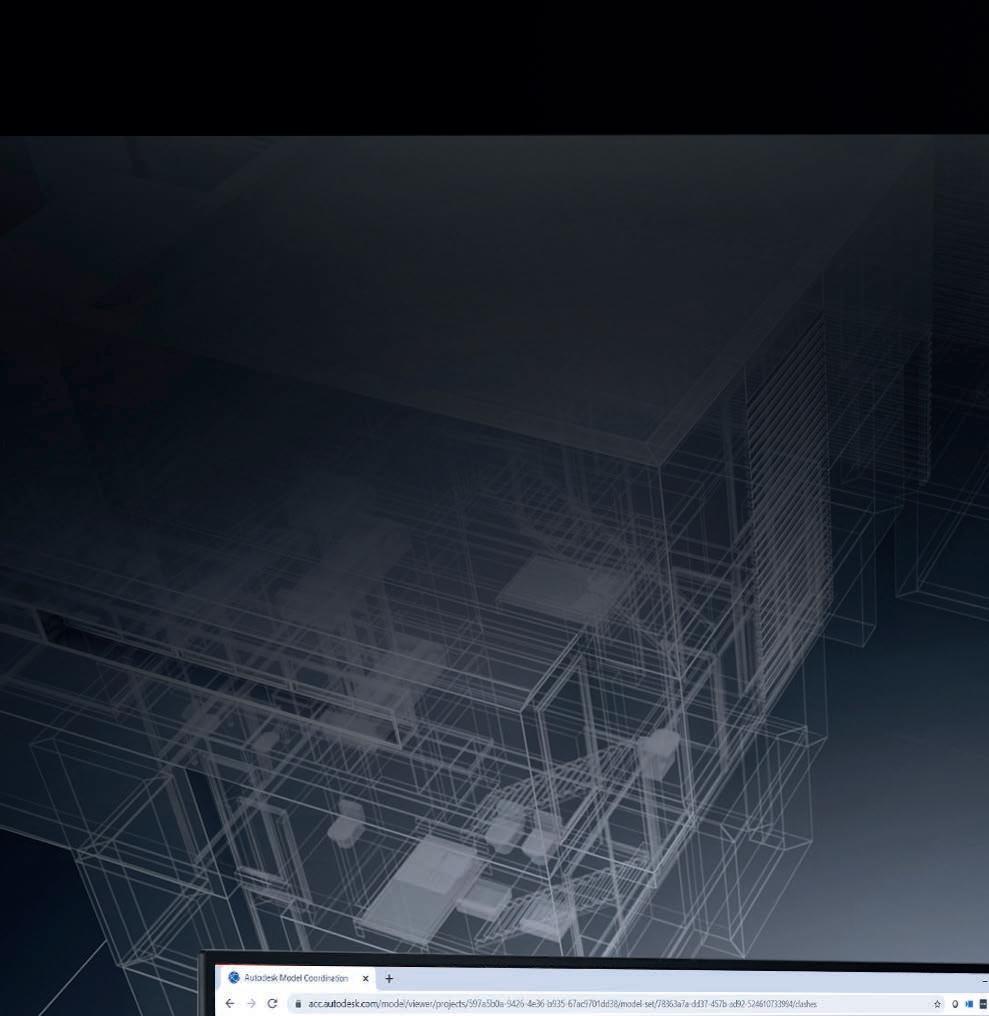
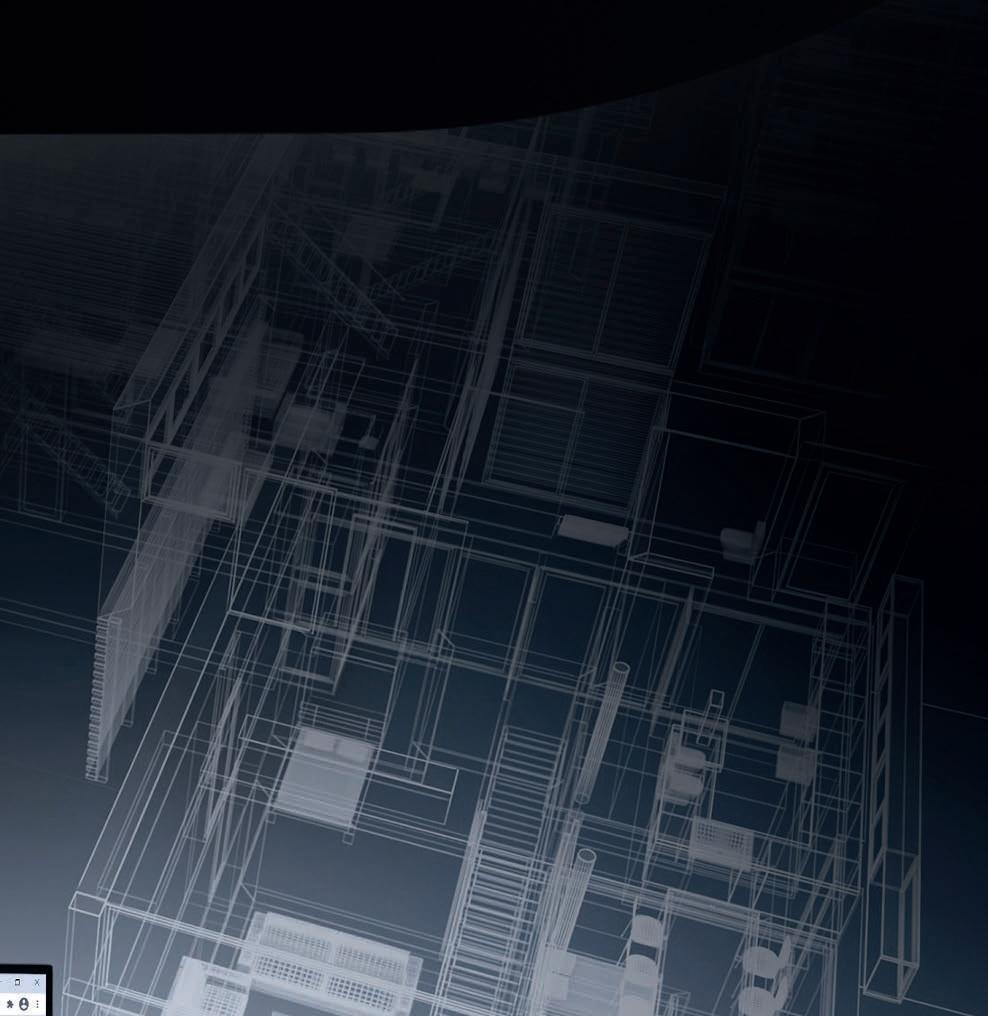
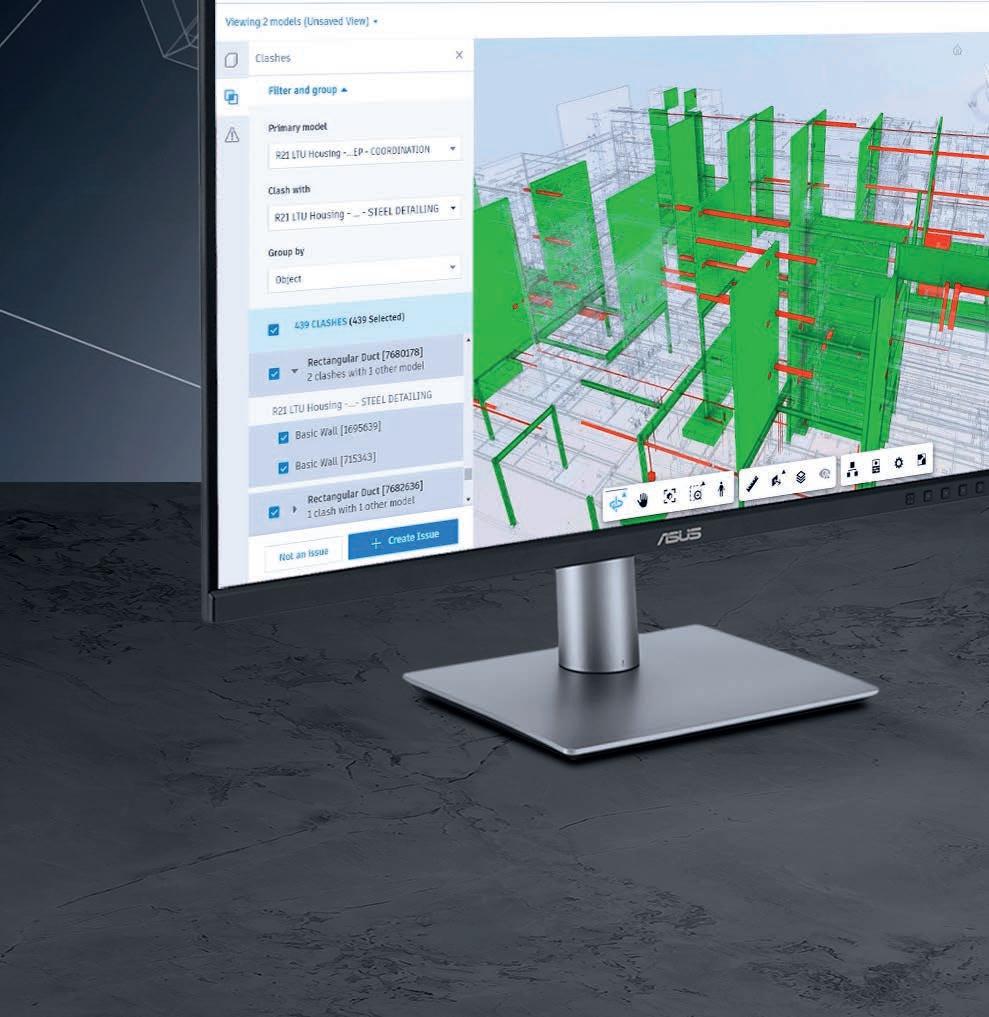
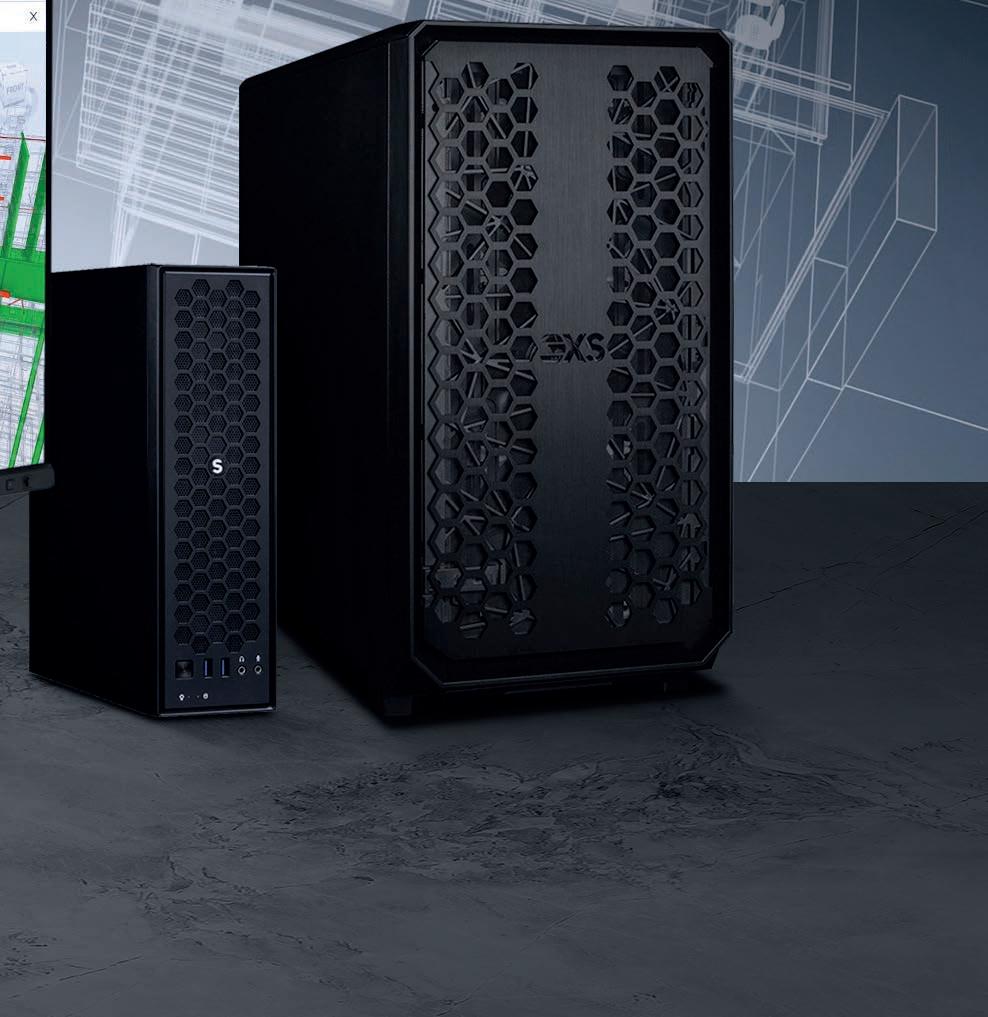







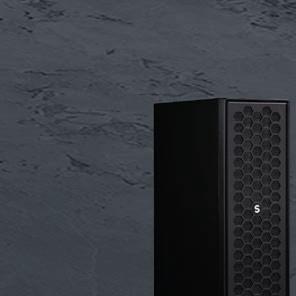

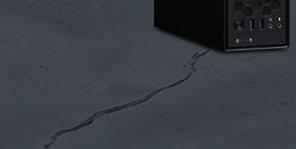
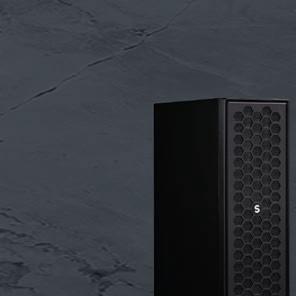




Full-scale performance in a small-scale package Save on space without compromising the spec Choose your small form factor workstation • 01204 47 47 47 scan.co.uk/smallgfx 3XS GW-CAD A120C Micro LN127718 • Intel Core i7 13700F • 16GB DDR4 • 12GB NVIDIA RTX A2000 • 1TB M.2 SSD • Microsoft Windows 11 Pro • 3 Year Premium Warranty 3XS GW-CAD A124C Micro LN136554 • Intel Core i7 13700F • 32GB DDR4 • 20GB NVIDIA RTX 4000 SFF • 1TB M.2 SSD • Microsoft Windows 11 Pro • 3 Year Premium Warranty £ 1,599.99 INC VAT £ 2,399.99 INC VAT



































































































 REFLEX ARCHITECTS KINEUM, SWEDEN REFLEXARK.SE
PHOTO: MARKUS ESSELMARK
REFLEX ARCHITECTS KINEUM, SWEDEN REFLEXARK.SE
PHOTO: MARKUS ESSELMARK


















































